




Editor: Edward Rosenthal
Bloodstock Editor: Nancy Sexton Design/production: Thoroughbred Group
Editorial: 12 Forbury Road, Reading, Berkshire RG1 1SB editor@ownerbreeder.co.uk www.theownerbreeder.com
X: @TheOwnerBreeder Instagram: theownerbreeder
Advertising: Giles Anderson
UK: 01380 816777
IRE: 041 971 2000 USA: 1 888 218 4430 advertise@anderson-co.com
Subscriptions: Keely Brewer subscriptions@ownerbreeder.co.uk 01183 385 686
The Owner Breeder can be purchased by non-members at the following rates:
1 Year UK £60 Europe £90 RoW £120
The Owner Breeder is owned by the Racehorse Owners Association
Editorial views expressed in this magazine are not necessarily those of the ROA or TBA
Our monthly average readership is 20,000
Racehorse Owners Association Ltd 12 Forbury Road, Reading, Berkshire RG1 1SB Tel: 01183 385680 info@roa.co.uk • www.roa.co.uk
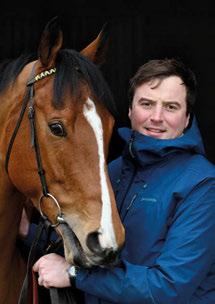
The rich variety of British racing also extends to its many training centres dotted up and down the land. It’s difficult to imagine a more tranquil environment than Middleham in which to train thoroughbreds.
For a visitor from the south more used to the function of Newmarket, the drive from Northallerton to Coverham, into the Yorkshire Dales, is a genuine delight. It is no surprise that trainer Ed Bethell, this month’s Big Interview ( pages 32-35 ), is thrilled with his decision to base himself at his family’s Thorngill stables.
“When I thought about starting training, I always believed that Newmarket was where I had to be in order to be a success,” Bethell told me when I visited him last month. “Then I worked in Newmarket and although the facilities are fantastic, it’s very busy and wasn’t really an environment that I wanted to train horses in.
“Up here, you barely see another string. It’s open, it’s the north, and it’s home. When I came to the realisation that Newmarket wasn’t the be all and end all, and you look at how Karl Burke, Richard Fahey, David O’Meara and the Johnstons have done, those guys have basically started from a similar position and created fantastic businesses.
“People now understand the wonderful environment that horses can be trained in at Middleham.”
Since succeeding his father James ahead of the 2021 season, Bethell has rapidly made a name for himself, posting impressive figures and hitting the bullseye on the biggest stages in the sport.
Regional, a gelding sourced for the princely sum of 3,500 guineas, captured the 2023 Group 1 Sprint Cup at Haydock – truly a fairy-tale success for his trainer and owners the Future Champions syndicate – while Mickley claimed the Britannia Handicap at Royal Ascot last year, a triumph
Edward Rosenthal Editor

that saw increased interest in Bethell Racing.
With current stable numbers topping the 100-mark, and having assembled an impressive roster of owners, what is next for the upwardly-mobile trainer? Perhaps wisely, he’s loath to go into too much detail about future targets, yet there’s no doubting his ambition and desire to continue to keep Middleham’s name in lights.
“A Classic would be the next thing to try and knock off the list. But how many Classics have been won from the north of England?” he says. “That is the challenge.
“Andrew Balding has proved more than
“It’s difficult to imagine a more tranquil environment”
anybody that you can be on your own and fight for the championship. The same goes for Ralph Beckett.”
The new Flat turf season is now underway, having commenced with the Lincoln meeting at Doncaster, yet there’s little doubt the opening weeks of the campaign are somewhat subdued, especially compared to neighbours Ireland and France, where a number of Pattern races have already been staged.
This month our Think Tank jury, featuring Eve Johnson Houghton, Jack Channon, Andrew Cooper, Sam Sangster, Lord Grimthorpe and George Baker, look at ways to strengthen the domestic scene and make the start of the Flat turf year less disjointed ( pages 87-88 ).


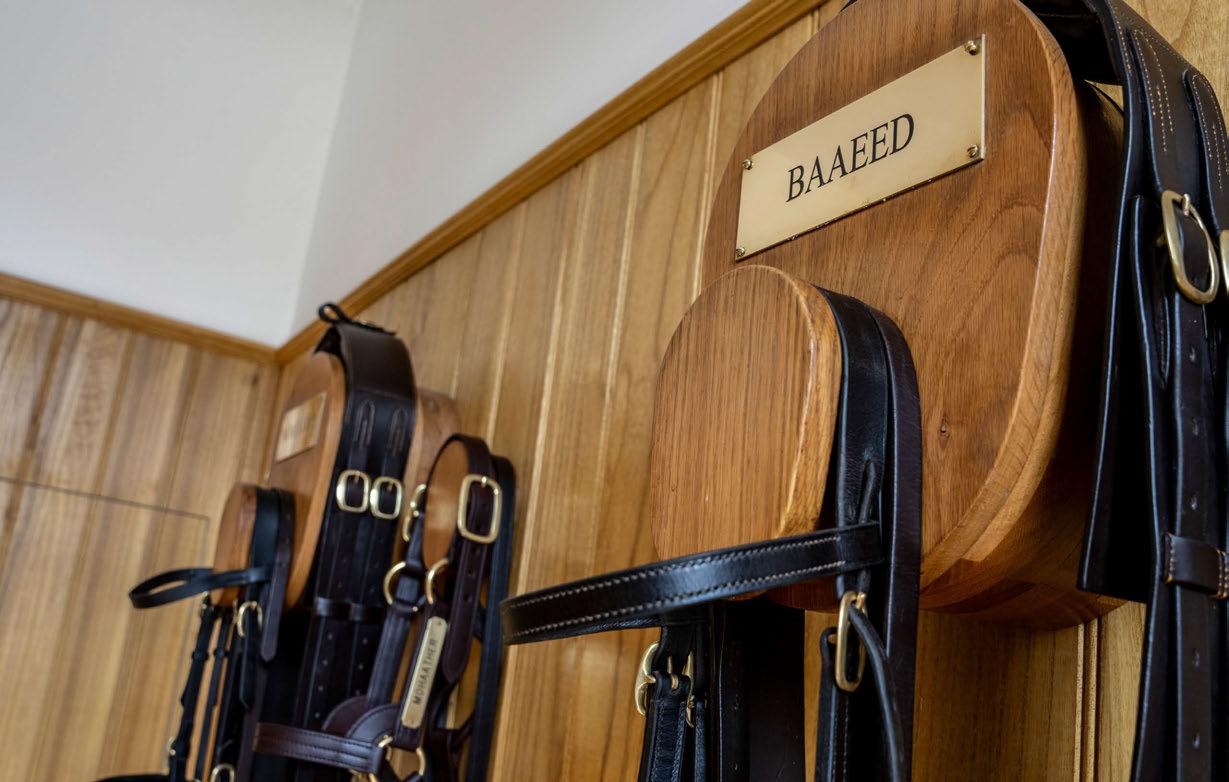
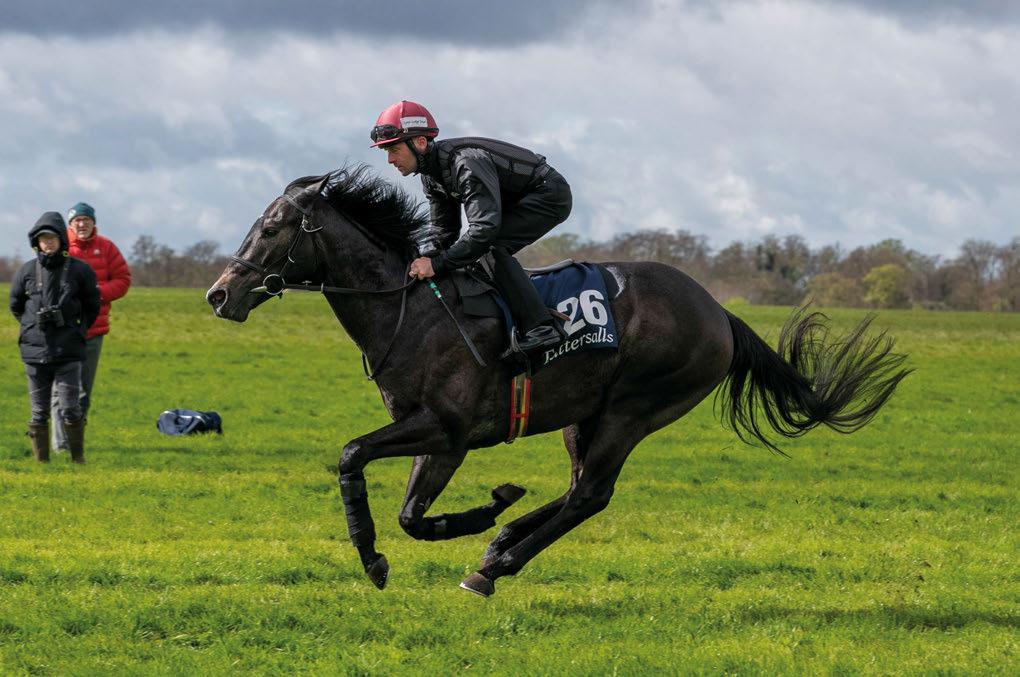
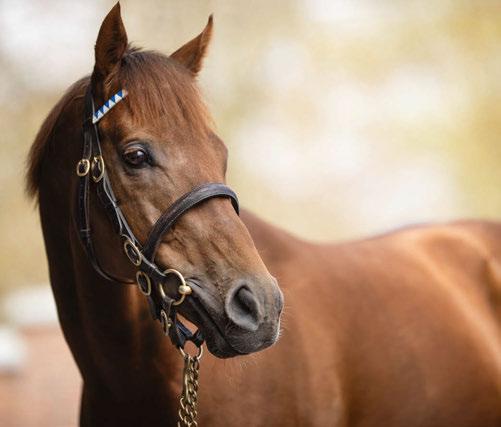
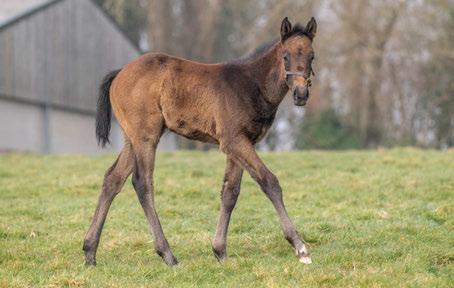
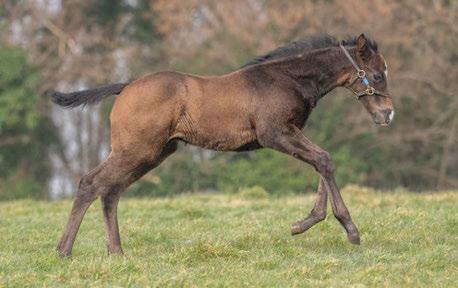
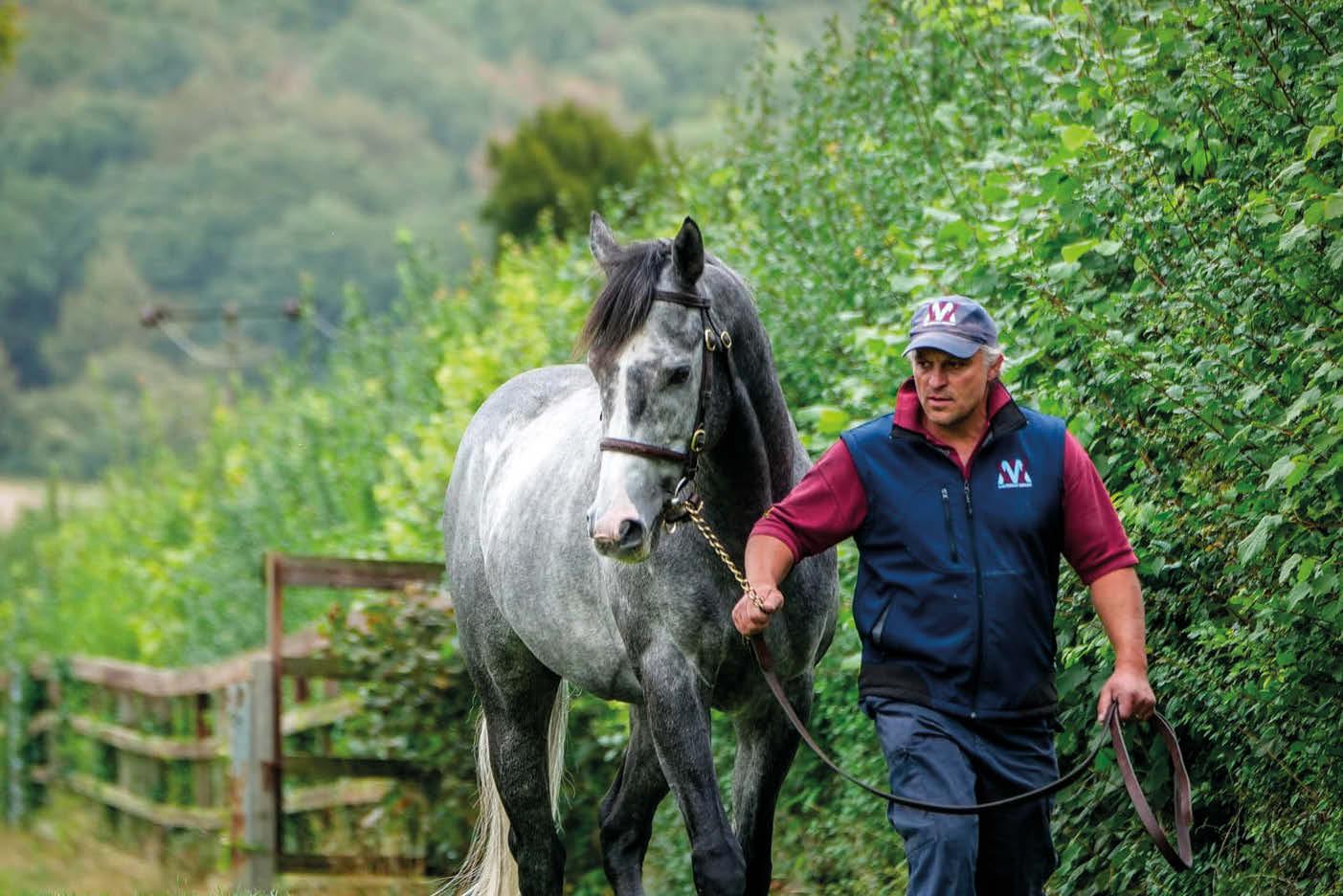
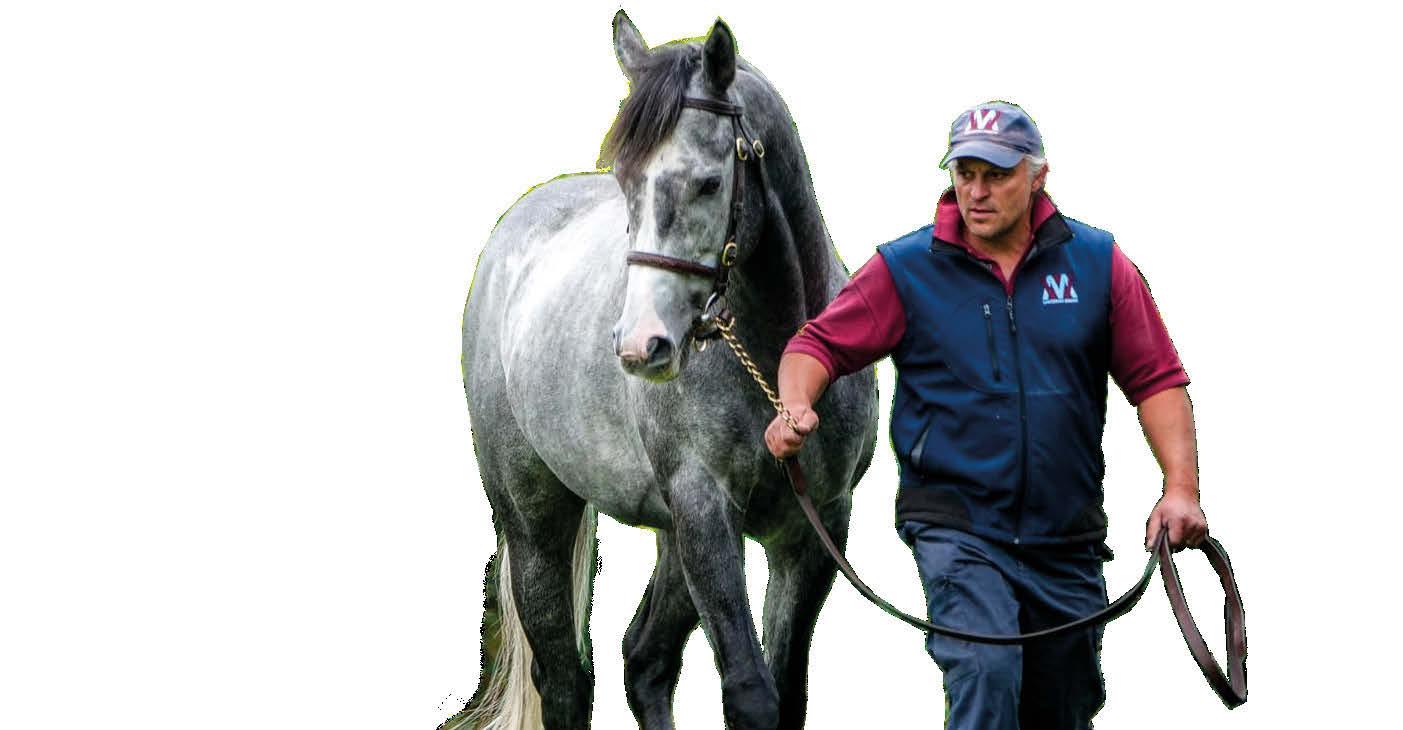


At the ROA, we’re committed to listening to what matters most to Owners.
Which is why we will shortly be inviting all Owners, ROA members and Racegoers Club members to share their views on ownership with us, with our Ownership survey.
Your feedback will play a vital role in shaping the future of ROA membership, our benefits and services, whilst ensuring we’re advocating for your interests across the industry.
Look out for the invitation to complete the survey in your inbox shortly.
The Cheltenham Festival again delivered some enthralling racing action and great stories to go with it. Perhaps the most remarkable was the winner of this year’s Champion Hurdle, Golden Ace. The seven-year-old was a candidate for the mares’ race given that the Champion Hurdle contained red hot favourite Constitution Hill, last year’s winner State Man and the Irish star Brighterdaysahead.
Golden Ace’s trainer, Jeremy Scott, was inclined to head for the potentially easier mares’ race, yet her owner, Ian Gosden, stayed true to his dream and made the big call – and as we now know, the 25-1 shot achieved the remarkable feat of winning the Champion Hurdle. Congratulations to all involved, especially Mr Gosden.
There have recently been attempts to sign up trainers to a scheme that would see them committing to cease running the horses they train at certain racecourses. Whilst the plan seems to have now been shelved, it had one major flaw. In most cases the trainer does not own the horse, the owner does and as such has the final say on where the horse runs. The story of Golden Ace’s remarkable achievement is not a direct example, but it is a timely reminder that the owner pays the bills and should call the tune.
The industry governance structure has participants in one corner and racecourses in the other. There has always been an inherent imbalance in this grouping. Our bedfellows in the Thoroughbred Group – stable staff, jockeys, trainers and breeders – are mainly the groups who we employ, either directly or indirectly, yet when it comes to decision making, we sit as equals. The removal of the veto in November 2023 has made tensions easier to deal with, but they still exist.
The Thoroughbred Group has a common goal in the desire to agree a workable and fair commercial partnership with racecourses, but in many other aspects our ambitions and goals are not aligned. This year must see real progress regarding the commercial partnership approach, or a different avenue will be needed to secure a lasting and meaningful distribution mechanism for the revenues that flow into the sport.
It is now clear that the only route to levy reform is through some form of voluntary agreement with the bookmakers, however, with no levers to pull, it is not looking good. We need an industry strategy that can tackle the levy as well as affordability and antimoney laundering checks and deliver meaningful change.
Cheltenham betting turnover was slightly up on last year and with the increased margins and how the results panned out, the bookies will have made significant profits from the week. Whilst the results helped, the average price of the favourites across the 28 races was 5-2 compared to the average price of the winners at 12-1. That familiar cry of racing not being a key component of bookmakers’ offering is less believable than ever.
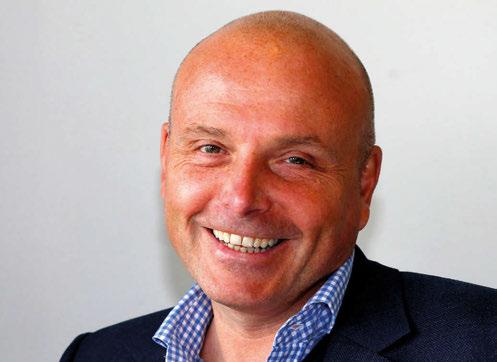
The industry really needs to get on the front foot as blackmarket betting is increasing, while there is no logic to the ongoing affordability and anti-money laundering checks promoted by the Gambling Commission. Despite all this, racing is providing a highly profitable business for the betting industry.
A huge amount of work has been completed on the next version of the Premier racing concept and we are closing in on decision time. In my view there is a huge opportunity that the industry needs to exploit. Not only could we uncover a game-changing new income stream, but we could also be looking at turbo-charging existing revenue streams whilst at the same time releasing funds for core racing and, crucially, National Hunt.
“We could turbo-charge existing revenue streams while releasing funds for core and NH racing”
Drilling down into the data pack provided by the BHA, there is no doubt that the one area of our sport that is under the most pressure is jump racing. The number of horses in training, number of races, field sizes and prize-money are all lagging. Funding released from developments elsewhere will enable investment in this area which can begin to turn the ship around.
Finally, in 2022 the BHA announced a streamlined fee structure for owners. The new structure was linked to the establishment of Racing Digital, which is well behind the original target launch date. If the new platform for owners is to be delayed further, then the new BHA fees as agreed in 2022 must be released to ensure that owners’ requests are answered and whilst we await the new tech capabilities, the most important audience of owners will receive a streamlined charging approach that is long overdue.

The TBA is all too aware of the increasing cost pressures that the breeding industry is facing daily; inflation on its own would be enough, but successive governments have added considerably to the debit side of a P&L. Brexit, for example, hasn’t provided any upside but considerable downs as the exit from a Customs Union has increased both paperwork and the costs of transporting horses between the UK, Ireland and France, having previously relied upon the Tripartite agreement to facilitate horse movements.
That same Brexit decision has removed what was a strong buyer demand for some of the more accessibly-priced yearlings to European countries with developing racing industries – adding £1,500 - £2,000 just to get these horses out of the country makes the whole idea unsustainable and therefore it is not surprising that these are now bought elsewhere within the EU.
Our government have not made it any easier by introducing the National Insurance increase and the uplift in minimum wage. While the latter needed doing, it has presented additional challenges to businesses. It is difficult to listen to talk about economic growth as the way out of the UK’s problems but then see significant sums added to payroll, while extra legislation around employment will inevitably add to the cost base and will see less jobs being available and more benefits payable.
Furthermore, the changes to inheritance tax, which now includes agricultural land, is asking serious questions of those family-owned farm and horse-breeding businesses the length and breadth of the country. There are some encouraging signs around this subject at least as the TBA has engaged with the National Farmers’ Union and conducted direct interviews with some of those impacted. Strong representation has persuaded the Treasury that they should at least listen, and a meeting is being arranged.
The above is a very long way around of bringing your attention to a letter recently issued by the TBA to all breeders in respect of our plans around the aftercare of our thoroughbreds and yet another ask to put your hand in your pocket to contribute to the voluntary foal levy. Some explanation from me is appropriate.
Firstly, for the industry as a whole, a full solution to provide for the welfare and aftercare of all thoroughbreds we breed and race is non-negotiable – everyone can agree on that and once we do, it’s the same old question then of how this is structured and funded. There is a plan and when delivered it will provide and pay for a solution that is fit for purpose. This is an all-industry initiative, with all major participants paying their corner, with increased contributions already being made and more formal arrangements to be fixed from 2026 onwards.
For the breeding sector, this is being carefully considered following the recent announcements made by the sales houses
Philip Newton Chairman

and online sales platforms of a matched mandatory levy placed on both vendors and purchasers, along with the increased contribution from owners, both of which will incorporate breeders.
More formalised plans are being developed to introduce a standardised levy for every foal born in Britain from 2026 onwards, with the distribution of funds generated being given careful consideration. Full transparency and accountability are essential to be certain that the industry is paying appropriately and that initiatives are having maximum impact. As such, assessing the structure and strategy to be implemented by Retraining of
“A solution to provide for the aftercare of all thoroughbreds we breed and race is non-negotiable”
Racehorses (RoR) in close alignment with the Horse Welfare Board will be a priority for the TBA over the course of this year.
To reach this point, 2025 must be paid for and that will be achieved from the voluntary donations made by breeders during the foal registration process (an opt-in tick box).
As I have said before, failure to do something will inevitably mean that a solution is imposed upon the industry, a situation that must be avoided at all costs as not only would that likely prove much more expensive, but the optics for the industry would be negative in the extreme.
I started this column with the recognition of the increasing cost base and the uncertainties of returns in both the commercial and racing industry, but welfare/aftercare is a cost we should willingly want to meet, and I am sure that all breeders will agree upon that.
Whilst the TBA cannot always change the dial upon costs, we are working hard to secure more funding and lobbying loudly with the message that without the breeding industry there is no racing industry. There are the prospects of a sea change in the industry and no stone is being left unturned to achieve this goal.
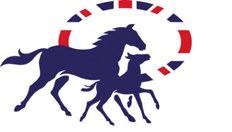
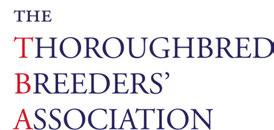
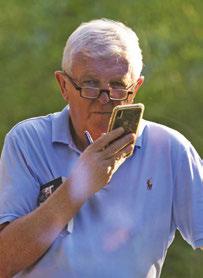
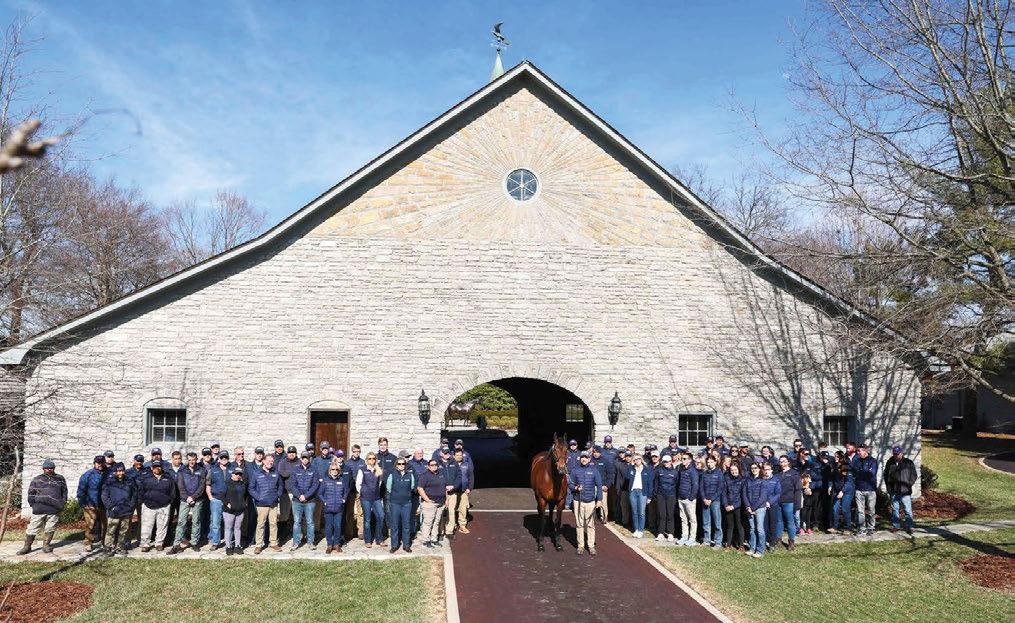
Clem Murphy, a pivotal member within the Coolmore team, passed away last month at the age of 75 following a short illness.
Murphy will not only be missed by Coolmore but also by all those who knew him in the outside racing world. One of the most widely respected figures in the industry, the Limerick native possessed an intricate understanding of the business, especially when it came to stallion deals and syndication.
He was also the Coolmore representative on the Board of the Breeders’ Cup and formerly Chairman of the Breeders’ Cup racing and nominations committee.
Murphy joined Coolmore in 1978 and therefore had a first-hand view of its rapid international expansion under John Magnier, ranging from the championship reigns of Sadler’s Wells and then his son Galileo to the high-profile acquisitions of Wootton Bassett as well as the American Triple Crown winners American Pharoah and Justify.
He also played a major role in the syndication of Fusaichi Pegasus; the Kentucky Derby winner retired to Coolmore’s Ashford Stud in 2002 upon a reported valuation of $70 million, then a record amount.
Magnier led the tributes, saying: “We count ourselves extremely lucky to have had Clem with us at Coolmore since the outset. He soon became part of our family and his friendship was treasured by us all.
“He had an unparalleled knowledge of the global bloodstock market and a great interest in the sport of racing. Firm but always fair, he was an extraordinarily clear thinker who could always find solutions where others only saw problems.
“A family man through and through, I will miss him greatly, as will all who had the pleasure of knowing him. Clem had no enemies and the respect of all, a perfect example for us all to follow.”
A statement from Breeders’ Cup Ltd read: “We are deeply saddened to learn about the passing of Clem Murphy, a valued and long-serving member of our
Board of Directors.
“Clem joined our Board in 2006 and served with unwavering dedication and passion for 20 years. During his tenure, he played a pivotal role in the international growth of the Breeders’ Cup World Championships and was instrumental in the expansion to a two-day festival of racing with purses and awards of more than $34m.
“As co-Chair of the racing and nominations committee, Clem was a driving force behind the expansion of the Breeders’ Cup international stallion programme and played a key role in incorporating major international races into the Breeders’ Cup Challenge Win & You’re In Series.
“Clem’s wisdom, insight, strong will, and unwavering commitment to our industry will be deeply missed. He was not only a respected colleague but also a dear friend to many within our organisation. We extend our heartfelt condolences to his family, friends and the entire Coolmore team during this difficult time.”
Murphy was also a successful breeder, primarily with Tom Gaffney with whom he bred multiple Group 1 winner Alcohol Free and Middle Park Stakes runner-up Castle Star.
Murphy is survived by his wife Barbara and children Alix, Lauren and Michael John.
The Thoroughbred Breeders’ Association (TBA) is on the hunt for a new Chief Executive after revealing that Claire Sheppard will step down from the role this autumn.
Sheppard has been TBA CEO for eight years, having joined the organisation in 2017 from the Racecourse Association where she was Racing Director. Prior to that she was Chief Executive of Plumpton racecourse for five years.
During her tenure at the TBA, Sheppard has steered the Newmarketbased outfit through the challenging Covid period, overseen the development of the Great British Bonus scheme, which has to date paid out over £14 million to winning connections, and ensured that the breeding sector’s contribution to the economy is acknowledged by government. She also played a leading role in developing the sport’s industry strategy, part of which has included the current trial of Premier racing.
Sheppard said: “I am extremely proud of what the TBA has achieved for British breeders and the industry over the last eight years.
“I am very grateful to the TBA’s loyal and highly knowledgeable team who
have taught me so much during my time here and have been very fortunate to work alongside two committed Chairmen over that period, including Philip Newton and former Chair, Julian Richmond-Watson.
“It has been a huge privilege to lead the Thoroughbred Breeders’ Association during what has been a period of real change and challenge for the industry as the sport has developed and implemented shared strategies for a sustainable future. While there are still significant challenges ahead, I am confident we are moving in the right direction, and I will be leaving the TBA with the right Chair, team and Trustees to navigate these.
“I wish the Board every success in the future to ensure the contribution made by the British breeding sector is supported and acknowledged at both government and wider industry level and is recognised as fundamental to the growth and future sustainability of this wonderful sport.
“The TBA Chief Executive role is incredibly rewarding, however I feel the time is right for me to step back from a full-time career. I will remain with the TBA until a suitable replacement has
Newbury racecourse is offering a £50,000 bonus for any two-year-old that wins at the track and goes on to take the Dubai Duty Free Mill Reef Stakes in 2025.
This year’s Group 2 Mill Reef Stakes, run on Saturday, September 20, has also seen its prize fund boosted by £25,000 to £125,000. The £50,000 bonus –£40,000 will be paid to the winning owner and £10,000 to the racing staff of the winning trainer – is in addition to the purse.
Early entries for the Mill Reef Stakes, which has been won by the likes of Dark Angel, Ribchester and Harry Angel, close on Tuesday, July 29 (the international deadline is the day before). The six-furlong contest is the third of seven races on Dubai Duty Free International day, with ‘Hold Back the River’ singer James Bay set to perform live after racing.
The Group 2 Hungerford Stakes, run
over seven furlongs for three-year-olds and older horses on Saturday, August 16, has also had its prize find increased by £25,000 and will be worth £150,000 this year.
George Hill, Newbury’s Clerk of the Course, said: “We are delighted to be able to increase the total prize-money on offer for both of our Group 2 contests this Flat season by £25,000.
The additional investment in prizemoney by Newbury will see the Hungerford Stakes be run for a total prize fund of £150,000 and the Dubai Duty Free Mill Reef Stakes for £125,000. This highlights our ongoing commitment to increasing the prizemoney on offer to attract the best horses and guarantee competitive and compelling racing action.
“With the addition of the new £50,000 Mill Reef bonus initiative this year, we aim to be offering an even more attractive option for connections.

been identified and to allow for a smooth transition.”
TBA Chairman Philip Newton said: “The TBA has been very fortunate to have had Claire’s dedication and expertise at the helm for the past eight years. She has championed the interests of the breeding sector with determination and persistence, navigating challenges in a complex stakeholder and political environment.
“Leading an organisation at the top of any sport requires total commitment, focus, and enormous amounts of energy, and Claire has delivered all of these. I, and the TBA Board, would like to thank her and wish her all the best in the future.”
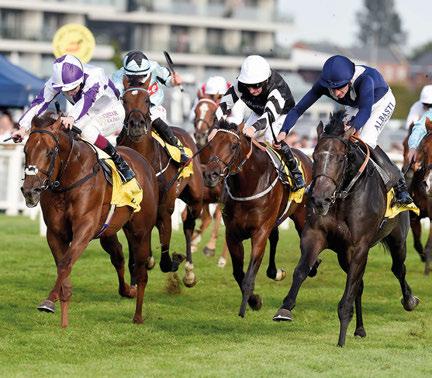
The Mill Reef Stakes purse is £125,000
We hope that through the introduction of the new bonus, as well as the addition of £25,000 to the total prize fund, connections seek to target the Mill Reef with any exciting two-year-olds that emerge as the season develops.”
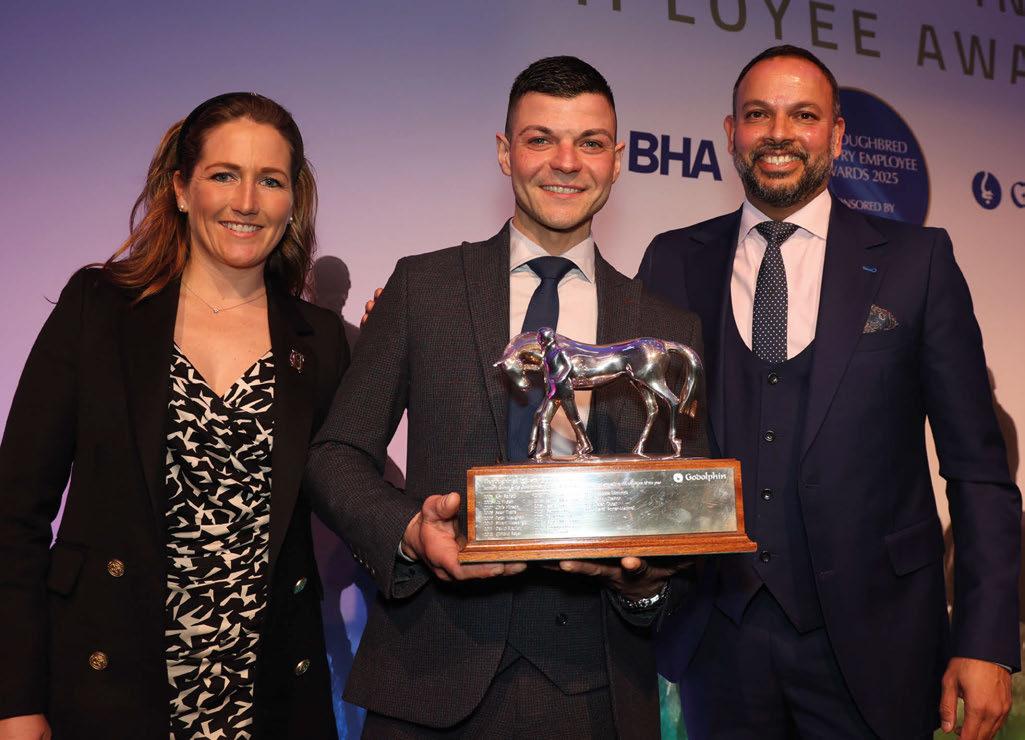
The Thoroughbred Industry Employee Awards was held in late February and Simone Meloni was named Employee of the Year at the popular event, staged for the second time at York racecourse.
Meloni, who works for trainer Nicky Henderson, was acknowledged for his positive attitude at work and superb horsemanship, having played a vital role in the care and development of dual Grade 1-winnng hurdler Marie’s Rock. He also collected the Rider/Racing Groom Award and scooped £30,000 overall, to be split with his colleagues at Seven Barrows.
In total, £128,500 was shared between the winners at the Thoroughbred Industry Employee Awards, sponsored by Godolphin, which was hosted by Rishi Persad and
featured special guest appearances from double-Olympic gold medallist Laura Collett and dual champion jockey William Buick.
Nick Luck, Chair of the judging panel, said: “Deciding this year’s Employee of the Year was as difficult a decision as I’ve known in this role. The judges deliberated long and hard, and Simone should be very proud to have come out on top in such an incredibly strong year.
“Ultimately, we felt that Simone is the perfect embodiment of what the Thoroughbred Industry Employee Awards represent. Throughout his discussions with the judges, Simone could not stop talking about his horses, and we were struck by the tailored approach he brings to dealing with each as an individual, from how he sets
their beds to how he rides.
“As well as being an outstanding horseman, his personality is utterly infectious. He wears a beaming smile while working and it was clear to see that his approach to his job makes a big impact, which is not insignificant at a yard where the pressure is always on.”
Roll of Honour
Employee of the Year and Rider/Racing Groom Award
Simone Meloni (Nicky Henderson)
Newcomer Award
Tyla Macfarlane (Andrew Balding)
Leadership Award
Ivo Thomas (Tweenhills)
Stud Award
Kelly Stevens (Littleton Stud)
Dedication Award
Jane Smith (John Ryan)
Community Award
Sally Lyons (Great British Racing)


Redweld Stables are leading designers, manufacturers and installers of stables and other equine products in Ireland and the UK. Ofering our designs in standard and bespoke sizes, we cater directly to the individual needs of our clients.
We pride ourselves on our reputation for the quality of our designs and workmanship and achieving customer satisfaction through our completed installations.
• Internal Stables
• External Stable Blocks
• American Barns
• Stable Fronts
• Stable Dividers
• Stable Doors
• Stable Windows
• Hayracks
• Swivel Feeders
• Washbays
• Equine Feeding Barriers
• Equine Stocks
For mid to large-sized projects, we ofer a turnkey design & build service. One point of contact to manage and deliver your project, efciently, on time and on budget. We are happy to ofer a 5-year warranty on all our products.

Scan here to visit us

Rachel King
Former UK-based jockey becomes the first woman to ride a Grade 1 winner in Japan on Costa Nova in the February Stakes at Tokyo.
Horse Welfare Board
New independent Chair being sought with Barry Johnson stepping down in June while there are positions available for three new independent members.
Frankie Dettori
Italian rider reveals he is filing for bankruptcy following unsuccessful efforts to resolve financial issues with HMRC.
Prince Sultan bin Mishal Al Saud
Saudi royal is removed from the BHA’s forfeit list after settling his £320,000 debt relating to four horses he had in training with Richard Hannon.

Raphael Freire
Amo Racing’s trainer moves in to a refurbished Freemason Lodge in Newmarket, previously the base of Sir Michael Stoute.
Gay Kelleway
Trainer pulls out of her move to North Yorkshire to team up with Ann Duffield on a joint-licence after the sale of her Exning stable fell through.
Rowley Mile
Newmarket racecourse, which stages the Guineas Festival on May 2-4, suffers damage to its turf and rails after hare coursers gained access to the track.
Nicolas Clément
Chantilly-based trainer who famously enjoyed Prix de l’Arc de Triomphe glory with Saumarez in 1990 is joined on the licence by his former assistant Flo Hermans.

Michael Hourigan
Trainer who enjoyed plenty of big days with multiple Grade 1 winners
Dorans Pride, Beef Or Salmon and Hi Cloy announces his retirement aged 77.
Irish 2,000 Guineas
Classic fixture at the Curragh in May is added to the World Pool roster, allowing for the commingling of pools on the card for the first time.
Yulong Investments
Stallions Shaquille and Soldier’s Call are purchased from owner-breeder Steve Parkin and will remain at Dullingham Park in Newmarket.
Ben Tappenden
Manager of Whitsbury Manor Stud since 2017 will return home to take on the role of General Manager at Cambridge Stud in New Zealand.
Kilbeggan Blade 26
Talented staying chaser won consecutive London Nationals at Sandown for the Tom George stable and was later successful in point-to-points for Michael Edwards.
Corbetts Cross 8
Winner of the 2024 National Hunt Chase at the Cheltenham Festival, also placed three times at Grade 1 level, suffers a fatal fall in the Cheltenham Gold Cup.
Roses In May 25
Dubai World Cup winner for Ken and Sarah Ramsey in 2005 went on to enjoy a successful stallion career at Japan’s Big Red Farm.
Springwell Bay 8
Gay Smith-owned novice chaser, winner of a valuable prize at Cheltenham on New Year’s Day, succumbs to injuries following a fall at the Festival.
Posse 25
Son of Silver Deputy, a Grade 2 winner on the track, sired dual Dubai Golden Shaheen winner Mind Your Biscuits, now a successful stallion in Japan.

Ronnie Bartlett’s chaser is retired age 11 having won 13 races, including the Grade 1 Savills Chase and National Hunt Chase at the Cheltenham Festival, and earned £450,000.

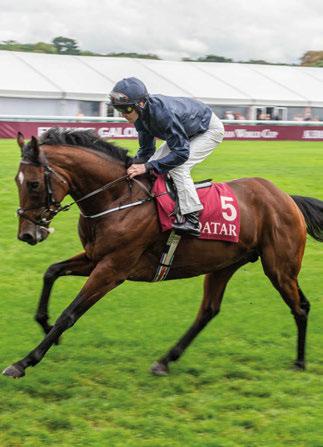
Ol’ Man River
Son of Montjeu whose oldest crop turned seven in January moves from Arctic Tack Stud to March Hare Stud in Surrey. His fee for 2025 is £1,500.
Group 1-winning son of Power starts his stallion career at Kiltown Stud in County Kilkenny having raced in Australia since late 2021.
Gainesway in Kentucky will stand the son of Gun Runner, wide-margin winner of the Grade 1 Santa Anita Handicap in March, upon his retirement.
Winner of the 2022 Kentucky Derby will relocate from Pennsylvania to Irish Hill & Dutchess Views Stallions in New York for the 2025 breeding season.
Richard Botterill 60
Renowned auctioneer with his family’s firm and later Brightwells and Tattersalls who was instrumental in establishing National Hunt sales at Cheltenham.
Patrice Wolfson 87
With husband Louis she raced 1978 US Triple Crown hero Affirmed and owned Harbor View Farm in Florida.
Ian Bare 94
Owner-breeder whose jumpers often carried the ‘Kentford’ prefix and who sat on the TBA’s National Hunt Committee for many years.
Clem Murphy 75
Much-admired senior member of the Coolmore team who joined the operation in 1978 and was regarded as an expert on global bloodstock.

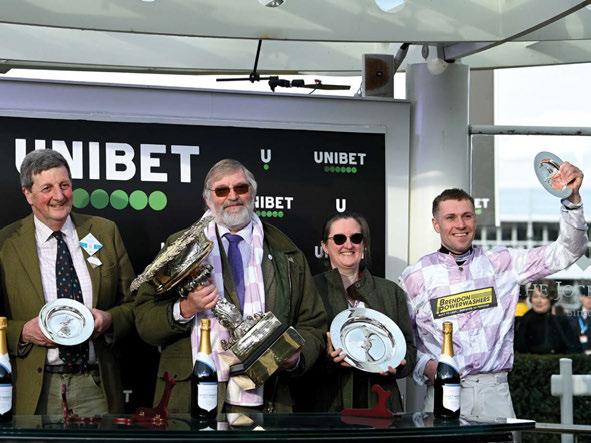
Paul Townend can only look on as Golden Ace and Lorcan Williams gallop towards glory in the Unibet Champion Hurdle, the highlight on the opening day of the 2025 Cheltenham Festival. Townend looked set to collect on State Man but the 2024 winner fell at the final flight – favourite Constitution Hill had departed four out –leaving the mare Golden Ace clear to take the Grade 1 prize for owner Ian Gosden (left, sunglasses) and trainer Jeremy Scott (next to Gosden).
Photos Bill Selwyn
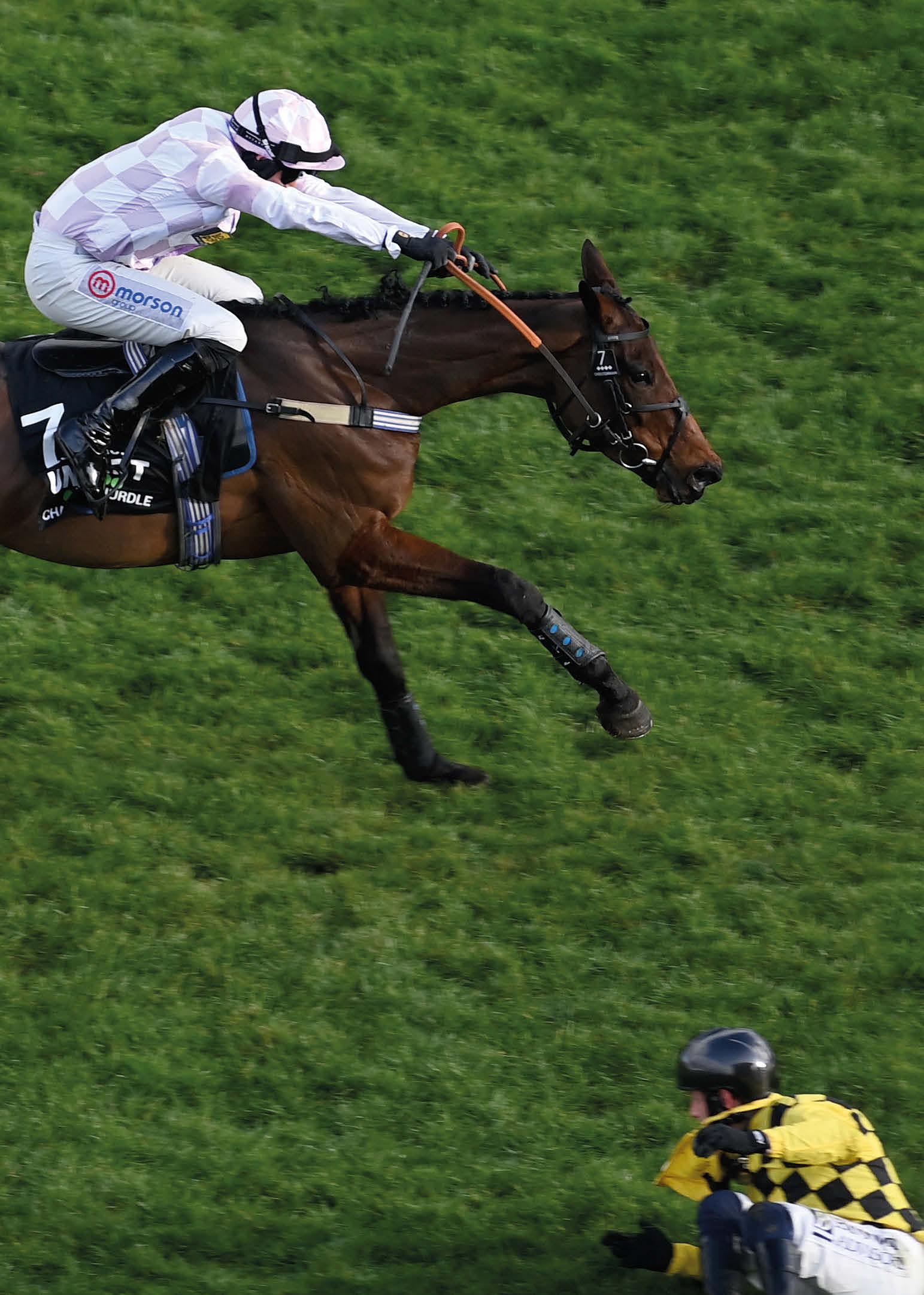
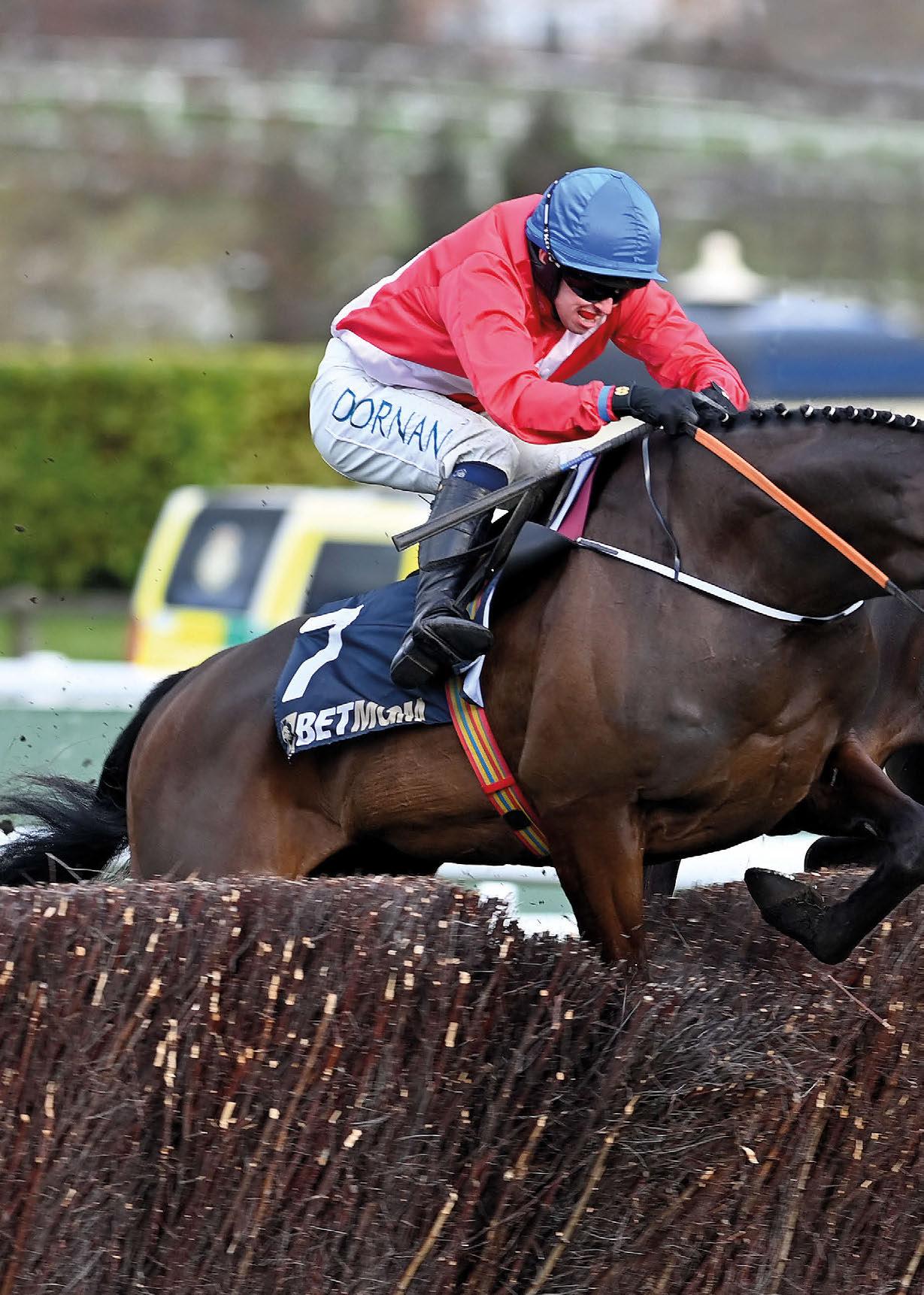

There were tears all round after Marine Nationale, on whom the late Michael O’Sullivan captured the 2023 Supreme Novices’ Hurdle, returned to the Festival to take the BetMGM Queen Mother Champion Chase under Sean Flanagan. Marine Nationale, owned and trained by Barry Connell (above, right), was left clear by Quilixios’s last-fence fall and galloped on powerfully up the Cheltenham hill to defeat Jonbon by 18 lengths.
Photos Bill Selwyn
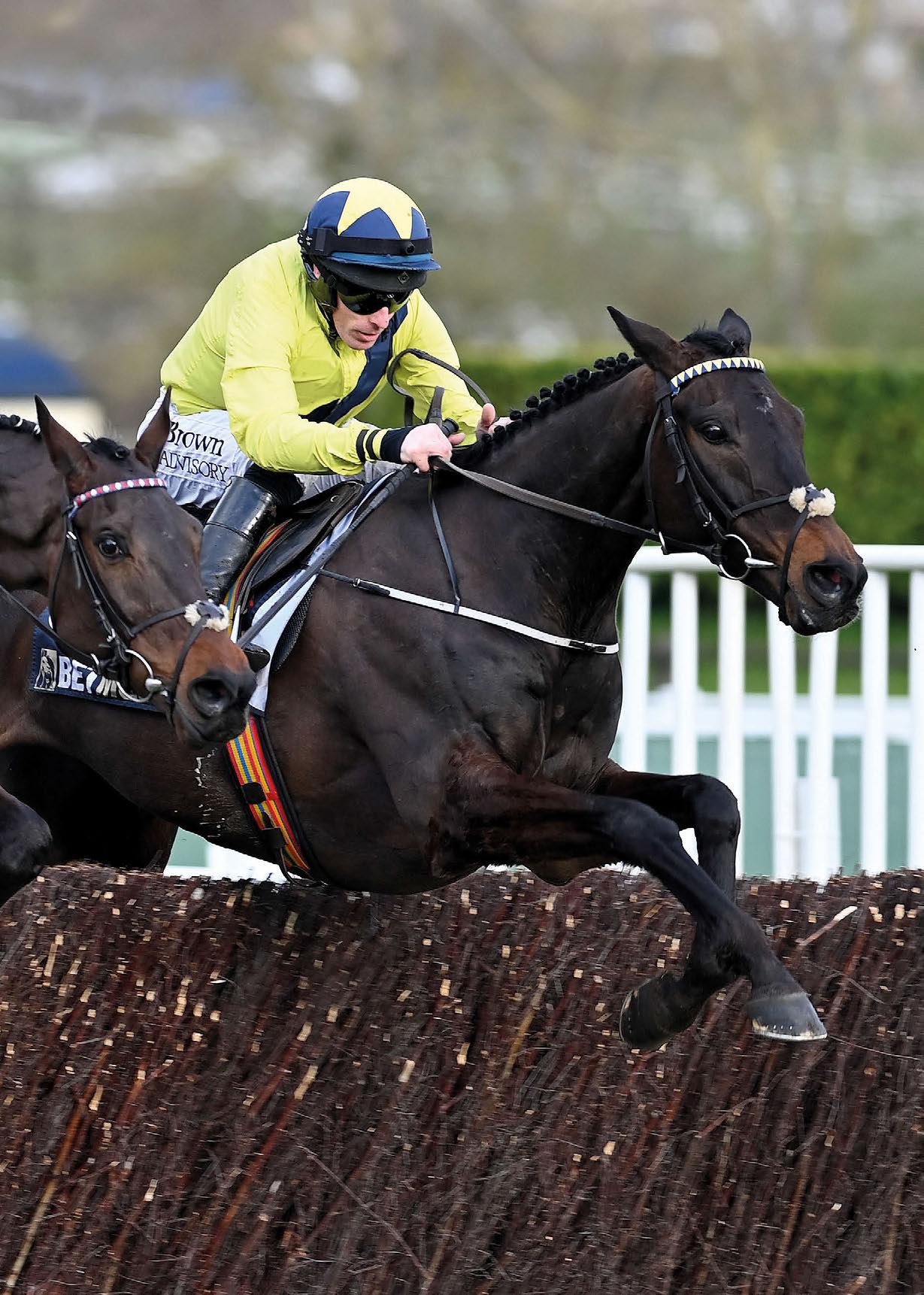
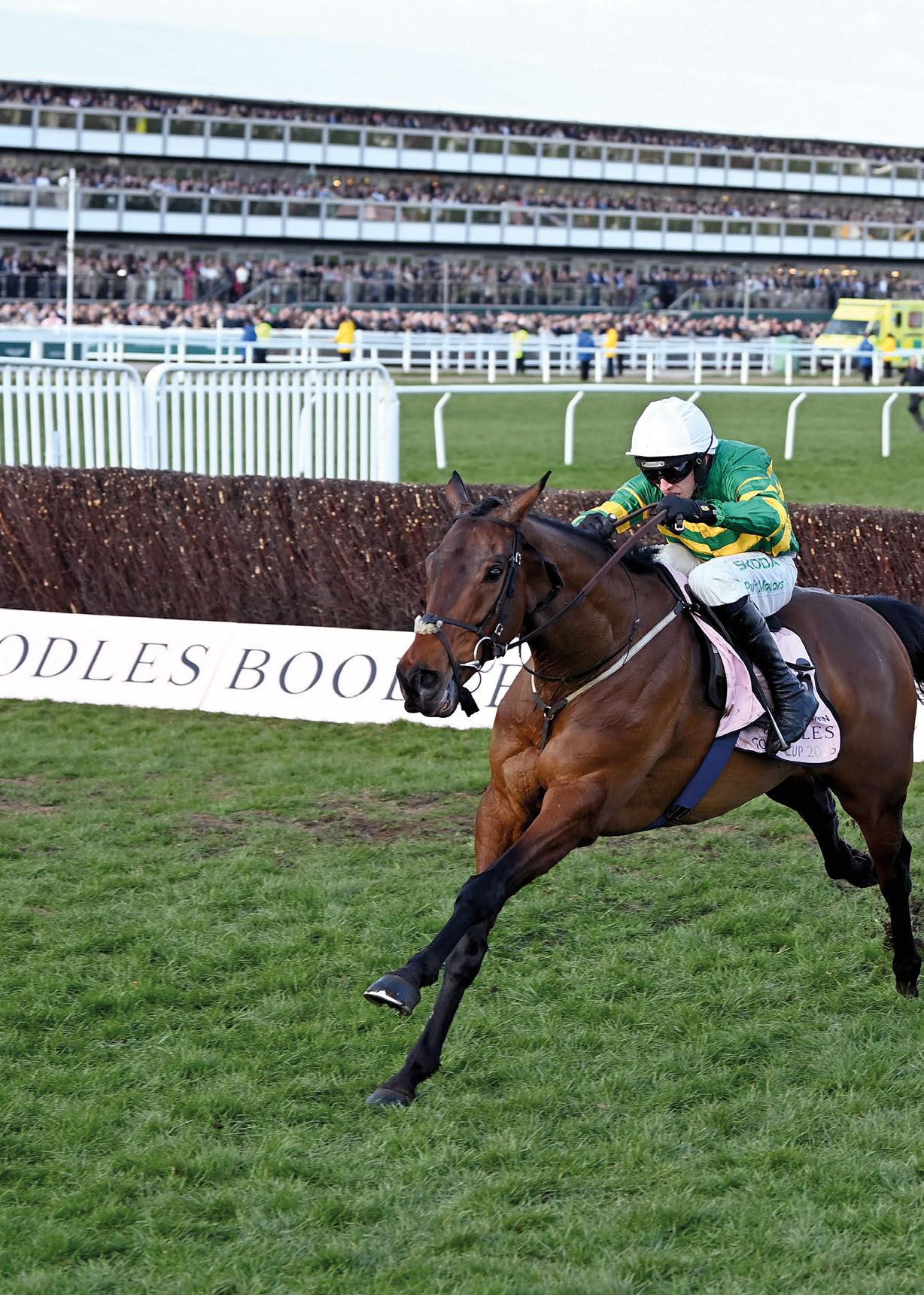

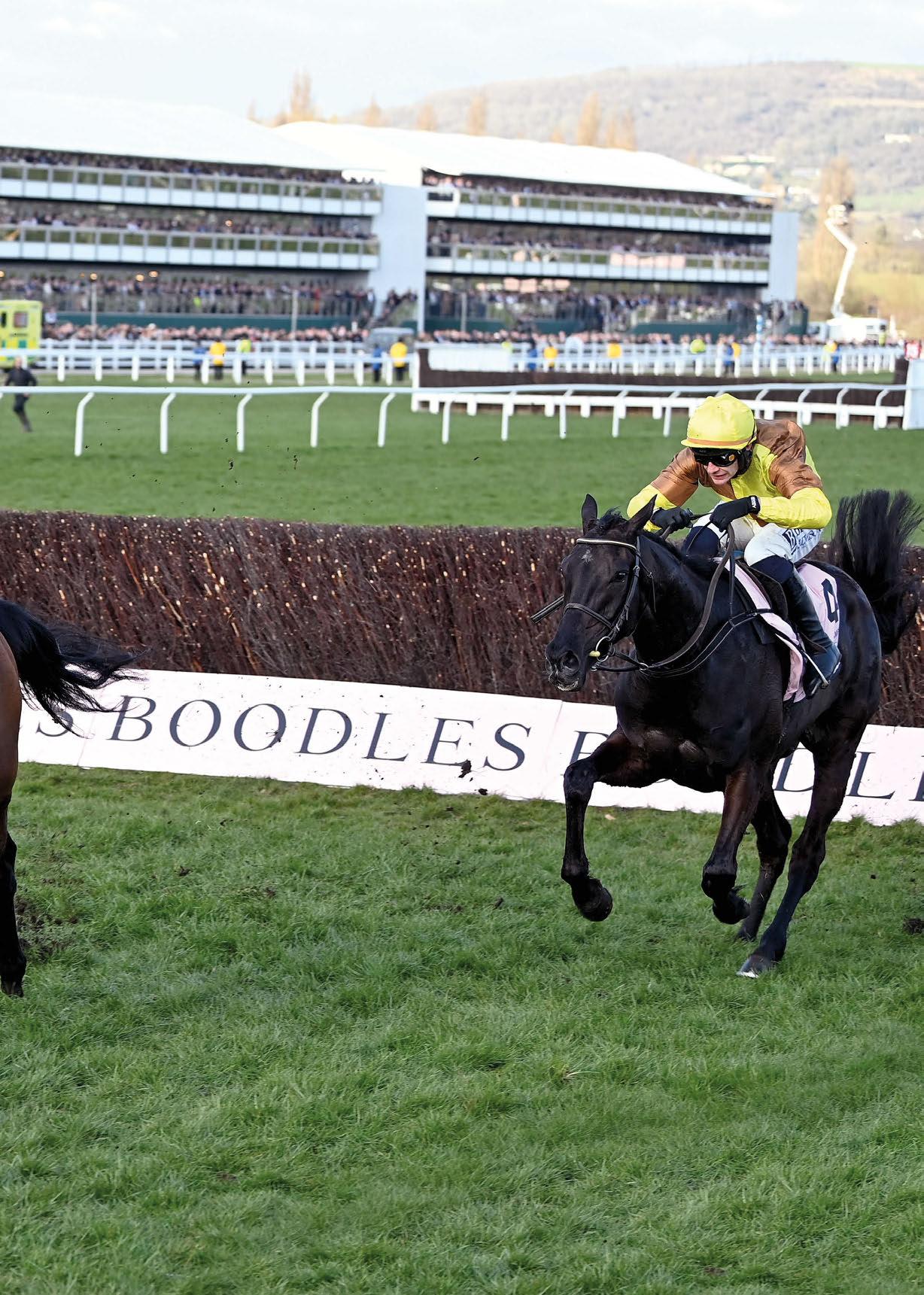
Galopin Des Champs’ bid for a third Boodles Cheltenham Gold Cup and immortality ended in defeat as Inothewayurthinkin was delivered right on cue by Mark Walsh to take the Blue Riband of jump racing. JP McManus’s seven-year-old chaser, trained by Gavin Cromwell, relished the 3m2f trip and decent going to take the prize by six lengths.
Photos Bill Selwyn
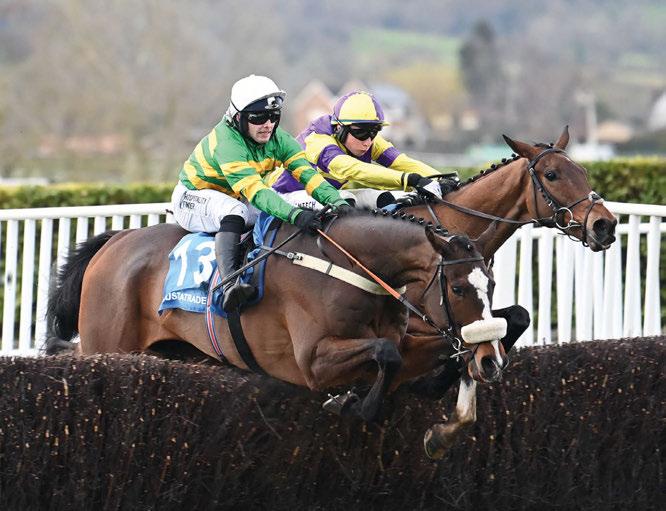



Left from top: JP McManus’s Jagwar and Jonjo O’Neill Jnr (nearside) recorded a ready win in the TrustATrader Plate for trainers Oliver Greenall and Josh Guerriero; the late John Hales’s silks were carried to victory by the Paul Nicholls-trained Caldwell Potter and Harry Cobden in the Jack Richards Novices’ Limited Handicap Chase; The New Lion (left) struck for Dan and Harry Skelton and new owner JP McManus in the Turners Novices’ Hurdle
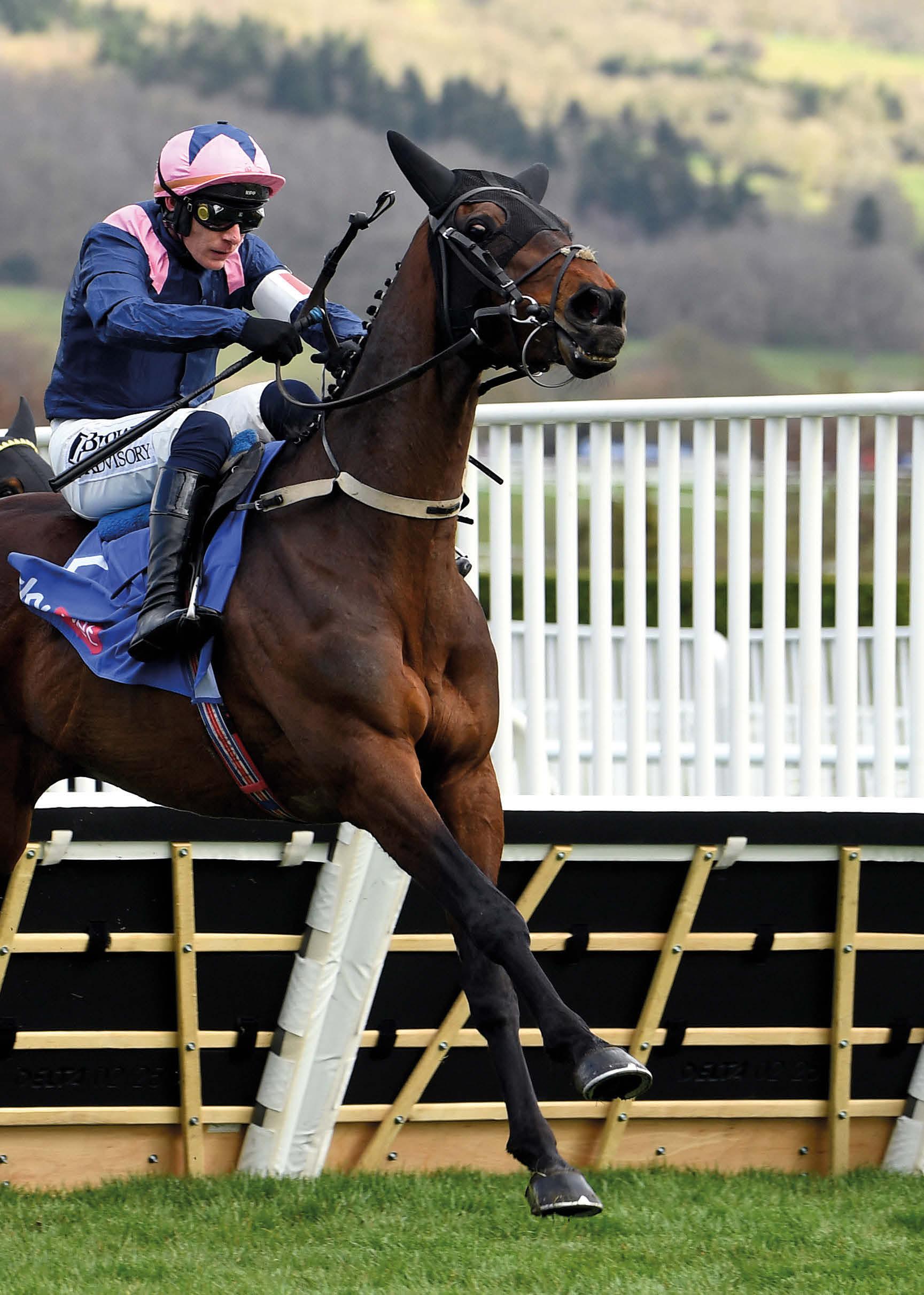

Kopek Des Bordes maintained his unbeaten record with a clearcut victory under Paul Townend in the Festival’s opening contest, the Michael O’Sullivan Supreme Novices’ Hurdle, run in memory of the jockey who tragically died in February. Whether or not the fiveyear-old’s future lies over fences will be debated by owners Monabeg Investments Limited and trainer Willie Mullins, who sent out ten winners over the four days.
Photos Bill Selwyn

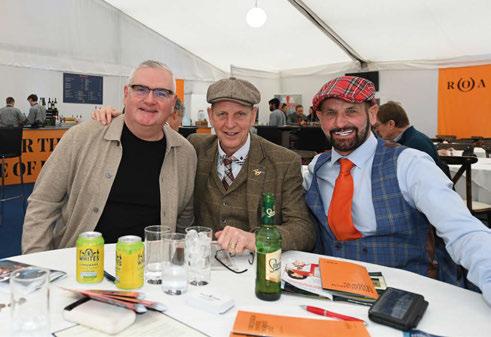
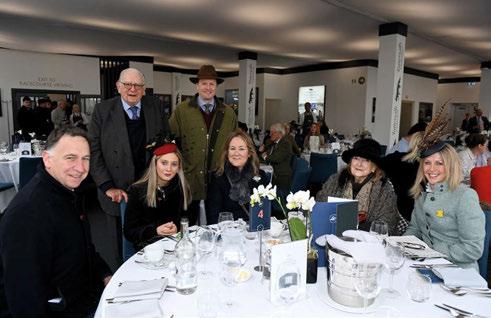

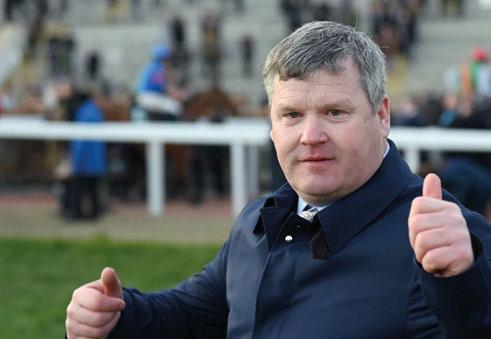
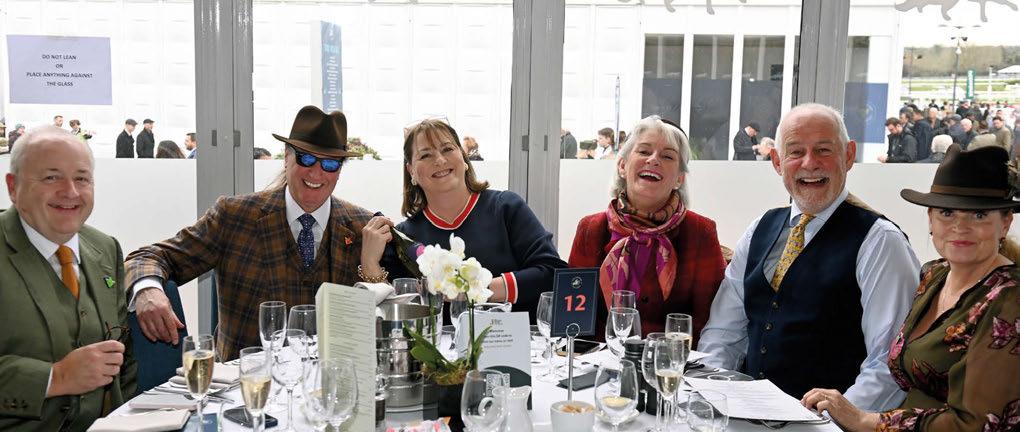
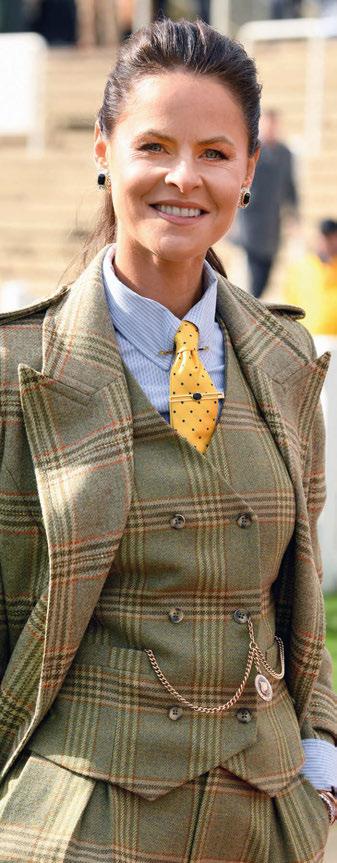
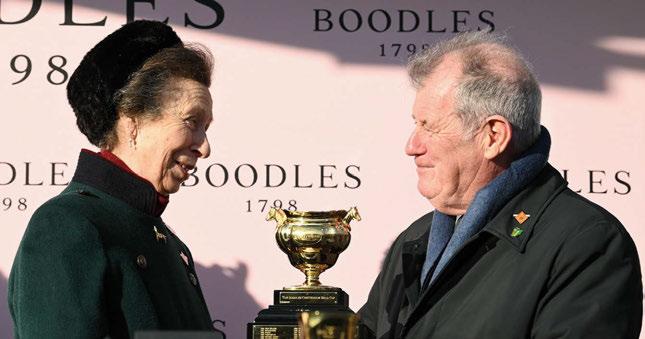
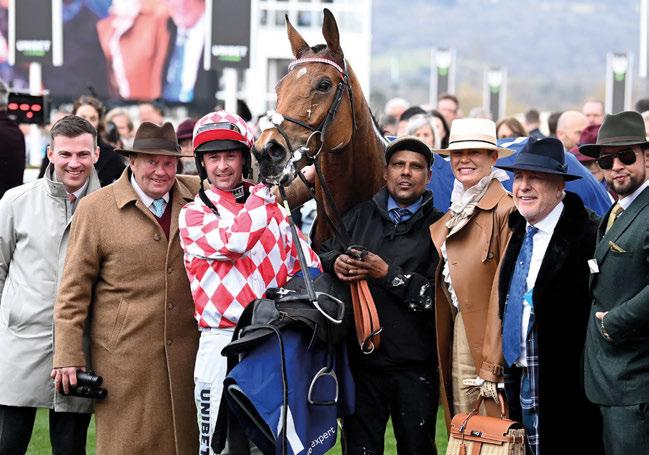
The extraordinary success of Willie Mullins – he captured ten races at Cheltenham last month to take his Festival total to 113 – has revolutionised National Hunt racing. With a methodical approach that blends traditional horsemanship with cutting-edge analytics, the Closutton maestro has created a template that ambitious owners and breeders would be wise to study. While few can match Mullins’ resources or expertise, his core principles offer valuable lessons for anyone looking to improve their prospects.
owner’s perspective: beyond writing cheques
Successful ownership in the Mullins model begins with a fundamental shift in mindset. It’s not merely about acquiring horses and delegating all decisions – it’s about strategic partnership.
“What separates the most successful owners at Closutton isn’t just their financial commitment,” explains a racing manager who places horses with Mullins. “It’s their understanding of the process and their willingness to embrace patience as a virtue.”
This patience stems from appreciating the meticulousness of Mullins’ approach. When a horse arrives at his yard, it undergoes a comprehensive evaluation that extends far beyond basic veterinary checks – examining stride patterns, joint flexibility, respiratory efficiency, and temperament profiling. Owners who understand this process are more likely to set realistic expectations.
The most successful owners in the Mullins system share several common traits:
• They understand their horse’s profile: rather than pushing for prestigious races prematurely, they recognise their horse’s physical and mental limitations.
• They embrace data-driven decisions: while traditional owners might insist on certain races based on sentiment or prestige, Mullins’ approach favours evidence-based placement.
• They accept flexible campaigning: the best owners understand that initial plans may change based on progressive assessment, rating considerations, and race conditions.
• They value communication: Mullins’ operation features “structured reporting systems with regular updates regardless of news significance” – owners who engage with this information make better partners. For prospective owners, this suggests a clear path: develop a basic understanding of rating systems, race conditions, and physical assessment criteria. This doesn’t mean secondguessing your trainer, but rather developing the vocabulary to engage meaningfully with their process.
The foundation of Mullins’ success begins long before horses reach his yard – it starts with acquisition. For breeders and owners looking to select potential winners, his approach offers valuable guidance. Mullins’ bloodstock operation prioritises specific elements that breeders should consider:
While many focus exclusively on fashionable sires, Mullins places

strong emphasis on dam lines with proven jumping ability. This maternal influence often proves more predictive of National Hunt success than paternal heritage.
“The dam contributes not just genetics but intrauterine environment and early behavioural patterning,” notes veterinary researcher Dr Emma Campbell. “Mullins’ emphasis on maternal lines is supported by emerging science on epigenetic factors in performance development.”
For breeders, this suggests maintaining and developing female families with proven jumping ability rather than chasing commercial sires. For buyers, it means looking beyond the first line of the catalogue page.
“It’s not merely about acquring horses and delegating all decisions – it’s about strategic partnership”
Mullins demonstrates clear preferences for specific conformational traits:
• Strong hindquarter development
• Clean, ample bone structure
• Correct limb alignment
• Appropriate size for anticipated race type
• Notably, his system shows tolerance for certain minor conformational issues based on compensatory strengths. This pragmatic approach recognises that the perfect specimen rarely exists, but functional athleticism matters more than textbook conformation. For breeders, this means selection decisions should prioritise functional traits over cosmetic ideals. For buyers, it suggests developing an eye for athletic potential rather than show-ring perfection.
Mullins’ acquisition channels reveal opportunities for owners at various investment levels:
• French programme: the AQPS (non-thoroughbred jumpers) system produces horses with solid foundations. While prices have increased due to British and Irish interest, value still exists in this market.
• Point-to-point circuit: the Irish points system remains a proven source of jumping talent, though increasingly competitive.
• NH store sales: Unraced young stock represents a higher-risk, potentially higher-reward approach.
• Flat recruitment: Selective acquisition of Flat horses with NH potential often yields value.
• “Different ownership ambitions require different acquisition strategies,” advises bloodstock agent David Minton. “Mullins’ diverse sourcing reflects an understanding that each channel offers distinct risk-reward profiles.”
For breeders seeking to apply Mullins’ principles, several strategies emerge:
1. Progressive training development
Mullins’ training structure – featuring foundation, development, and pre-race conditioning phases – offers a blueprint for breeders developing young stock. Rather than rushing development, a progressive approach builds sustainable athletic capacity.
This suggests breeders should:
• Establish systematic assessment protocols for young stock
• Develop young horses through clearly defined phases
• Collect and analyse developmental data to inform decisions
• Create appropriate physical challenges that build capacity without risking injury
• “The best breeders are essentially pre-trainers,” notes one successful National Hunt breeder. “They develop athletic capacity systematically rather than simply turning horses out and hoping for the best.”
2. Tailored temperament development
Mullins categorises horses into temperament types – ‘forwardgoing’, ‘thinking’, ‘sensitive’, and ‘bold’ – each requiring specific handling approaches. Breeders can apply this by:
• Assessing temperament early and consistently
• Creating appropriate challenges that develop mental resilience
• Matching handling approaches to individual temperaments
• Documenting behavioural responses to inform future breeding decisions
• “Temperament determinism is a myth,” explains equine behavioural specialist Dr Suzanne Millman. “Early experiences significantly shape adult behaviour patterns, giving breeders substantial influence over future trainability.”
3. Data-driven selection
Perhaps most valuable is Mullins’ embrace of performance metrics and longitudinal tracking. Progressive breeders now:
• Track key developmental metrics across generations
• Document maternal behaviour patterns that influence offspring development
• Record response patterns to specific management interventions
• Maintain databases of physical development patterns within families
• This information creates a valuable knowledge base that informs future mating decisions far more effectively than commercial trends or fashion.
core philosophy: systems thinking
Underlying Mullins’ approach is a fundamental recognition that success comes from the interaction of multiple systems –physical development, temperament management, placement strategy, and owner relationships.
For owners and breeders, the key lesson is integration. Rather than optimising individual elements in isolation, consider how decisions in one area affect outcomes in others.
The breeder who selects only for speed may produce horses ill-suited to jumping’s physical demands. The owner who pushes for prestigious races prematurely may compromise long-term development.
The most successful participants in National Hunt racing – like Mullins himself – recognise these interconnections.
“When you enter Closutton, you’re not just employing a
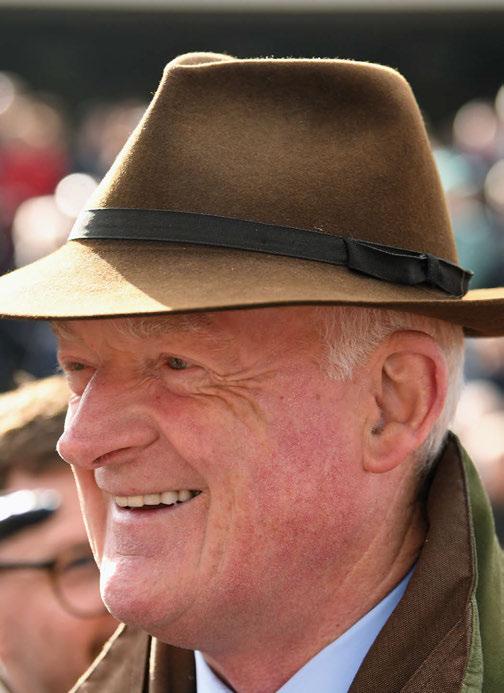
trainer,” observes one prominent owner. “You’re buying into a methodology, a system of thinking about racing that’s fundamentally different from the traditional approach.”
For those looking to apply these principles without Mullins’ resources, several practical steps emerge:
1. Invest in assessment: professional evaluation of young stock provides valuable developmental guidance.
2. Document everything: maintain detailed records of development, health interventions, and behavioural patterns.
3. Develop patience: understand that Mullins’ success comes from methodical progression, not rushed campaigns.
4. Embrace expertise: build relationships with specialists who bring specific knowledge to your programme.
5. Think systematically: consider how breeding, development, training and placement decisions interact rather than viewing them as separate domains.
The ultimate lesson from Mullins’ approach isn’t about specific techniques but about methodology – the creation of systems that consistently produce excellence. By embracing this systemsthinking approach, owners and breeders at all levels can improve their prospects in National Hunt racing.
While few will match Mullins’ extraordinary success, many can benefit from applying his principles to their own operations –creating more successful, sustainable approaches to breeding and owning jumpers. The champion trainer’s greatest contribution to racing may not be his record-breaking tally of winners but the blueprint he has created for methodical excellence in a sport often dominated by tradition and intuition.
BY JENNIFER KELLY
Their names are familiar to even the most casual of fan: Secretariat, Citation, American Pharoah, Justify. That the list has only 13 names in a century speaks to the challenge it presents: three races at three different distances at three different racetracks over a scant five weeks. The list of American stakes races and their winners reads like a veritable history book on its own, but the three races that make up the Triple Crown – the Kentucky Derby, the Preakness Stakes and the Belmont Stakes – stand apart from them all. To win one puts the horse and the team behind them in the history books; to win them all makes them immortal.
Integral to the identity of horseracing in the American sporting psyche, the Triple Crown’s long history and tremendous challenge have transformed these stakes races into life-changing Classics and prompted each track to continue investing millions into their Classic’s success.
“You have one chance to try to make it happen – it’s meant to be difficult”
Prior to 1919, any mention of the words ‘Triple Crown’ referred not to the Kentucky Derby, Preakness Stakes and Belmont Stakes but to their English progenitors, the 2,000 Guineas, Derby and St Leger. Before Sir Barton’s pioneering turns in those three American stakes, 13 horses had won their English counterparts, making that term synonymous with excellence in Britain rather than the US.
In just over a decade, Gallant Fox’s and then his son Omaha’s wins made the term ‘Triple Crown’ a necessity for American turf writers and the six horses that followed over the next two decades sealed its place
in our sporting lexicon.
In the intervening decades, only two other horses, Bahram (1935) and Nijinsky (1970), have gone on to win its English cousin. For European three-year-olds, winning those three Classics, set over a span of 18 weeks, from late April/early May to September, has given way to other opportunities. For American three-yearolds, the Triple Crown, set over five weeks in May and June, remains the gold standard for judging a horse’s career.
To win one Classic, especially the most visible of the three, the Kentucky Derby, draws many an owner, breeder, trainer, and jockey into the sport. As Hall of Fame writer Steve Haskin observed: “Winning the Kentucky Derby is more than achieving one’s dream; it often becomes one’s legacy.”
Sharilyn Gasaway, a partner in 2024 Kentucky Derby winner Mystik Dan, shared: “D. Wayne Lukas said, ‘I’ve won the Breeders’ Cup, I’ve won this, I’ve won that.’ And he starts railing off all these tremendously prestigious races that he’s won. And he said: ‘But the only one that anyone cares about is if I’ve won the Kentucky Derby.’”
Ask anyone who plays a role in American racing, no matter how peripheral the job, and they will share that the questions they are most frequently asked often have to do with the three Triple Crown Classics. These two-minute spectacles are also big business, driving revenue in multiple facets of the sport.
Once a Triple Crown hopeful is in the barn, the entry for the three races is accessible to owners at all income levels. To nominate a three-year-old requires filling out one form and then paying $600 by the first deadline toward the end of January or $6,000 through the first week of April. Once in the gate for one or more of the Classics, participants pay entry and starter fees, which are $25,000 for the Derby and $15,000 for the Preakness and the Belmont, but the minimal fees and centralised entry makes nominating a horse for the Triple Crown a simple process, one that encourages stables of all
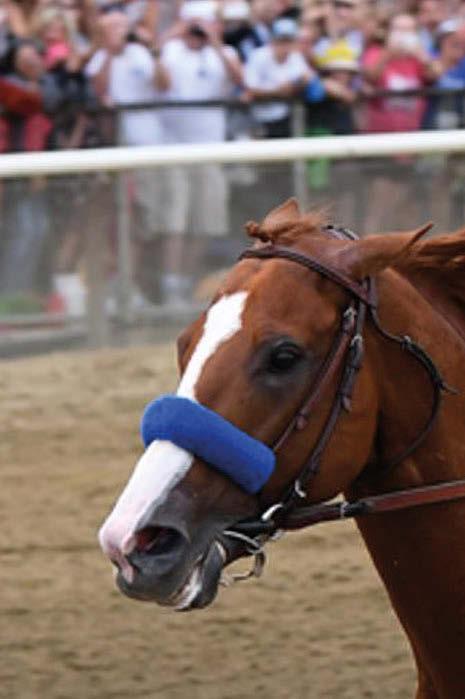
stripes to toss their names into the hat.
For the racetracks that play host to these Classics, each of these races is a massive income driver, regularly attracting sizeable crowds. The Kentucky Derby averages in the 150,000-person range, while the Preakness attracted around 125,000 each year prior to the Covid pandemic and then just under 50,000 since, with current owner 1/ST Racing emphasising smaller crowds to improve fan experience.
The Belmont Stakes, usually contested at its namesake Belmont Park, averages between 50,000 and 60,000 when a Triple Crown is not on the line; for both American Pharoah’s and Justify’s Crown-sealing days, the New York Racing Association (NYRA) capped attendance at 90,000. As Belmont Park undergoes a much-needed update, the race has been shifted to Saratoga; there, NYRA capped attendance for the 2024 edition at 50,000 and sold out the 14-race card.
While they are on hand for these Classics, fans are not just sipping each race’s signature drink but are also frequenting the betting windows. The 150th Kentucky Derby card generated $320,500,000 in handle while NYRA took in $125,748,941 on Belmont Stakes day; the Preakness stands as the only outlier, with $57.9 million for the day’s card. While Belmont’s 2024 handle was smaller than
the 13th
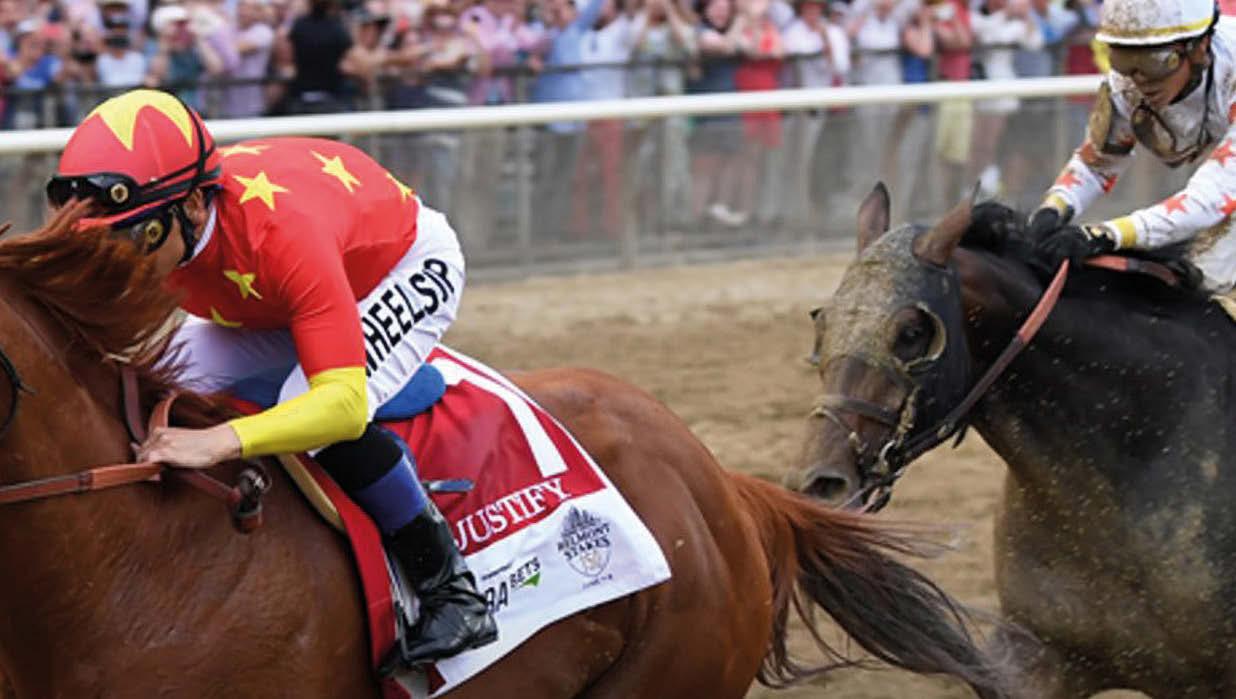
either American Pharoah’s or Justify’s, which were $135,790,321 and $137,954,895 respectively, that total was still a record for a non-Triple Crown year, even more notable as the race itself was run at an alternate venue.
Another indicator of the Triple Crown’s impact can be measured in its television viewership. The three races each still bring in more viewers than the Breeders’ Cup World Championships: the Saturday audience share for the 41st edition at Del Mar was 834,000 viewers for the main broadcast on NBC, while the Kentucky Derby attracted 16.7 million viewers for the 150th edition, also on NBC.
The Preakness Stakes on NBC scored about 5.5m viewers, and the Belmont attracted 3.66m viewers on Fox. Compare those numbers to other high-profile sporting events like the Indianapolis 500 (5.344m), the NBA finals (11.31m average per game), and the World Series (15.8m average per game). The Triple Crown, especially the Derby, still holds a significant place in the minds of sports fans in the US.
For trainer Jena Antonucci, the first woman to train the winner of a Triple Crown race, her exposure to the Triple Crown came early: “My grandparents got into racing when I was ten or 12, somewhere in there. And so I started
following closely. I remember it would be on [television], and the Derby would be on in the barn on the big days.”
Talk to any racing fan and they will name a family connection that would watch the races on television, casually exposing the next generation to the Triple Crown. As Sol Kumin, partner in Triple Crown champion Justify, observed: “In America, the Triple Crown is the one time where racing really goes from just racing fans to mainstream.”
Kumin, the man behind Madaket Stables, shared: “Those three days, even before I was a racing fan – and I have only been involved in racing for maybe 11 years or so – all I knew was the Triple Crown. And that was in your mind, the pinnacle.
“I just think they’re ingrained in people’s minds as the big days. And you grow up watching them. You watch it with your parents, you watch it with your grandparents.”
One aspect of the Triple Crown that captivates the sporting imagination is the difficulty of winning these three races in five weeks. In the 106 years since Sir Barton pioneered the feat, 23 horses won the first two and then fell short in (or were injured and missed) the Belmont Stakes, while 29 missed out in one of the three.
“The Kentucky Derby and the Triple Crown, you have one chance to try to do it and try to make it happen. That’s the
appeal and the draw: it’s meant to be hard. It’s meant to be difficult,” Churchill Downs’ Gary Palmisano observed. “It’s not meant to be Derby, Travers, Breeders’ Cup; it’s meant to be something that, when you do it, you know you’ve done something historic and truly special. It’s a huge reason why people breed horses and buy horses, to try to win these American Classics.”
“It’s our holy grail,” Mike Smith, Hall of Fame jockey who won his Triple Crown with Justify, reflected. “When you get into the game, I think it’s everyone’s dream to win a Derby. And then to win the three, well, that’s just something. That’s just another level.”
From experience, with multiple Triple Crown wins aside from winning the whole thing in 2018, Smith knows that to succeed requires “a well above average horse, and they [have] got to be able to still pull one off while maybe not running their best race in one of them. It’s almost impossible to run a hundred per cent in all three. That’s why I think it’s so hard to pull off. To win one is amazing.”
Whether a horse wins one or all three, life after crossing the finish line and hoisting the trophy is forever changed. “Every win, especially every stakes win, is special,” Antonucci explained. “But it is different because it’s the Triple Crown, and I think that’s part of the beauty of it and how special it is to our industry.” For this ››
lifelong horsewoman and veteran trainer, Arcangelo’s 2023 Belmont Stakes victory has brought more visibility and more opportunities to talk about racing with audiences outside of the sport. That broad familiarity with the Triple Crown means that people understand the gravitas of her accomplishment more quickly.
For Kumin, whose Madaket Stables has also won Triple Crown races with Exaggerator, Authentic and National Treasure, being in the winner’s circle for a Triple Crown race is not new, but winning all three with Justify “will never happen again. That’s one of those things. Anytime you do something that you think that you are not going to be able to do again, it’s special.”
To capitalise on the depth of fan interest in the Triple Crown, the three racetracks that host these historic races continue to invest in the infrastructure that underpins each. In February, Churchill Downs announced a multi-year, $900m project that expands seating options for the track’s two biggest days, the Kentucky Oaks and Derby, on the first Friday and Saturday each May. This is on top of nearly two weeks’ worth of celebrations in the city of Louisville that count down to the big event.
“We feel like the Kentucky Derby is not only just the crown jewel of the thoroughbred industry, but it is also a piece of Americana, a piece of American history. It’s a bucket list event that people all around the world seek out,” Palmisano shared. “Obviously, our investment in our facility and what Maryland and Belmont are doing within their facilities is going to allow us to show horseracing off in a different way to a different audience that will appeal to future generations. I would venture to guess the future of the Triple Crown never looked brighter.”
Along the same lines, as the state of Maryland takes over Pimlico and the
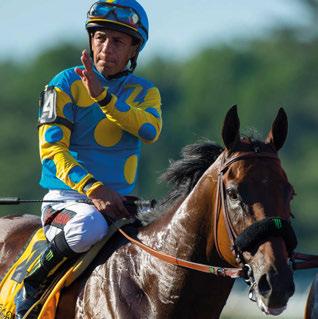
“It’s like reaching the summit of a seemingly unconquerable mountain”
Preakness Stakes from 1/ST Racing, they seek to build toward their Triple Crown Classic with the same sort of community engagement seen in Louisville. “When you have a state that jumps in like this and supports building a brand-new facility like this, it really shows how much passion and looking towards the future of not only the Preakness itself, but also the racing season and racing here in Maryland,” Bill Knauf, the President and General Manager of the revamped Maryland Jockey Club, said of the ongoing changes in the state’s approach to the sport.
NYRA is similarly investing in the future of its signature race through its $550m
reconstruction of 120-year-old Belmont Park. During this three-year rebuilding phase, NYRA moved the Belmont Stakes to its upstate historic showplace, Saratoga. The 2024 edition of the Belmont at Saratoga brought in an additional $50m to Saratoga Springs, demonstrating the strength of these races even in a year when no one horse can win all three.
“The amount of people that want to see racing and see the Triple Crown far exceeds the ones that don’t,” Antonucci observed, sharing a common thread of conversations about this historic phenomenon, that American fans of all stripes, from casual to ardent, want to be a part of these big days.
“Over the years, despite the rise in popularity of other sports and sporting events, the Triple Crown, mainly the second two legs, the Preakness and Belmont Stakes, are still able to fill the seats that are pretty much empty the rest of the year with enthusiastic fans who still consider all three races a magical event that remains a major part of American culture – a party not to be missed,” Haskin stated. “The Triple Crown is a feat so rare and so difficult it is like reaching the summit of a seemingly unconquerable mountain.”
As the pinnacle of this sport, the Kentucky Derby, the Preakness Stakes and the Belmont Stakes are essential to the American racing identity. These races are not only shorthand for greatness but also have become synonymous with racing in our sporting psyche.
In essence, these Classics encompass the heart of the sport for fans both in the United States and around the world. Winning one can be life-changing for horse and human; winning all three means immortality, a once-in-a-lifetime experience that keeps fans coming back year after year to witness history cross the finish line one more time.


Based in the Southwest, Ed has been racing horses of various ability all his life. His eldest son ran a lap of every English national hunt racecourse in five days aged eleven, raising over £15k for the IJF. eclarkson@propertyvision.com
We have Partners and Executives who have lived and worked among racing all their lives. With 40 years of experience, we offer a property service to private clients and family trusts looking to own property in the UK, whether for lifestyle or investment purposes. +44 (0)1635 813

Rob is well known in the racing community for buying and selling stud farms across the UK, Ireland, and France over the last 15 years. He lives near Marlborough, well known in Lambourn and often seen in Newmarket and at the Sales. rfanshawe@propertyvision.com

Lucinda, who represented Team GB in eventing operates in the Cotswolds and Oxfordshire and is involved in horses of all disciplines. Her family train in Gloucestershire and she is most often seen at Cheltenham. leaton@propertyvision.com

Based in the North of England, the highlight of Ed’s year was purchasing a beautiful Northumberland farm for a point-to-point family. Most often seen at Aintree and Bangor-on-Dee and covers all the Northern racing centres. elucas@propertyvision.com
Ed Bethell calls Middleham home and he hasn’t looked back since kicking off his training career in 2021 – with Group 1 and Royal Ascot wins already in the bag, could a Classic be next on the list?
There is a spellbinding beauty to the North Yorkshire countryside around Middleham and on a misty morning in March the possibilities seem endless at Thorngill stables, home to Group 1-winning trainer Ed Bethell and around 100 racehorses.
It’s the first gallop morning of 2025; steady canters and conditioning work have been the order of the day until now when the serious stuff begins. Instructions are handed out, assessments are made, plans are formed.
As the horses thunder up the sevenfurlong Polytrack gallop on the Low Moor, their every move is captured on a smartphone, a sign of how the sport, especially communication with owners, has changed in the years since Ed’s father, James, began his own training adventure in 1975, taking over from dual Derby winner Arthur Budgett.
Bethell senior, who retired at the end of 2020, enjoyed big days with the likes of Rich Ground, Strawberry Dale and Mine but never trained huge numbers – his best campaign in 1977 produced 25 winners –or secured that all-important top-level triumph, as his son did when bargain-buy Regional claimed the Sprint Cup at Haydock in 2023.
Regional is the headline act among a cast that has propelled Ed up the trainers’ table. His first season yielded 22 winners, a figure matched in 2022, followed by totals of 43 and 58 last year, when Mickley shone brightest with his success in the Britannia Handicap at Royal Ascot.
It’s been some progress in a short period for a man whose apprenticeship included spells with Fasig-Tipton, Coolmore Stud, Gai Waterhouse and Charlie Hills.
“Basically, I thought I’d have to make a name for myself in the first five years of training racehorses or I’d be forgotten,” explains Bethell, helping himself to a breakfast of low-fat yogurt with banana – bacon rolls are off the menu for the time being – in the office after supervising third lot. “Whether that’s right or wrong I don’t know, but I’ve seen plenty of good trainers not achieve as much as they might have done in the first five years and slowly go down.
“I wanted to build things up quietly, quality over quantity, and now we’re getting the numbers too. That will push up
“I had it in my head that after five years I wanted to train 100 horses”
the quality. Winning a Group 1 has been the catalyst and hopefully we can continue to compete at the highest level.
“However, I’d say the biggest change has been in the past year, after Mickley won at Royal Ascot – and that was just a handicap. That’s when the bigger numbers started coming, along with the bigger owners. It might also be the case that people had been monitoring our stable and seen the consistency.
“I’ve never told anyone what my targets are because I don’t want to embarrass
myself, but I had it in my head that after five years I wanted to train 100 horses.”
While Mickley has moved on, now plying his trade in Hong Kong for the Siu family, Regional remains in the care of Bethell, who is hoping for a clean run with the Territories gelding bought for just 3,500 guineas – possibly the cheapest thoroughbred in the stable.
“It was just luck”, Bethell replies when asked how he picked Regional out of Richard Fahey’s offering at the horses-intraining sale. “The Future Champions came to me in the February of my first year – I hadn’t trained a winner at that point – and said they were thinking of starting a syndicate and wanted me to train for them.
“Two weeks before the Tattersalls July Sale, they rang me and said they wanted to buy a horse. I asked Tom Biggs, who works under the banner of Blandford Bloodstock, to find me a fun horse that might have won a few races for 20 or 30 grand. He gave me a list and Regional popped up.
“He’s had issues with his wind – that’s why he was cheap. I didn’t do anything special with him, but he’s never looked back. On his first run for us he won a Class 2 handicap and paid for himself in one run. We hope he can win another Group 1 this year. The King Charles III Stakes [in which he was second to Asfoora last year] is a likely target but Haydock will always be the big plan.”
Buoyed by their success with Regional – the sprinter has also helped showcase the talents of stable jockey Callum Rodriguez – the Future Champions now have four horses in total at Thorngill, just one of the shared ownership groups supporting the Bethell yard, which also runs its own in-house syndicate, Clarendon Racing.

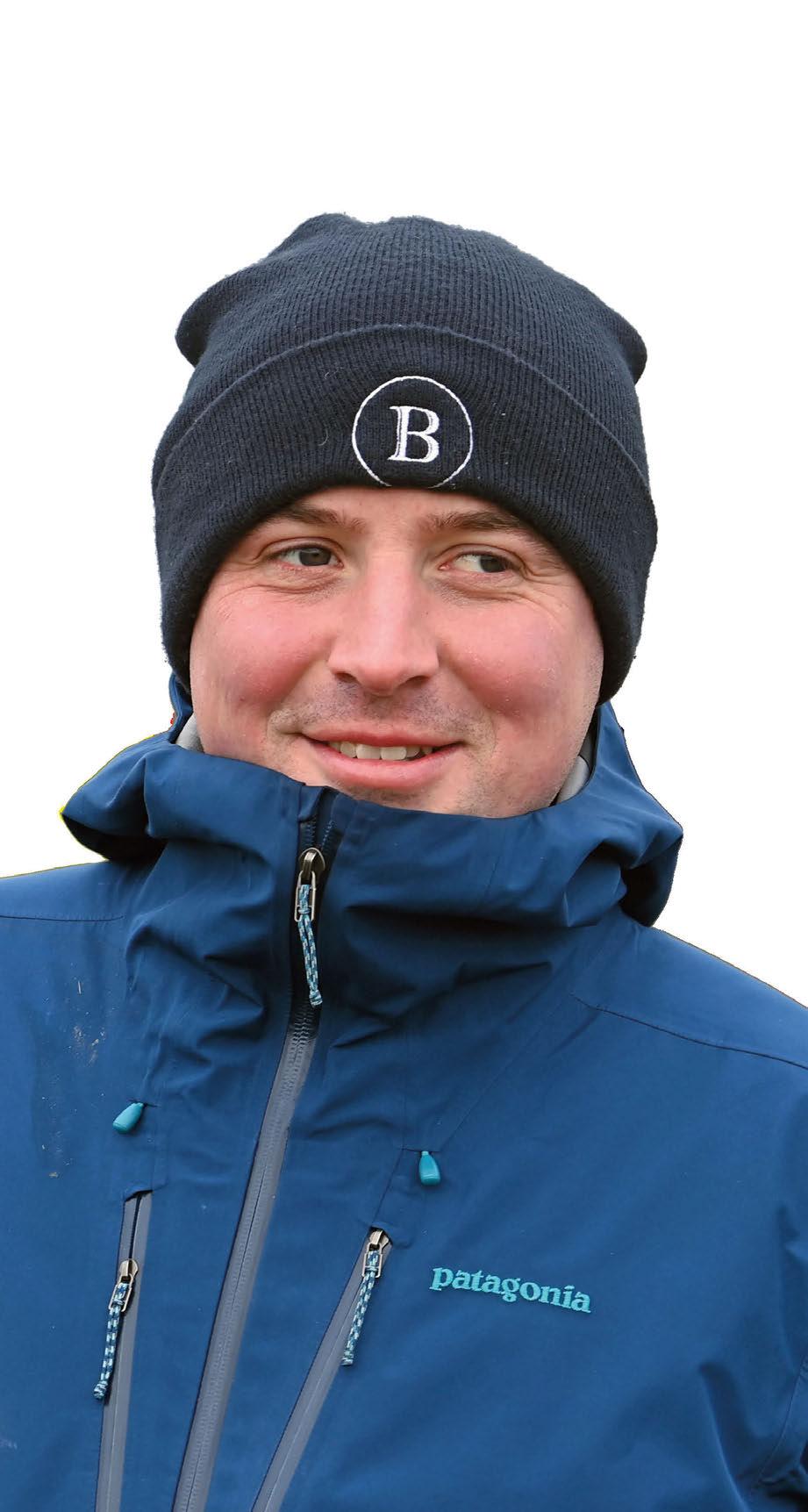
The trainer says: “Syndicates are huge because there are a lot of people that can’t afford to own a horse outright and it’s the perfect way to get involved and enjoy racing at an affordable rate. This is an expensive game. I’d say around 20% of my horses are syndicate-owned.
“With Clarendon it’s an all-inclusive rate – members pay one fee once a year and it’s a great bunch of local owners. The Future Champions have been with me from the word go and are fantastic to deal with.”
Alongside the syndicates, owners like David Armstrong, Chris Wright, Philippa Cooper, Julie and David Martin and recent joiner Sheikh Ahmed Al Maktoum, who has supplied three juveniles, have given the stable strength in depth.
Bethell has over 40 two-year-olds on his books this year, while among the three-year-old cohort Danger Bay and Callisto Dream are singled out for their potential, along with lightly-raced fouryear-old Paborus.
He says: “I feel lucky to train here and I’m fortunate to be in a beautiful yard. That’s due to my parents and I’m incredibly grateful for the opportunity they’ve presented to me. I don’t take it for granted.
“Dad’s owners supported me and then others came along. I met Julie and David when I worked as assistant to Charlie Hills. They chucked me a bone and now they’re my biggest sole owners with eight horses here.
“Chris Wright loves to give young people a chance. He’s been very good to me along with George Scott, Jack Channon, Charlie Hills, the

communication is vital – it’s about looking after people. If you don’t keep in touch, you’ll fall behind your contemporaries. We film all the gallops – life is so much easier with WhatsApp.
“Look at George Boughey. He’s around the same age and doing extraordinarily well. George is way ahead of all of us on social media – he’s the hare that sets the trail and we’re trying to catch him. It’s important to note what others are doing.”
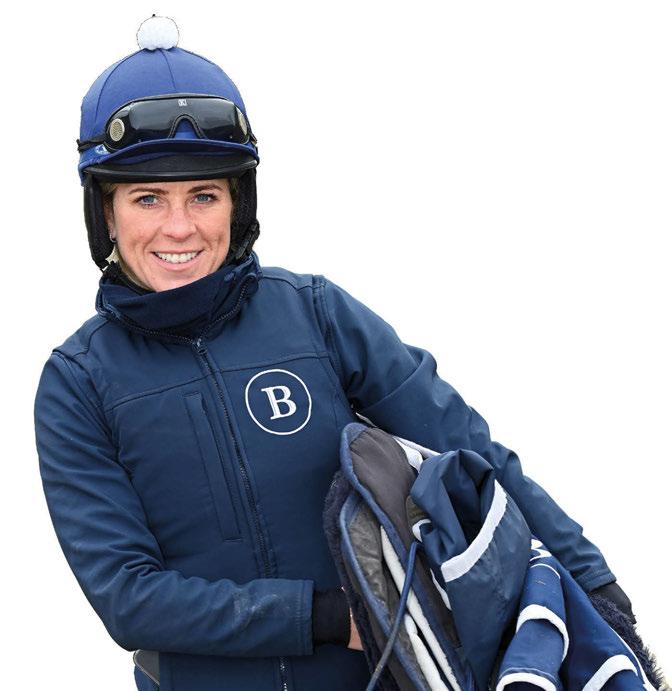
He continues: “The owner demographic has changed dramatically in the last few years, comparing the type of owner we have now to what dad had when he was
“Dad always had nice owners, good owners – friends more than anything. Fortunately, I’ve been supported by some very wealthy people who have bought some expensive horses. I have no doubt that if dad had the same backing, he would
“I have had to be a little bit more aggressive with my approach to change things. But ultimately people come here because of the results. I think the stats are probably what has made us a desirable location for horses to be trained.
“There’s a lot of good
northern trainers – it’s a much stronger scene than it used to be. When I was assistant trainer to Charlie Hills, you could bring a well-bred horse up here and win a maiden quite easily. You can’t do that now because of the powerhouses in the north.
“Pioneers like Mark Johnston made it not so taboo to have a horse in the north. I’m merely latching onto people’s coattails.”
With Group 1 and Royal Ascot milestones achieved, Bethell is reluctant to discuss targets for his growing string – planning permission has been sought for further expansion – but the rise in quality necessarily means the 31-year-old trainer has lofty ambitions.
“A Classic would be the next thing to try and knock off the list. But how many Classics have been won from the north of England?” he says. “That is the challenge.
“Andrew Balding has proved more than anybody that you can be on your own and fight for the championship. The same goes for Ralph Beckett.
“Being supported by the likes of Sheikh Ahmed and Fiona Carmichael, who are able to invest at the sales, and Philippa Cooper, who can produce pedigrees beyond pedigrees, will give me a better chance of getting closer to my goals.
“What we’ve made our name on is horses that are pretty inexpensive and
gone on do to well – that’s my bread and butter and I don’t want to get away from that or what I’ve created here.
“The people who’ve looked after me from the start will hopefully look after me if we get any bigger – and I’ll look after them. I want to keep doing what we’re doing.”
Bethell is quick to praise the rest of his team when his achievements are highlighted. Assistant trainer Keith McGloin is “exceptional – as good a horse person as you could wish to work with”. Secretary Sammy Jo Bell, the former jockey who still enjoys riding out is “incredible – she runs the joint and I’d be lost without her”, while Marianne Pamment, who manages the finances, “keeps us all in check”. Parents James and Sally are deeply involved in the smooth running of the operation and wife Milly manages the owner communications.
Bethell Racing employs 24 people full time, including nine work riders from the subcontinent. Given the staffing issues facing the sport, the trainer is grateful to have them on board. “I would find life very difficult if we didn’t have them,” Bethell says. “They’re brilliant people and they have wonderful manners. You can rely on them and that’s important.”
Despite the prospect of having to put his fees up in the next 12 months, the result of an increase to employers’ National Insurance contributions and additional employment law changes, optimism abounds at Bethell’s outfit, although some aspects of the sport frustrate him deeply. “We need to sell our product better,” he says. “We have the best racing in the world, but the sport isn’t sold like it is in Japan or Australia.
“I’m confident there’s more intelligent people than me that can work together and create something, but everyone seems to be out for themselves, trying to be a hero for their own sector of the industry.
“Also, I think we we’re way too negative about our wonderful sport – the Racing Post could show racing in a far better light than it does. That’s my honest opinion.”
Owners who ring up when Bethell is doing evening bath-time with threemonth-old daughter Sienna are a more minor irritation. Family is all important; he is supportive of his parent’s endeavours with the Jessica Bethell Charitable Foundation, named in memory of his sister who died of meningitis in October 2012.
“I think about it every day – it’s a massive part of my life,” Bethell says. “She worked incredibly closely with mum and dad before me. That’s why I went around the world; she was always the one likely to take over here. Jessica was a significantly better horseperson than I ever was, without a shadow of a doubt.
Ed Bethell

James Bethell knows the racing game inside out and couldn’t be prouder of what his son has achieved during his short time with a licence.
His own training career started at Whatcombe at the tender age of 23, succeeding Arthur Budgett, the man who bred, owned and trained the Derbywinning half-brothers Blakeney and Morston.
Bethell senior enjoyed a promising start – a Royal Ascot winner arrived in 1977 with Celtic Pleasure in the King George V Handicap – but he quickly realised the challenges of his chosen profession.
“I’d love to have travelled [like Ed] – that’s my biggest regret – but I couldn’t say no to succeeding Arthur Budgett,” he relates. “The world was my oyster when I took over.
“I had a really good last season there, then went to Whitsbury with a full yard of horses and subsequently got the most appalling bug.
“I’d been to Ostend with a decent horse, sharing a horsebox with Peter Walwyn, and they both came back with a virus. It nearly wiped me out completely.
“That’s always your dread as a young trainer. If you can keep that upward trajectory then everything’s good. When you get a dip it’s amazing how quickly people walk away.
“Had I continued on an upward trajectory, things might have been very different. But I lost that momentum; thankfully my son hasn’t.”
After moving around, Bethell and his family settled in the tranquil location of Coverham, Middleham. He has witnessed the area’s upturn as an elite training centre.
“Karl [Burke] has really broken the trend with Arab owners up here,” Bethell says. “Mark [Johnston] had them originally but the stable has fewer now, hence they’re perhaps not getting as many Saturday horses as in the past.
“I was going nowhere – on 30 horses maximum – and a lot of my owners were dying. Older trainers get to a stage where they’re not attracting new blood; I recognised that fact, so I said there was no way I wanted to have a joint licence. I’d rather put his name on the tin.
“To be fair to Ed, if he’d been training in Newmarket and had similar success, he might have had 200 horses by now.”
He adds: “He’s a bloody good boy and I’m seriously proud of him.”
“I don’t talk about it very often, but a lot of what I do is for her. It’s still pretty raw, even though it was over 12 years ago.”
He adds: “From the day dot, I always wanted to be a jockey or a trainer. Being a
jockey went out the window when I was about eight years old – I’m 6’4” – so training was the only thing I ever really wanted to do. I’ve never wanted to do anything else.”
Published here is the Final List of European stallions registered in full with the EBF for the 2024 covering season. The progeny of these stallions, CONCEIVED IN 2024 IN THE NORTHERN HEMISPHERE, (the foal crop of 2025) will be eligible to enter the EBF races to be held during the year 2027 and thereafter. They will also be eligible for other relevant benefits under the EBF terms and conditions in force in Great Britain, Ireland, France, Italy, Germany and Switzerland.
A
A’ALI (IRE)
ACCLAMATION (GB)
ACCON (GER)
ACE IMPACT (IRE)
ACLAIM (IRE)
ADAAY (IRE)
ADVERTISE (GB)
AFFAIRE SOLITAIRE (IRE)
AFFINISEA (IRE)
AL KAZEEM (GB)
AL RIFAI (IRE)
AL WUKAIR (IRE)
ALBERT DOCK (JPN)
ALIBABA (FR)
ALKUMAIT (GB)
ALMANZOR (FR)
ALMIGHWAR (GB)
ALSON (GER)
ALTER ADLER (GER)
ALTRUISTIC (IRE)
AMARILLO (IRE)
AMARON (GB)
AMEDEO MODIGLIANI (IRE)
AMHRAN NA BHFIANN (IRE)
AMICO FRITZ (GER)
ANGEL BLEU (FR)
ANODIN (IRE)
ARCANO (IRE)
ARCTIC COSMOS (USA)
ARDAD (IRE)
ARIZONA (IRE)
ARMOR (GB)
ARRIGO (GER)
ARROGAN (USA)
ASYMMETRIC (IRE)
AUSTRALIA (GB)
AUSTRIAN SCHOOL (IRE)
AUTHORIZED (IRE)
AWTAAD (IRE)
B
BAAEED (GB)
BANDE (IRE)
BANGKOK (IRE)
BANKNOTE (GB)
BATED BREATH (GB)
BATHYRHON (GER)
BATTLE OF MARENGO (IRE)
BATTLEGROUND (USA)
BAY BRIDGE (GB)
BAYSIDE BOY (IRE)
BEAUMEC DE HOUELLE (FR)
BECKFORD (GB)
BEHESHT (FR)
BELARDO (IRE)
BELBEK (FR)
BEST COMPANY (USA)
BEST SOLUTION (IRE)
BIRCHWOOD (IRE)
BITCOIN PASSION (IRE)
BLACKBEARD (IRE)
BLEK (FR)
BLOCKCHAIN (IRE)
BLU CONSTELLATION (ITY)
BLUE BRESIL (FR)
BLUE POINT (IRE)
BOBBY’S KITTEN (USA)
BODEMEISTER (USA)
BODYGUARD HERO (USA)
BOLSHOI BALLET (IRE)
BORN TO SEA (IRE)
BOUTTEMONT (IRE)
BOW CREEK (IRE)
BRADESCO (IRE)
BRAVE MANSONNIEN (FR)
BROAD STREET (GB)
BUBBLE GIFT (FR)
BUNGLE INTHEJUNGLE (GB)
C CALYX (GB)
CAMELOT (GB)
CAMERON HIGHLAND (IRE)
CANNOCK CHASE (USA)
CAPRI (IRE)
CAPTAIN CHOP (FR)
CASTLE DU BERLAIS (FR)
CASTLE STAR (IRE)
CATURRA (IRE)
CENTAURIAN (IRE)
CENTURY DREAM (IRE)
CHACHNAK (FR)
CHALDEAN (GB)
CHANDUCOQ (FR)
CHARM SPIRIT (IRE)
CHARMING THOUGHT (GB)
CHEMICAL CHARGE (IRE)
CHOEUR DU NORD (FR)
CHURCHILL (IRE)
CIRFANDLI (HUN)
CITY LIGHT (FR)
CLOTH OF STARS (IRE)
CLOVIS DU BERLAIS (FR)
COKORIKO (FR)
COLORADO KID (USA)
COMPLACENT (AUS)
COTAI GLORY (GB)
COULSTY (IRE)
COUNTERATTACK (AUS)
COURT CAVE (IRE)
CRACKSMAN (GB)
CRYSTAL OCEAN (GB)
CYPRESS CREEK (IRE)
D
DABIRSIM (FR)
DALYAKAN (FR)
DARIYAN (FR)
DARK ANGEL (IRE)
DARTMOUTH (GB)
DAVID DU BERLAIS (FR)
DAWN APPROACH (IRE)
DE TREVILLE (GB)
DEE EX BEE (GB)
DESTINO (GER)
DIAMOND BOY (FR)
DICAPRIO (GER)
DICK WHITTINGTON (IRE)
DINK (FR)
DOCTOR DINO (FR)
DOHA DREAM (FR)
DONJUAN TRIUMPHANT (IRE)
DRAGON AL GUENAY (USA)
DRAGON DANCER (GB)
DRAGON SYMBOL (GB)
DREAM AHEAD (USA)
DSCHINGIS SECRET (GER)
DUBAI MILE (IRE)
DUBAWI (IRE)
DUBAWI LEGEND (IRE)
DURANTE ALIGHIERI (GB)
E
EAGLE TOP (GB)
EAGLES BY DAY (IRE)
EARL OF TINSDAL (GER)
EARNSHAW (USA)
EARTHLIGHT (IRE)
EASTERN ANTHEM (IRE)
EBRO RIVER (IRE)
ECRIVAIN (FR)
ECTOT (GB)
EL CABALLO (GB)
EL SALVADOR (IRE)
EL VALLE (FR)
ELARQAM (GB)
ELIOT (GER)
ELLIPTIQUE (IRE)
ELM PARK (GB)
ELUSIVE PIMPERNEL (USA)
EPAULETTE (AUS)
EQUIANO (FR)
EREVANN (FR)
F
FAIRLYPI (IRE)
FALCO (USA)
FAMOUS NAME (GB)
FAR ABOVE (IRE)
FARHH (GB)
FAS (IRE)
FASCINATING ROCK (IRE)
FATRA LUC (CZE)
FEARLESS KING (GB)
FEEL LIKE DANCING (GB)
FIFTY STARS (IRE)
FIRE OF THE SUN (FR)
FIRST ELEVEN (GB)
FLAG OF HONOUR (IRE)
FLINTSHIRE (GB)
FLY WITH ME (FR)
FOMENT (GB)
FOOTSTEPSINTHESAND (GB)
FRACAS (IRE)
FRANKEL (GB)
FREE EAGLE (IRE)
FRONTIERSMAN (GB)
FUISSE (FR)
G
GALILEO CHROME (IRE)
GALILEO GOLD (GB)
GALIWAY (GB)
GAMUT (IRE)
GARY DU CHENET (FR)
GENTLEWAVE (IRE)
GETAWAY (GER)
GHAIYYATH (IRE)
GIUSEPPE GARIBALDI (IRE)
GLENEAGLES (IRE)
GOKEN (FR)
GOLDEN HORDE (IRE)
GOLDEN HORN (GB)
GOLDEN LARIAT (USA)
GOLIATH DU BERLAIS (FR)
GOOD EFFORT (IRE)
GOOD GUESS (GB)
GREAT PRETENDER (IRE)
GREGORIAN (IRE)
GRENDISAR (IRE)
GUILIANI (IRE)
GUSTAV KLIMT (IRE)
GUTAIFAN (IRE)
HARRY ANGEL (IRE)
HARZAND (IRE)
HAVANA GREY (GB)
HEADMAN (GB)
HELLO YOUMZAIN (FR)
HELLVELYN (GB)
HEP BERABER (TUR)
HERALD THE DAWN (IRE)
HEY GAMAN (GB)
HOLY ROMAN EMPEROR (IRE)
HUNTER’S LIGHT (IRE)
HUNTING HORN (IRE)
HURRICANE LANE (IRE) I
IDAHO (IRE)
IFFRAAJ (GB)
ILARAAB (IRE)
IMPERIAL MONARCH (IRE)
IN SWOOP (IRE)
INNS OF COURT (IRE)
INTELLO (GER)
INVINCIBLE ARMY (IRE)
INVINCIBLE SPIRIT (IRE)
IQUITOS (GER)
ISFAHAN (GER)
ITO (GER)
IT’S GINO (GER)
IVANHOWE (GER)
J
JACK HOBBS (GB)
JAPAN (GB)
JET AWAY (GB)
JEU ST ELOI (FR)
JIGME (IRE)
JIMMY TWO TIMES (FR)
JOSHUA TREE (IRE)
JUKEBOX JURY (IRE)
K
KAMEKO (USA)
KAP ROCK (FR)
KAPGARDE (FR)
KARAKTAR (IRE)
KEIAI NAUTIQUE (JPN)
KENDARGENT (FR)
KENWAY (FR)
KEW GARDENS (IRE)
KHALIFA SAT (IRE)
KING DAVID (USA)
KING EDWARD (FR)
KING OF CHANGE (GB)
KINGFISHER (IRE)
KINGMAN (GB)
KINGSTON HILL (GB)
KIRCAALI (TUR)
KLIMT (USA)
KLUGER (JPN)
KODI BEAR (IRE)
KODIAC (GB)
KONIG BERNARD (FR)
KOOL KOMPANY (IRE)
KUROSHIO (AUS)
L
LACCARIO (GER)
LAND FORCE (IRE)
LATROBE (IRE)
LAURO (GER)
LAVELLO (IRE)
LAWMAN (FR)
LE BRIVIDO (FR)
LE CADRE NOIR (IRE)
LEGENDS OF WAR (USA)
LIBERTARIAN (GB)
LIGHTNING SPEAR (GB)
LIMARIO (GER)
LINDA’S LAD (GB)
LITERATO (FR)
LITTLE BIG BEAR (IRE)
LOGICIAN (GB)
LONE EAGLE (IRE)
LOPE DE VEGA (IRE)
LOPE Y FERNANDEZ (IRE)
LUCKY JOE (IRE)
LUCKY TEAM (FR)
LUCKY VEGA (IRE)
LUSAIL (IRE)
M
MAC SWINEY (IRE)
MADHMOON (IRE)
MAGIC DREAM (FR)
MAGNA GRECIA (IRE)
MAHLER (GB)
MAHSOOB (GB)
MAKALOUN (FR)
MAKE BELIEVE (GB)
MAMOOL (IRE)
MANATEE (GB)
MARCAVELLY (USA)
MARCEL (IRE)
MARE AUSTRALIS (IRE)
MARIANAFOOT (FR)
MARIE’S DIAMOND (IRE)
MARMELO (GB)
MARTEL (IRE)
MARTINBOROUGH (JPN)
MASAR (IRE)
MASKED MARVEL (GB)
MASSAAT (IRE)
MATTMU (GB)
MAXIOS (GB)
MAYSON (GB)
MEHMAS (IRE)
MEKHTAAL (GB)
MENDOCINO (GER)
MIDI (GB)
MIDNIGHT SANDS (USA)
MIDNIGHT’S LEGACY (GB)
MILITARY STYLE (USA)
MILLOWITSCH (GER)
MINZAAL (IRE)
MIRAGE DANCER (GB)
MISHRIFF (IRE)
MKFANCY (FR)
MODERN GAMES (IRE)
MOGUL (GB)
MOHAATHER (GB)
MOISES HAS (FR)
MOJO STAR (IRE)
MOKARRIS (USA)
MONDIALISTE (IRE)
MONITOR CLOSELY (IRE)
MONTMARTRE (FR)
MORANDI (FR)
MOSTAHDAF (GB)
MOTAMARRIS (IRE)
MOTIVATOR (GB)
MUHAARAR (GB)
MUKHADRAM (GB)
MUTASAABEQ (GB)
MYBOYCHARLIE (IRE)
N
NA HAS (FR)
NAGANO GOLD (GB)
NANDO PARRADO (GB)
NATHANIEL (IRE)
NATIVE TRAIL (GB)
NAVAL CROWN (GB)
NEATICO (GER)
NERIK (IRE)
NERIUM (IRE)
NEW APPROACH (IRE)
NEW BAY (GB)
NEWS ANCHOR (IRE)
NIGHT OF THUNDER (IRE)
NIGHT TORNADO (GB)
NIGHT WISH (GER)
NIRVANA DU BERLAIS (FR)
NO NAY NEVER (USA)
NO RISK AT ALL (FR)
NOOR AL HAWA (FR)
NOOZHOH CANARIAS (SPA)
NORTHERN RULER (GER)
NUTAN (IRE)
O
OASIS DREAM (GB)
OCOVANGO (GB)
OL’ MAN RIVER (IRE)
OLD PERSIAN (GB)
OLYMPIC GLORY (IRE)
ON EST BIEN (IRE)
ONESTO (IRE)
ORDER OF ST GEORGE (IRE)
P PADDINGTON (GB)
PALACE PIER (GB)
PALACE PRINCE (GER)
PARADISO (FR)
PASSING GLANCE (GB)
PEARL SECRET (GB)
PENNY’S PICNIC (IRE)
PERFECT POWER (IRE)
PERSIAN FORCE (IRE)
PERSIAN KING (IRE)
PETHER’S MOON (IRE)
PHOENIX OF SPAIN (IRE)
PIGEON CATCHER (IRE)
PILLAR CORAL (GB)
PINATUBO (IRE)
PLANTEUR (IRE)
POET’S WORD (IRE)
POLARIX (GB)
POLICY MAKER (IRE)
POLISH VULCANO (GER)
POSTPONED (IRE)
POUNCED (USA)
POUVOIR ABSOLU (GB)
PRESIDENCY (GB)
PRETTY TIGER (IRE)
PRIMARY (USA)
PRINCE GIBRALTAR (FR)
PROFITABLE (IRE)
PYLEDRIVER (GB)
R RACINGER (FR)
RAJASINGHE (IRE)
RAVEN’S PASS (USA)
RECOLETOS (FR)
REGEM (IRE)
RICH HISTORY (IRE)
RIVER BOYNE (IRE)
ROBIN DU NORD (FR)
ROBIN OF NAVAN (FR)
ROLANDO (IRE)
ROMAN CANDLE (GB)
ROMANISED (IRE)
ROSEMAN (IRE)
ROSENSTURM (IRE)
ROSS (IRE)
ROYAL LYTHAM (FR)
RUBAIYAT (FR)
RUBIS VENDOME (GB)
RULER OF THE WORLD (IRE)
RUMBLE INTHEJUNGLE (IRE)
S SADDEX (GB)
SAINT DES SAINTS (FR)
SAINTGODREL (FR)
SALUTINO (GER)
SANDS OF MALI (FR)
SANS FRONTIERES (IRE)
SANTIAGO (IRE)
SASSOFORTINO (IRE)
SATONO ARES (JPN)
SAVOIR VIVRE (IRE)
SAXON WARRIOR (JPN)
SCALO (GB)
SCHIAPARELLI (GER)
SEA MOON (GB)
SEA THE MOON (GER)
SEA THE STARS (IRE)
SEABHAC (USA)
SEAHENGE (USA)
SEALIWAY (FR)
SECOND THOUGHT (IRE)
SERGEI PROKOFIEV (CAN)
SHAMALGAN (FR)
SHAMAN (IRE)
SHAQUILLE (GB)
SHAYWAN (IRE)
SHIROCCO (GER)
SHOWCASING (GB)
SILAS MARNER (FR)
SILVERWAVE (FR)
SIOUX NATION (USA)
SIR RON PRIESTLEY (GB)
SIYOUNI (FR)
SKY VEGA (IRE)
SNOW SKY (GB)
SOFT LIGHT (FR)
SOLDIER HOLLOW (GB)
SOLDIER’S CALL (GB)
SOMMERABEND (GB)
SOTTSASS (FR)
SPACE BLUES (IRE)
SPACE TRAVELLER (GB)
SPANISH MOON (USA)
ST MARK’S BASILICA (FR)
STARMAN (GB)
STARSPANGLEDBANNER (AUS)
STATE OF REST (IRE)
STELLAR MASS (IRE)
STORM THE STARS (USA)
STRADIVARIUS (IRE)
STUDY OF MAN (IRE)
STUNNING SPIRIT (GB)
SUBJECTIVIST (GB)
SUCCESS DAYS (IRE)
SUMBAL (IRE)
SUPER SAVER (USA)
SUPREMACY (IRE)
SWISS SPIRIT (GB)
T
TAI CHI (GER)
TAJ MAHAL (IRE)
TECHNICIAN (IRE)
TELECASTER (GB)
TELESCOPE (IRE)
TEN SOVEREIGNS (IRE)
TEOFILO (IRE)
TERRITORIES (IRE)
TEXAS (FR)
THE ANTARCTIC (IRE)
THE GREY GATSBY (IRE)
THE GURKHA (IRE)
THREAT (IRE)
THUNDER MOON (IRE)
TIBERIAN (FR)
TIGRON (USA)
TILSIT (USA)
TIME TEST (GB)
TIP TWO WIN (GB)
TIRWANAKO (FR)
TOO DARN HOT (GB)
TOP TRIP (GB)
TORQUATOR TASSO (GER)
TOSEN STARDOM (JPN)
TRIPLE THREAT (FR)
TRIPLE TIME (IRE)
TUNIS (POL)
TUSCAN GAZE (IRE)
TWILIGHT SON (GB)
U
UBETTABELIEVE IT (IRE)
ULTRA (IRE)
ULYSSES (IRE)
UNFORTUNATELY (IRE)
UNIVERSAL (IRE)
V
VADAMOS (FR)
VADENI (FR)
VALIRANN (FR)
VAN BEETHOVEN (CAN)
VANISHING CUPID (SWI)
VENDANGEUR (IRE)
VICTOIRE PISA (JPN)
VICTOR LUDORUM (GB)
VICTORY SONG (IRE)
VIRTUAL (GB)
VITA VENTURI (IRE)
VOCALISED (USA)
W
WALDERBE (GER)
WALDGEIST (GB)
WALDKONIG (GB)
WALDPARK (GER)
WALDPFAD (GER)
WALK IN THE PARK (IRE)
WASHINGTON DC (IRE)
WAY TO PARIS (GB)
WELL CHOSEN (GB)
WELLS FARHH GO (IRE)
WELTSTAR (GER)
WESTERN FRONTIER (USA)
WESTERNER (GB)
WIESENPFAD (FR)
WILD CHIEF (GER)
WILLYWELL (FR)
WINDSTOSS (GER)
WINGS OF EAGLES (FR)
WITHOUT PAROLE (GB)
WONDERFUL MOON (GER)
WOODED (IRE)
WOOMBA DU SYL’HANS (FR)
WOOTTON BASSETT (GB)
WORKFORCE (GB)
Y
YAFTA (GB)
YEATS (IRE)
YORGUNNABELUCKY (USA)
YOUMZAIN (IRE)
Z
ZARAK (FR)
ZASKAR (FR)
ZELZAL (FR)
STALLION
ADMIRE MARS (JPN)
BRICKS AND MORTAR (USA)
CHRYSOBERYL (JPN)
CONTRAIL (JPN)
DANON KINGLY (JPN)
DREFONG (USA)
EFFORIA (JPN)
EPIPHANEIA (JPN)
EQUINOX (JPN)
FLIGHTLINE (USA)
GRENADIER GUARDS (JPN)
HOT ROD CHARLIE (USA)
ISLA BONITA (JPN)
KARAKONTIE (JPN)
KITASAN BLACK (JPN)
KIZUNA (JPN)
LE VENT SE LEVE (JPN)
LORD KANALOA (JPN)
MAURICE (JPN)
MIKKI ISLE (JPN)
MIND YOUR BISCUITS (USA)
NADAL (USA)
NEW YEAR’S DAY (USA)
ORFEVRE (JPN)
OSCAR PERFORMANCE (USA)
RAGING BULL (FR)
REAL STEEL (JPN)
REY DE ORO (JPN)
RULERSHIP (JPN)
SALIOS (JPN)
SATONO CROWN (JPN)
SATONO DIAMOND (JPN)
SATURNALIA (JPN)
SCHNELL MEISTER (GER)
SISKIN (USA)
SUAVE RICHARD (JPN)
UP TO THE MARK (USA)
The stallions listed above stood OUTSIDE THE EBF AREA IN 2024 and have been registered as EBF International Stallions.
The progeny of these stallions, CONCEIVED IN 2024, (the foal crop of 2025), will be eligible to enter and run in EBF races to be held during 2027 and thereafter, with no further nomination payments.
Further details from the Chief Executive, European Breeders’ Fund.
“
Once viewed as a last chance saloon, breeze-ups are now an integral part of the sales calendar, their reputation as a consistent source of top-end talent showcased again last year by Hotazhell
Words: James Thomas
It’s night and day, really,” says Willie Browne as he discusses the difference between the modern day breeze-up marketplace and where things began the best part of 50 years ago. Few are better placed to comment than the Mocklershill man, as Browne sold his first breeze-up draft at the second renewal of Doncaster’s two-year-old auction in 1978.
Back then these sales were largely viewed as the last chance saloon, a place where vendors took their unsold yearlings for one final roll of the dice. While a market existed, it would be fair to say there was a lack of confidence in the product on offer. Even a more favourable assessment might have had these sales down as a source of cheap speed. How things have changed.
The European breeze-up circuit now caters for just about every requirement and budget across the course of seven sales, from the sharper precocious types found at Doncaster in April, right through the later-maturing types with blue chip pedigrees on show at Arqana in May. Moreover, the sector is now viewed by a cast of major buyers as the equal of any sale when it comes to supplying top-end talent.
sustainable business around selling twoyear-olds.
“You’d buy a nice horse for four or five figures, 15 grand would be the kind of outlay you’d look to spend on any one horse,” Browne says of his earliest pinhooking endeavours. “There was always a good price to be got though, even back then. You could give a small price for a yearling and still get 30 or 40 grand.”
Norman Williamson entered the sector almost three decades after Browne but recounts a similar introduction. “The first time I rode at a breeze-up was for Eddie O’Leary in 2004.” he says. “I rode a horse called Abraxas Antelope, who Howard Johnson bought. He breezed fast and sold well and that’s really how I got into the game, because I didn’t think there were that many people doing it.
“Bit by bit, racetrack results drove bigger results in the ring”
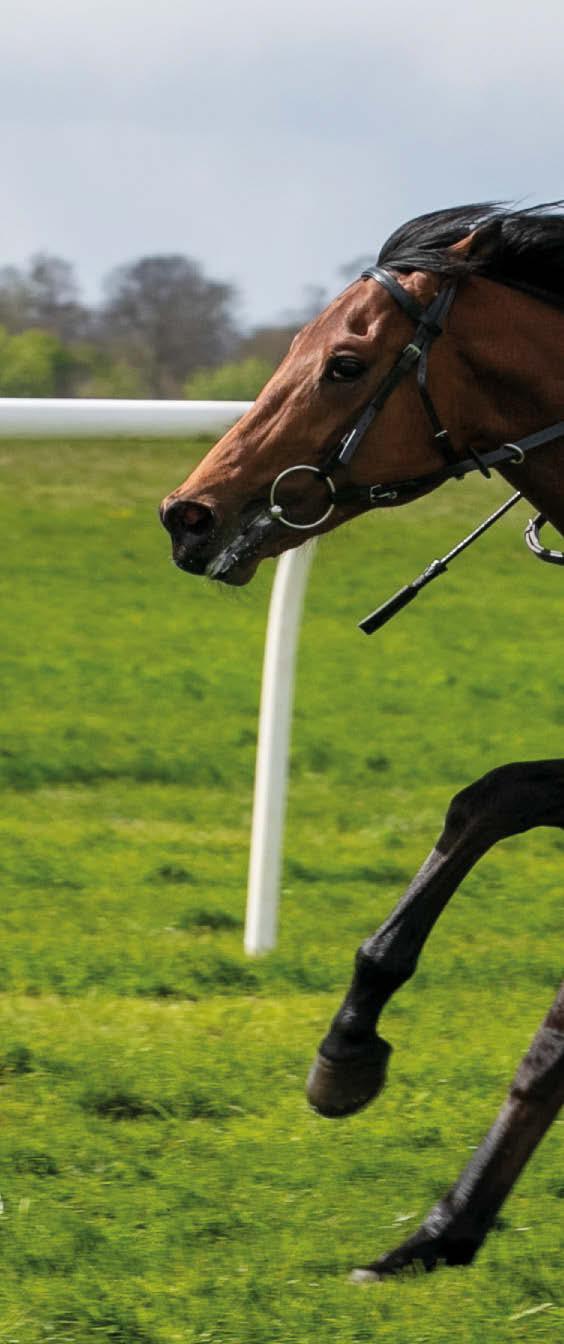
Hotazhell: pictured breezing for Lackendarra Stables ahead of last year’s Tattersalls Craven Sale, he was a Group 1 winner six months later
But what has underpinned this seismic shift? The first step on the journey was identifying the opportunity to frame a
“Some people riding were ten or 12 stone and the horses weren’t prepared like they are today. A lot of horses came up in pairs and even trebles; it was all on the bridle and they weren’t all going zing, zing, zing. We were buying a different level of horse, you were buying the 15 or 20 grand yearling hoping he might make 50. It’s totally changed from a professional point of view.”
Despite the market’s early impressions about the breeze-ups, these auctions
proved to be the source of some notable talents.
Sylvan Barbarosa won the Cork and Orrery Stakes (now the Queen Elizabeth II Jubilee Stakes) in 1983. Five years later another Doncaster graduate, Handsome Sailor, won the William Hill Sprint Championship (now the Nunthorpe) and the Prix de l’Abbaye, having been promoted to first in France at the expense of Cadeaux Genereux. The following year Tattersalls entered the breeze-up market with its own sale of two-year-olds.
Bit by bit, racetrack results drove bigger results in the ring. As pinhookers ploughed these dividends back into raw materials at
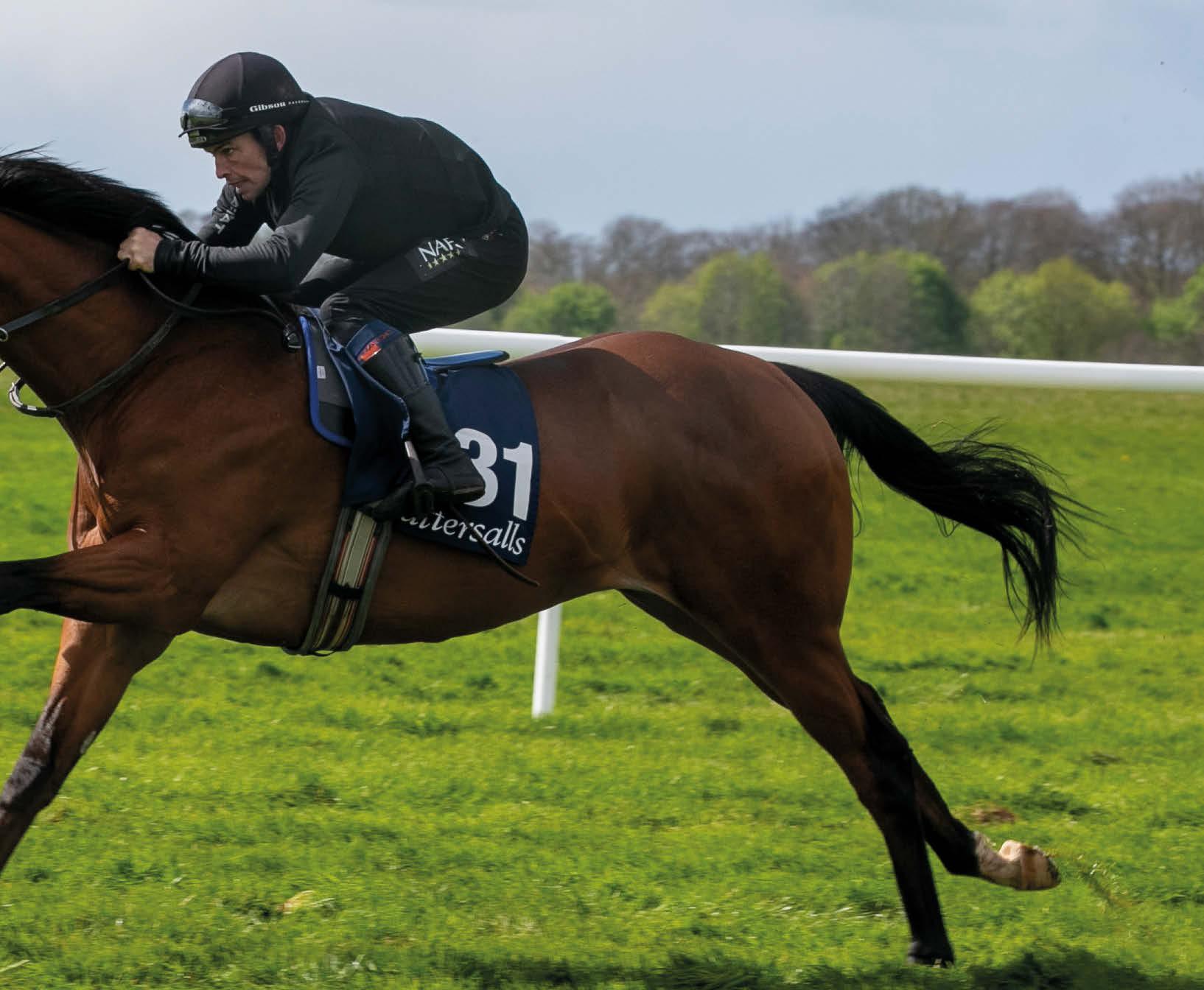
the yearling sales, the standard of horse presented at the breeze-ups improved. The two-year-old sales began to feature less stock that had not made the grade at the yearling stage, and more horses that had been specifically selected for the task at hand.
However, for some, lingering doubts remained. A vocal sector of the industry believed that a breeze-up preparation led to horses with temperament issues that were difficult to train and headstrong on the track. This caricature has proved hard to shift, despite a mountain of evidence to the contrary.
“Even five years ago, trainers would
complain that breeze-up horses are all mad,” says Blandford Bloodstock agent Richard Brown, buyer of multiple Group 1 winners at the breeze-up sales. “It’s just utter rubbish. These horses are prepared by some of the best horsemen on planet earth and they know, if they turn up to the sales with a sweaty wreck, we’re all going to walk away.”
What is harder to walk away from is the growing breeze-up roll of honour.
While the likes of Sylvan Barbarosa and Handsome Sailor made for early posterboys, the fact both were sprinters probably reaffirmed the notion that some possessed about these sales only dealing
in five- and six-furlong horses.
That perception was confronted head on in 2006 when Speciosa became the first European Classic winner to graduate from the breeze-up sales. The daughter of Danehill Dancer was bought by her trainer Pam Sly from Mocklershill at a cost of 30,000gns.
Things have changed so markedly that it is now routine for Group 1 prizes to be won by breeze-up graduates, regardless of age or distance. There have been champion two-year-olds like Vandeek; another 1,000 Guineas winner in Cachet; a Prix du Cadran winner in Trueshan and a Prix de l’Abbaye heroine in The Platinum
Queen. And that is to name just a few of the headline names that have emerged in recent times.
The list of Group 1 winners grew last year when Hotazhell landed the Futurity Trophy, while Bradsell added to his toplevel triumphs in the Nunthorpe and Flying Five Stakes. Another breeze-up graduate, Ambiente Friendly, finished runner-up in the Derby.
Our own experts have done more than most to contribute to this list. Few, if any, consignor’s graduates have been in better form in recent years than Williamson’s, with the Oak Tree Farm man having sold major talents such as Contributor, Eldar Eldarov, Native Trail and War Of Will. Browne’s previous students include the likes of Rockemperor, Sakheer, Trip To Paris and Ventura Storm, while he also sold last year’s Flying Childers winner Aesterius and Australian Group 1 scorer Light Infantry to Brown.
The Blandford Bloodstock agent has also secured the Classic-winning Teppal, champion sprinter Dream Ahead and top-class two-year-old Perfect Power from the breeze-ups, while his role as Wathnan Racing talent scout saw him unearth last year’s Royal Ascot winners Leovanni and Shareholder.
According to data on the Breeze-Up Consignors Association website, the sector has supplied over 470 black-type winners, 40 of whom have won 59 Group 1 races between them. Moreover, over 30 per cent of breeze-up graduates won at two, while over 50 per cent landed a race throughout their career.
“Will we one day see a Derby winner come from the breeze-ups?” asks Brown. “You’d be a brave man to say that won’t happen in the next 25 years. A lot of seriously good horses have come out of these sales.”
The results are, Brown continues, a testament to the effort, investment and talent of those who pinhook and produce each year’s intake of breeze-up recruits.
“They’re an extraordinary bunch of people,” he says. “They’re exceptionally hard working and brilliant judges of a horse. They understand markets and what we want, and then they do a phenomenal job of preparing their horses. Twenty years ago they weren’t buying as aggressively as they are now, but now you have some of the best judges on planet earth willing to put down very serious amounts of money to buy proper horses.”
As breeze-up consignors have honed their craft and upped their investment, the returns they receive in the ring have grown almost exponentially. Last year’s market was topped by the exciting Ruling Court,
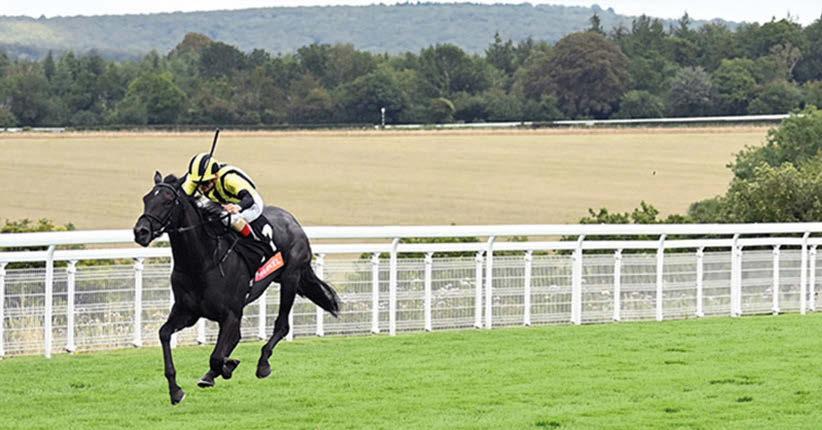
who Williamson sold to Godolphin for a European record of €2,300,000.
The son of Justify changed hands at Arqana, which has established itself as the headline event in the European breezeup calendar. While the results across key market indices have risen further in Deauville than anywhere else, this upward

Norman Williamson: Group 1 vendor
trend reflects the broader shift in the breeze-up market. In 2005, the French sale generated an average price of €20,920 and a median of €16,000. Last year, those same metrics hit €166,775 and €100,000, gains of 697 per cent and 525 per cent respectively.
“Nobody had a clue that was going to happen,” Browne says of the breezeup price boom. “One year we got €1.4 million, another year we got 1,150,000gns. Those kinds of prices were totally off the radar when we started, but the million is commonplace now. It just goes to show the kind of money that’s out there.”
A few months prior to Speciosa’s Group 1 triumph, a major shockwave was sent through the bloodstock world when a colt by Forestry was knocked down to Demi O’Byrne for a cool $16,000,000 at Fasig-Tipton’s Florida Select Two-YearOlds in Training Sale. The Green Monkey became one of the most infamous names in thoroughbred history, having failed in quite spectacular fashion to live up to his world-record price tag. He retired a maiden after just three uninspiring starts.
While that eight-figure sum in large part reflects the fierce rivalry that existed between the opposing camps of Coolmore and Godolphin, it also owes something to the stopwatch. The Green Monkey found himself at the top of the superpowers’ shortlists having been the first horse at public auction to breeze a furlong in 9.8 seconds. Although that price has never come close to being surpassed, never mind at a European breeze-up sale, the market on this side of the Atlantic has become increasingly influenced by times over the last 20 years.
Each year there are a handful of horses who significantly enhance their value on the back of a clock-busting breeze. However, the issue of timing has proved somewhat double-edged, because, while the evidence of sectional times has underpinned a greater degree of market confidence in those that show up well, it has had the opposite effect for plenty of those that do not.
Browne says the factor of timing has led consignors to fine tune the preparation their horses go through, with even the merest hint of stage fright likely to prove costly in the sales ring.
“With the American clock system coming in, and people taking an interest in timing, it’s brought things to a completely
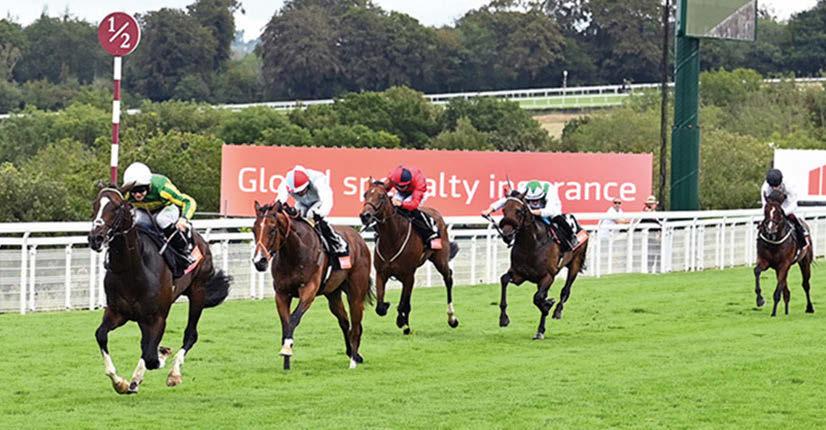
different level,” he says. “Go back ten or 15 years and if you bought a nice horse with a good pedigree, you’d be guaranteed to, at worst, get your money back. But it doesn’t really matter what you give for them [at the yearling sales] if they don’t do a good clock. Like most other horse sales, whether it’s Flat or National Hunt, the best ones sell well, but when you move down the pecking order that little bit, the market gets very weak.”
Those sentiments are echoed by Williamson, who says, “It’s made us up our ante in terms of how they breeze and how professional they are. Yes it’s become a bit polarised around the clock, but we just hope that buyers can see the big picture.”
For buyers like Brown, that big picture is becoming ever more detailed. While he cannot reveal the precise methods that Blandford Bloodstock employ, times are just one datapoint – along with details such as stride length and frequency, and consignors’ previous results – that are factored into a complex equation.
“What’s changed from our perspective is that we now have an enormous amount of data,” Brown says. “Like any dataset, you can look at it and find angles. Time is important; at the end of the day, we’re in the business of buying the horse that can go from A to B the fastest. But you have to take into account lots of different variables. I’ve said it so many times, if you went to sales and just bought the three fastest horses, you would spend a lot of money and do very badly.
“Another key thing is that by the time that horse walks into the sales ring, you can have judged that it’s got a pretty good temperament and that it’s pretty sound. You can’t do that with yearlings.”
Mixed opinions
Despite the clock being a ubiquitous
feature of European breeze-up sales, times are not published on an official basis by the sales houses, as is the case in the US. Instead a range of agencies take their own, some of which share the data across the buying bench. The idea of officially published times has been floated in Europe, although those in favour appear to remain in the minority.
“If you want to go down the route of official clocks, what happens if my jockey is 7lb heavier than the next jockey? What about the thunder storm just before the Craven last year? There’s too many variables, particularly with the ground and wind conditions,” says Williamson.
Brown has an even stronger reaction to the notion of official times.
“I’m vehemently against it,” he says. “There’s a group of people who understand times, understand all the different variables, and what they mean. But if you give that to Joe Public you’ll completely ruin it because they don’t get the nuances involved. Clearance rates
would crash and it would be very tough to sell a horse outside the top 20 per cent, which is what you see in America. It would make no difference to the top of the market but it would make the middle to lower far more polarised. It would be a disaster.”
There are some in favour of official times though, Browne included, albeit with one important caveat. “I’ve been saying it for a couple of years now, I think we should be going for the official clock,” he says. “I don’t see any advantage now in not having it. My angle all along has been that if we had the American clocking system, that would mean seconds broken down into fifths, as opposed to what we have with unofficial timing, when seconds are broken down into hundredths. When you break that second down, the smaller the fractions, the more difficult it becomes. I think having it broken down into fifths is easier on the horses and the vendor.”
For context, just one second separated the fastest 51 lots timed at last year’s Doncaster Breeze-Up Sale.
It is widely accepted that the more uniform nature of dirt tracks in the US means a fast breeze at the sales is more likely to translate into a high level of ability on the racecourse. In contrast, European turf racing calls upon traits unlikely to be revealed in their entirety by a two-furlong breeze. It is, therefore, interesting to note that American sales offer a ‘gallop only’ entry option, where lots go through their paces under tack, but work on the bridle rather than flat out.
The pin-up horse for this new approach is the Mark Casse-trained Sandman. The son of Tapit has been Graded stakes placed on three of his seven starts after changing hands for $1.2m at Ocala last March. This month’s OBS March Sale saw three ‘gallop only’ lots come under the
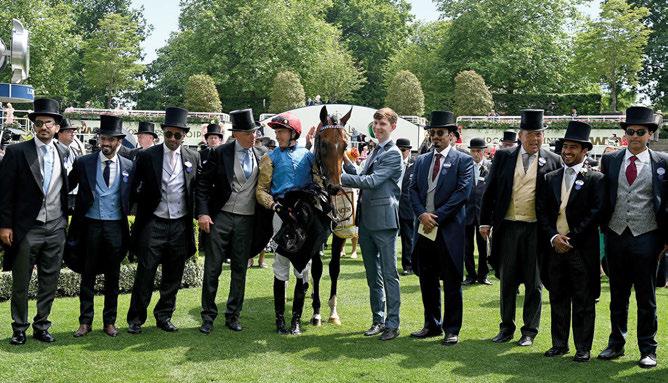
hammer, and the two that sold were led by a Curlin colt bought by Michael Maker for $300,000.
While European buyers may have adopted their timing system from the US, Williamson doubts we will see an equivalent of the ‘gallop only’ entries on this side of the Atlantic any time soon.
“Everybody wants to be faster than the next fella, or be a bit more stylish, so you need to see something with a bit of speed and style,” he says. “I think we’re at a very good place because we’re getting results, we’re spending more money on buying better horses and we’re selling better horses. Our results speak for themselves.”
While official timing and ‘gallop only’ options may remain some way off, the 2025 European breeze-up season will soon be upon us. Things kick off at Osarus in the south west of France on April 9 before the Tattersalls Craven Sale brings the curtain up on the British season five days later.
After a memorable yearling sales season, hope is high that the strength of trade seen last autumn will roll on into the spring. Things got off to a bright start in the US, with OBS’s March Sale witnessing a new auction record when a Gun Runner colt fetched $3m from Donato Lanni on behalf of Zedan Racing.
“We always have to be hopeful, especially at this time of the year,” says Williamson. “The yearling market was very, very strong so we’re hopeful that there are some orders left over. There are certain people who just like buying breeze-up horses and have had good results doing so. There shouldn’t be any reason why they won’t buy breezers again this year, so hopefully it’ll be stronger than ever.”
Browne is similarly optimistic about the top of the market, although is predicting an unwelcome level of polarisation will persist elsewhere.
“You don’t need a crystal ball to know that if you have a good horse this year, there’s half a dozen people out there to buy them and they can give any kind of money,” says Browne. “But you’d like to see something happening to the middle to bottom of that market.
“You can still buy a breeze-up horse that’ll win you plenty of races, but people can’t see it. That’s the worry. It’s so polarised, it’s all or nothing.
“I still think the breeze-ups don’t really get the credit they deserve, there’s still some people out there who doubt it. I know I’m biased, but I think there’s no doubt anymore. These breeze-up horses have proven themselves time and again.”
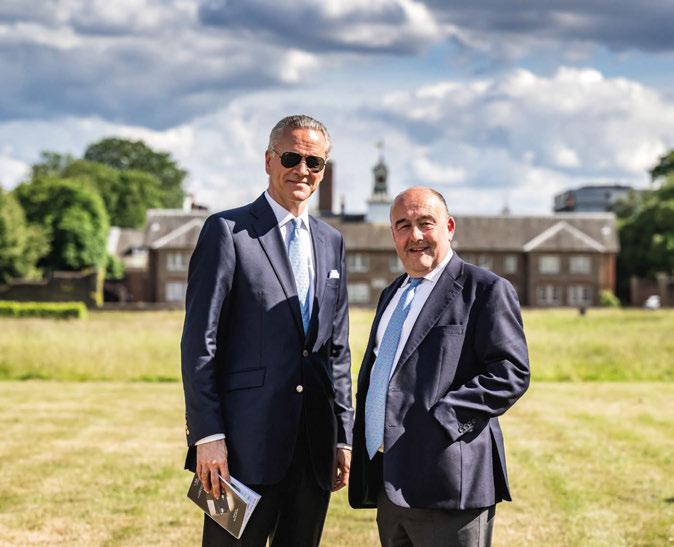
‘We think it will add to the market’ – Goffs gearing up for new breeze-up addition
The evolution of the breeze-up market has seen a new date added to this year’s European circuit. Goffs will host the inaugural Classic Breeze-Up Sale on June 28, the Saturday of the Irish Derby weekend.
Horses will be put through their paces at Naas racecourse five days in advance of the sale, mirroring the system used at the two-year-old sales in the US.
The name not only reflects the sale’s place during a weekend of Group 1 racing, but points to the type of animal likely to be on offer.
“In the last few years there’s been a growing clamour from a variety of breezeup consignors to hold another Irish breeze-up,” says Goffs Group Chief Executive Henry Beeby. “Given that the overwhelming majority of breeze-up consignors are based in Ireland, it seemed to them and various people watching that it was almost nonsensical that there was only one breeze-up in Ireland, but three in Britain and one or two in France.
“We believe this sale will appeal to the later maturing horse, but is also a good option for those quality two-year-olds that were maybe entered in Doncaster or some of the other first-choice sales earlier in the season, but had a small issue and didn’t make it.
“A number of major consignors have said they’ll have one or two, but might have three or four if things work a certain way. We’re talking about a target average of around €50,000 and it’s going to be a tight catalogue.”
With any initial concerns about expanding the breeze-up calendar allayed, the Goffs team are now focussing on launching the sale with a bang.
“We’ll sell on the eve of the Irish Derby and make a bit of an occasion of it,” says Beeby. “There’s going to be a bit of a festival atmosphere with a lot of people in town, so we’re hopeful of a good audience. Of course, it will all hinge on the horses, we have to get the horses first and foremost, but we believe we’ll do that.
“It’s been mentioned to us for three or four years and we’ve held back and held back, and now we’ve decided this is the year to go,” he adds. “We think it complements what we’re already doing and that it will, hopefully, add to the market rather than in any way detract from it.
“The feedback from potential purchasers has been good. We think there’s enough of a hunger for it, and enough of a need for it, that probably didn’t exist five or six years ago. We’re confident that this certainly exists now.”
Roaring Lion - Beach Bunny (High Chaparral)
Group 1-winning son of Champion ROARING LION
with STUNNING FIRST FOALS

I really support this horse and I'm planning to back him strongly with my mares and in the sales ring.
- Ahmad Al Shaikh

DUBAI MILE was a very smart colt with a great mind. Very sound with clean wind, he showed many attributes that trainers look for in a racehorse - ability to handle all ground & found plenty for pressure.
- Trainer Mark Johnston (& breeder of the Deirdre foal below)
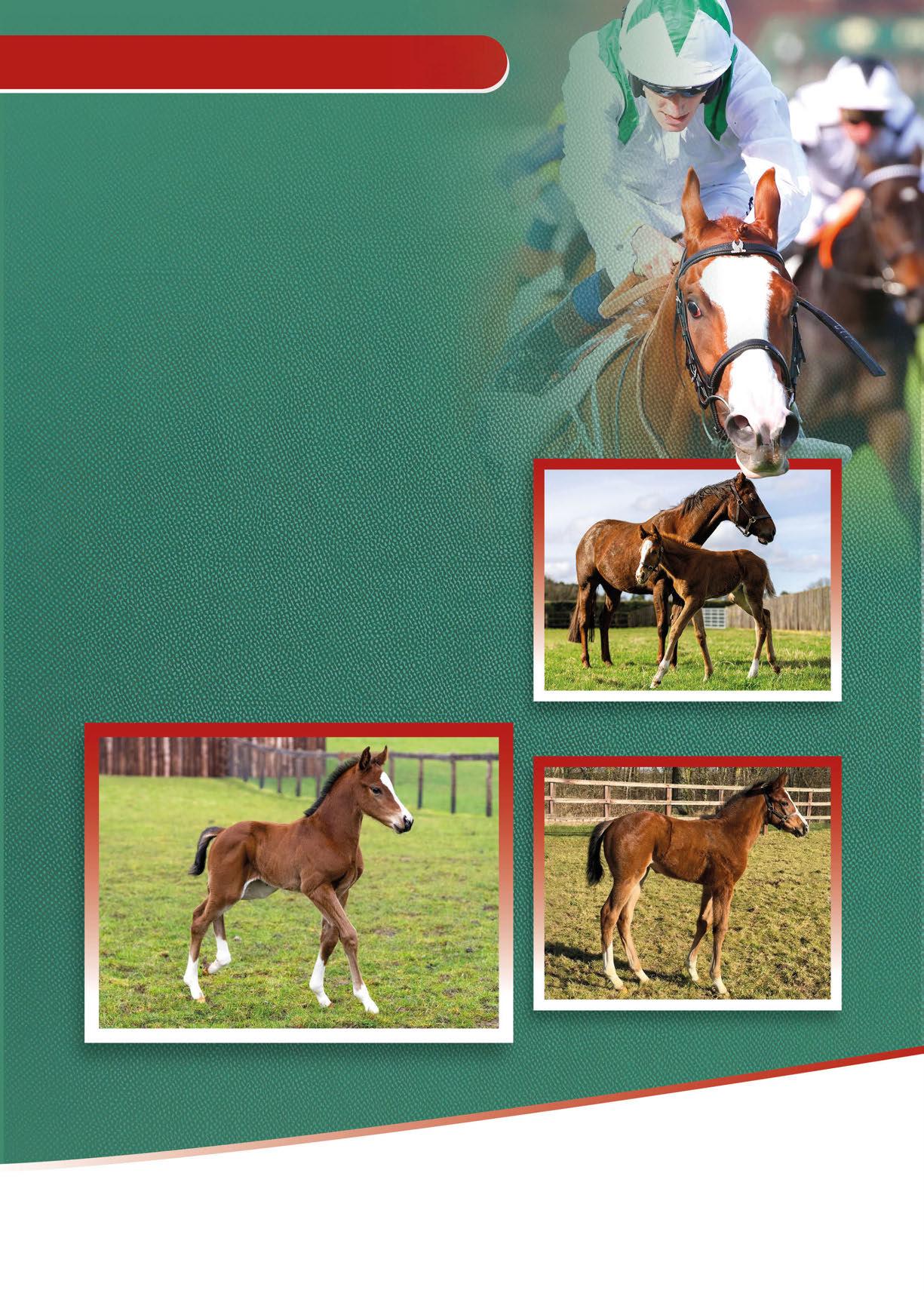
DUBAI MILE colt out of the Stakes mare Deirdre (returning to Dubai Mile)
Fee: €4,000 LF 2025
Contact: David Stack | +353 (0)86 231 4066
| www.coolagown.ie
DUBAI MILE flly out of the Listed-winning
to Dubai Mile)

Co. Cork
Sires with first 2yos
With two-year-old racing up and running for the season and the breeze-up sales on the horizon, crunch time is approaching for those stallions with their first crop of runners this year
Words: Nancy Sexton
Aglance at the first-crop sires market suggests that the race for the 2025 title is done and dusted. At odds of 1-2, Starman is the overwhelming choice to fire in the most winners and become the latest leading freshman sire off the Tally-Ho Stud production line.
Therein lies one of the pivotal factors in Paddy Power’s pricing. The Mullingar stud, owned by Tony and Anne O’Callaghan, has few peers when it comes to launching a young stallion, with a numerically strong broodmare band to call upon alongside a depth of outside support built upon decades
of respect.
Therefore when David Ward’s homebred Starman retired to stud at €17,500 as Europe’s champion older sprinter of 2021 having won the July Cup and Duke Of York Stakes, he attracted no fewer than 254 mares. That translates into a crop of over 200 juveniles to run for him this year, among them yearlings that sold for up to 260,000gns and plenty in the hands of good trainers. They include his own trainer Ed Walker, who has nine by the son of Dutch Art at his Kingsdown Stables in Lambourn.
“We bought a few at the sales and I have a couple for David Ward,” says

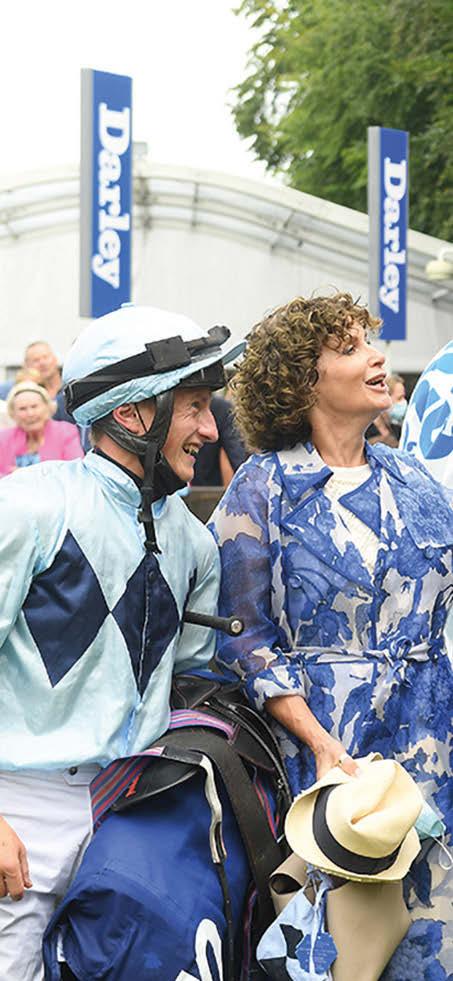
Walker. “So far, I couldn’t be happier. Starman was seriously good himself and he’s passing on so many of his qualities including his power and his temperament.
“A few of them are sharper than maybe we expected. My earliest one could be a colt we bought for £25,000. He’s a really nice horse out of a Mehmas mare and he could be quite sharp.
“Overall, they’ve all got a bit of size and scope but from what I’ve seen so far from them, one of the biggest ticks is temperament, which he had himself. We didn’t really know what we had with him until the spring of his three-yearold year when racing got stopped [due to Covid] because he was just so laid back – as a two-year-old he was asleep. They’ve all got that good attitude and seem to love their work.”
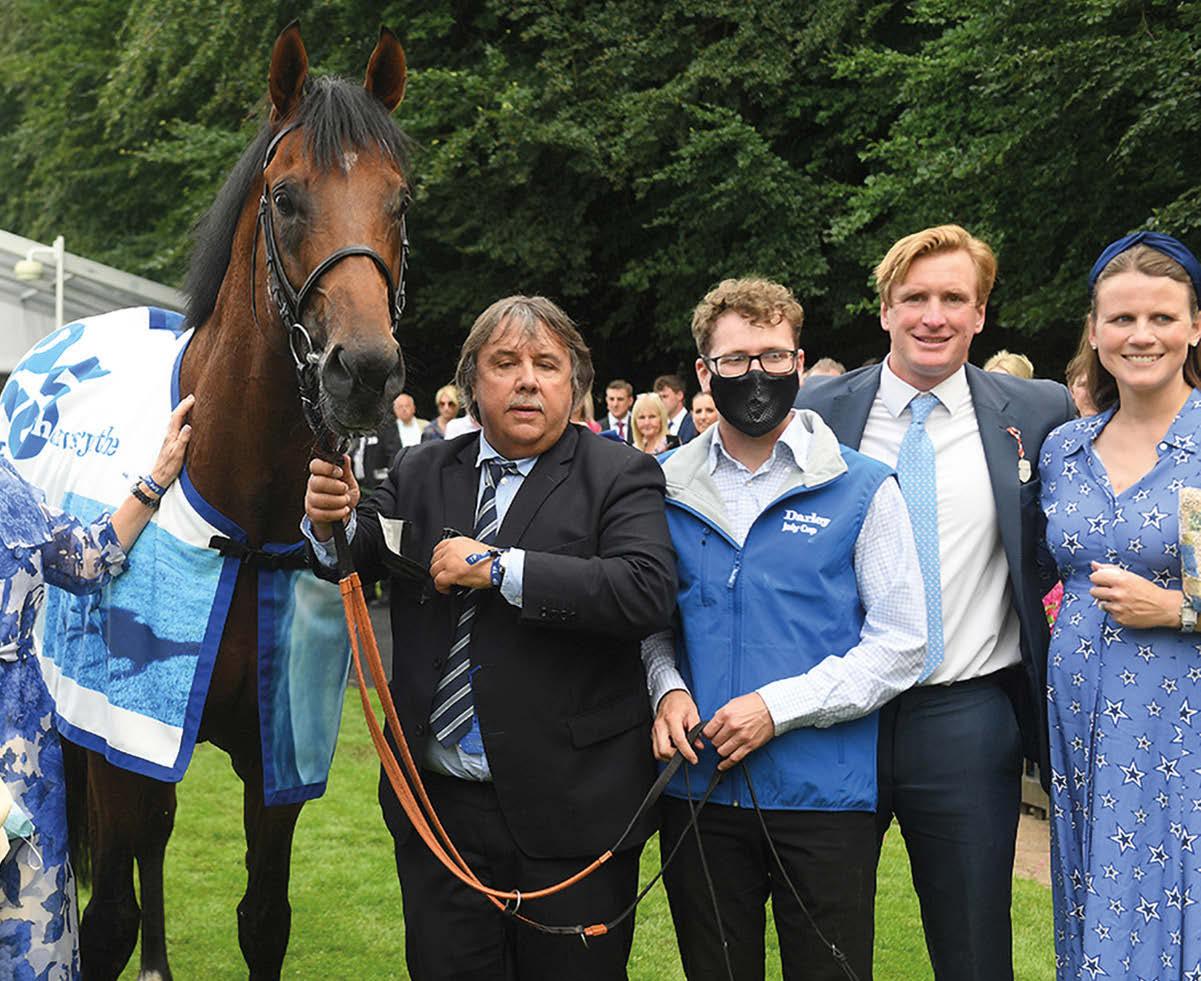
He adds: “There are expectations with the bookies pricing him the way they have, so he is going to have a bit of pressure on him. But hopefully come Goodwood time they’ll be winning left, right and centre. He’s the first stallion I’ve trained, so I’m very excited.”
Another branch of the O’Callaghan family, Gay and Annette O’Callaghan, stand a very legitimate choice in Supremacy at their Yeomanstown Stud in County Kildare. Successful in the Middle Park Stakes, he is the first son to stud of Mehmas, himself one of the prepotent influences within the current juvenile scene.
With a powerfully commercial profile, breeders flocked to Supremacy at an opening fee of €12,500, resulting in over
120 two-year-olds including those in the hands of such adept juvenile handlers as Wesley Ward, Karl Burke, Andrew
“One of the biggest ticks is temperament, which he had himself”
Balding and his own trainer Clive Cox. Paddy Power have responded by installing him at 7-2.
Beyond Starman and Supremacy, it’s 8-1 bar, a price that doesn’t necessarily provide justice to the quality on offer.
For instance, first blood has gone to Darley’s Breeders’ Cup Mile winner Space Blues, who fired in a winner on the first day of the Irish turf Flat season in Power Blue. The Adrian Murraytrained colt was well-backed to make a winning debut in the five-furlong maiden that has thrown up Bucanero Fuerte and Arizona Blaze in recent years and looked a smart colt in the making when powering home by over three lengths.
He is one of 118 foals bred off a first-year fee of €17,500 by Space Blues, whose first yearlings sold for up to €420,000. A tough horse whose wins also included the Prix Maurice de Gheest and Prix de la Foret, Space Blues comes across as a typical one by his sire

›› Dubawi, which is perhaps no surprise given he’s also a member of Dubawi’s own extended family. Interestingly, Power Blue is inbred 2x3 to Dubawi and therefore three times to the Sunbittern clan.
There could also be several sharp ones among the first crop of St Mark’s Basilica (10-1) if the early chat is any indication. The son of Siyouni was the most accomplished among the 2022 intake, a Dewhurst Stakes winner who went on to win the Poule d’Essai des Poulains, Prix du Jockey Club, Eclipse Stakes and Irish Champion Stakes at three, and duly stood his first season for Coolmore at €65,000. He’s benefitted from the early support of a number of successful international breeders; they include Ecurie des Monceaux, who were rewarded at Arqana last August as the vendor of a €1.7 million filly out of its blue hen Prudenzia.
‘The one that jumps out at me is St Mark’s Basilica’
With the breeze-up sales fast approaching, this is one sector where early opinions on young sires are formed pretty quickly. The breeze-up community aren’t shy when it comes to such matters and as we’ve seen in recent years when the likes of Night Of Thunder and Blue Point were the recipients of an early buzz, they rarely get it wrong.
Eddie Linehan, Lackendarra Stables
“I have a lovely Palace Pier colt heading to the Tattersalls Craven Sale. I’ve very happy with him, he has a super temperament and will be a lovely colt for the second half of the season.
“I’ve also got a Nando Parrado filly heading to the Guineas Sale. She’s a gorgeous big filly who is showing a lot of natural speed and has a great temperament as well.”
Willie Browne, Mocklershill
“The one that jumps out at me is St Mark’s Basilica. I’m pre-training quite a few and have a couple to breeze, and they’re pretty obvious at the moment. I went to see him at Coolmore off the back of what I have at home and have booked a mare. I was very impressed with him; he’s a quality horse and a great walker. The ones I have by him are similar, they are all a type. They have speed and they want to please.”
Norman Williamson, Oak Tree Farm
“I’ve got a St Mark’s Basilica colt going to
the Craven. He’s a fast, sharp-looking twoyear-old. He’s very strong, built like a tank and an amazing mover. I was listening to what Aidan O’Brien was saying about his two-year-olds by the horse the other day and it sounds like their temperaments are very good – my lad has a temperament
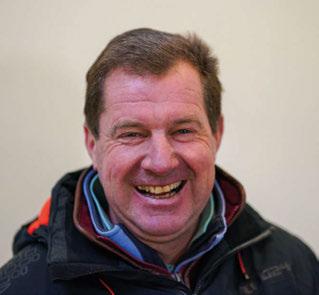
Roger Marley: likes his colt by Ubettabelieveit, a sire he knows
to die for. He’s now got to go and do it on the day but we like what we see.
“I have a lovely colt by Maxfield going to Arqana. I saw one breeze like a bullet at OBS the other day [where his progeny sold for up to $1.25 million]. I bought my fella at Keeneland. He’s a big, goodlooking horse with a great hip and good temperament, and I think he could be one for either turf or dirt.
“I’ve also got a very nice colt by Starman. I bought him at the last sale
TATTERSALLS
at Goffs. He’s got an outstanding temperament, nothing bothers him and he wants to please. He’s a beautiful type, a very good mover but he’s big, so he’s waiting for Tatts Ireland. Like his sire he stands over a lot of ground.”
Roger Marley, Church Farm Stables “We have a colt going to Doncaster by Ubettabelieveit, who we also had here. He looks to go ok – he’s sharp and precocious-looking.”
Michael Fitzpatrick, Kilminfoyle House Stud
“I have two by Lope Y Fernandez for the earlier sales – a filly going to the Craven and a colt going to Doncaster – and I genuinely like both of them.
“The colt is a strong sort who looks sharp and early. The filly will be more one for seven furlongs. She has a lot of quality and goes really well. She’s lovely.”
Sarah O’Connell, Longways Stables
“We are only starting to step up their work so it’s early days yet.
“We have two colts by Space Blues, one for the Craven and one for Doncaster. Both seem precocious. The colt for the Craven is out of an Exceed And Excel mare, so you’d expect plenty of speed there. He looks like he could be very smart.
“We have two by A’Ali, both sharp, forward types. The colt for the Craven is out of a black-type performer. I would
Available at 20-1 is Palace Pier Darley’s son of Kingman was a brilliant miler whose nine wins included five at the top level. It’s also worth bearing in mind that he was unbeaten at two.
Palace Pier began his stud career at £55,000 and has 111 two-year-olds on the ground.
Another smart miling son of Kingman, March Hare Stud’s Roseman, also has runners this year.
Lope Y Fernandez (20-1) retired to the National Stud in Newmarket with the support of a strong partnership behind him, something that has stood him in good stead; he has approximately 100 two-year-olds including four that sold for north of 100,000gns as yearlings.
He was Group 1-placed on five occasions at three and four but was also a high-class two-year-old. If his progeny follow suit, then he could well be making a mark from midsummer onwards.
Lope Y Fernandez shares his sire, Lope De Vega, with the Irish National Stud’s Lucky Vega (16-1). A Group 1-winning two-year-old himself, some encouragement surely can be taken
“Expect A’Ali’s progeny to be plying their trade early”
from the rapid start that he has made in Australia (see panel)
The sharpest among this group, however, is Newsells Park Stud’s A’Ali
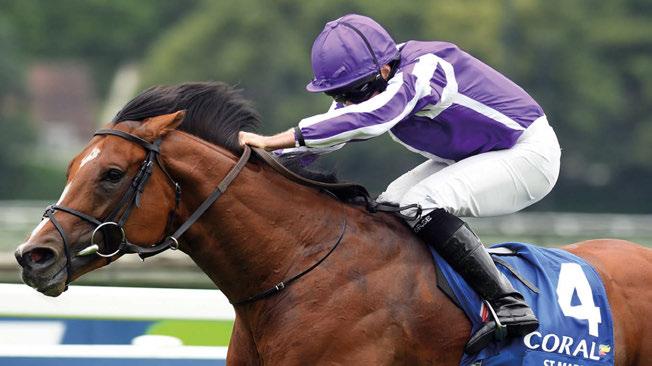
imagine he’ll be out early.
“The Supremacy we have is a strong, good-looking filly with a nice pedigree. She heads to the Craven. She goes well but will need a bit of time.
“We also have three Starman colts, one to breeze and two in pre-training. These have unbelievable temperaments, pure dudes to do anything with. All have size, scope and strength.”
George Peckham
“Our A’Ali filly out of Luminesce is a strong, compact, good mover with a good attitude. She looks very precocious and is doing everything right so far.
A’Ali was also a breeze-up purchase and proved to be an early type, winning the Norfolk impressively after only one previous start and going on to win
another two Group 2s as a two-year-old as well as progressing to being a Group 2 winner at three and being placed in a Group 1. The dam was a winning twoyear-old herself and an own sister to Group 2 winner Polly Pott. Therefore, I would like to hope this filly will be seen on the track soon after the sale and hopefully winning!
“Our Starman out of Merry Banter is another sharp, precocious, attractive and athletic filly. Starman was a very progressive sprinter, culminating in winning the July Cup and two further Group 1 placings. The mare was incredibly tough and hardy, winning seven times and being placed 22 times including in Listed company. This filly has developed and strengthened and is looking like a real two-year-old type.”
(20-1), a high-priced breezer who backed up his price tag by landing the Norfolk Stakes, Prix Robert Papin and Flying Childers Stakes as a juvenile. Also a Group 2 winner over five furlongs in the Sapphire Stakes at three, he has 75 two-year-olds, among them a colt knocked down for 200,000gns to Anthony Stroud on behalf of KHK Racing. Expect his progeny to be plying their trade early.
Sharp and fast is also the profile behind Ubettabelieveit, another highclass breezer who went on to win the Flying Childers Stakes. The Mickley Stud stallion also has around 75 in his first crop, giving him enough ammunition to have a chance of becoming the next successful sire son of Kodiac. He is priced at 50-1 ahead of his paternal halfbrother, Coventry Stakes winner Nando Parrado. He can still be backed at 66-1 despite supplying an early impressive French winner in Golden Breeze.
Capital Stud’s Mill Reef Stakes winner Alkumait (250-1), a Showcasing halfbrother to Chaldean, is another who appeals as the type to throw early stock.
Nor should Chapel Stud’s Bangkok be underestimated. The Group 2 winner doesn’t have numbers on his side but he has been supported with some quality mares by King Power Racing and the resulting foals are housed with the likes of Andrew Balding.
Among the Group 1 winners at stud across Europe, Darley’s Poule d’Essai des Poulains winner Victor Ludorum found favour at the sales, where his progeny sold for up to €420,000. German hopes rest on the regally-bred Japan, the Juddmonte International winner who stands at Gestut Etzean.
Courtesy of Paddy Power
‘He’s lighting up the world’
Dispense with the crystal ball. When it comes to the prospects of Lucky Vega, it could be argued that some of the guesswork has already been taken out.
A very good two-year-old himself who won the Phoenix Stakes for Zhang Yuesheng and Jessica Harrington, the son of Lope De Vega was retired midway through his three-year-old season to take up stud duty at his owner’s Yulong Stud in Australia. Fast forward to this year and he has already thrown two stakes horses in that first southern hemisphere crop. They include the hardy filly Within The Law, who has rattled off wins in the Group 2 Sweet Embrace Stakes, Inglis Banner 2yo Stakes (a restricted Listed race) and ATC Inglis Nursery (also a restricted Listed race) for trainer Bjorn Baker.
As a result, Lucky Vega has already flown past the A$1 million mark in earnings and into third on the Australian first-crop sires’ list behind Ole Kirk and Wootton Bassett (who qualifies as an Australian freshman sire).
Lucky Vega serves the northern hemisphere season under the Yulong banner at the Irish National Stud. Priced at between €15,000 and his current level of €12,500, he has been busy throughout, in part due to the strong support afforded to him by Yulong; the operation sent the horse around 30 mares in his first season, among them the dam of multiple Group 1 winner Alcohol Free, and over 60 in his second, including Group 1 producer Khor Sheed.
That kind of belief allied with a depth of outside support that has resulted in a first European crop of around 100 foals would be enough in itself to make him appealing at 16-1 to lift the first-crop sires’ title. Add in the recent Australian results and confidence is understandably running high.
“He is lighting up the world down under in Australia,” says Paul Curran of Yulong Investments. “He boasts some huge statistics from what we would say was a relatively moderate number of mares in his first crop. He’s already had a Group 2 winner in Within The Law and the colt Vega For Luck [Listed-placed] is another extremely exciting prospect who Mr Zhang purchased privately in the past few weeks. There are three individual winners from seven runners, two stakesplaced horses and one stakes winner –
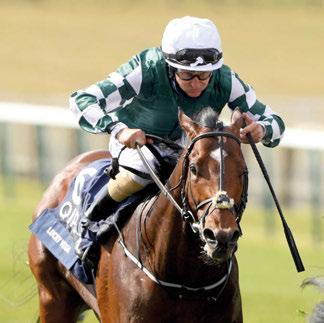

an incredible return on just seven runners so far. How can you not be excited about how his two-year-olds will go here in the northern hemisphere?”
He adds: “The Australian market has reflected what the buyers see in this stallion. Since his run of good results on the track, everyone seems to want to buy one. A homebred filly of ours recently sold for a record price of A$380,000 at the Inglis Premier Yearling Sale. The week before that we sold another homebred filly for A$340,000 at the Classic Yearling Sale in Sydney. His sales average for 2025 in Australia currently stands at A$162,000. They’re astronomical returns considering his fee in his first year was A$21,000.”
Irish National Stud Chief Executive Cathal Beale echoes those views.
“There’s no doubt that Lucky Vega has been getting stock in his own likeness,” he says. “The one trait he instils is great movement, which is one of his best traits. We recently sent an email notice out to all our clients with photos of four yearlings that sold strongly in Australia last week and any of the four could be Lucky Vega at that age.”
Australian results don’t always translate to this part of the world but in this instance it’s so far so good, with the Yulong team happy with what they’re seeing so far here. Seven of his yearlings made six figures at auction last year led by a pair of 180,000gns colts who were knocked down to Yulong and Maxi Joorabchian with trainer George Scott.
“A few of our homebreds are coming to the fore already,” says Curran. “We have a very nice colt by him out of Bubbling Up named Boiling Over who will be one of our earliest runners. He is in training with Karl Burke, who talks very highly about him. He was prepped at Baroda Stud and all the word from David
Cox and the team there was he works to please and has a great mind, so it’s no surprise he’s pleasing Karl so well.
“Another homebred that we are sweet on is a colt out of Listentome, who is currently in pre-training at George Peckham’s in Newmarket but will soon head to his new life in training with John and Thady Gosden. George really likes the colt and says he has a fantastic mind.
“Away from the homebreds, we have a few purchased by Mr Zhang who are catching the attention. There is a colt named Knights Charge out of Aimhirgin Lass with Roger Varian. Roger sees him as a late spring, early summer horse – he is doing everything right.
“Another one we purchased who is doing well is a colt out of Song Of Time named Time Alone who is with Jamie Insole and Dr Richard Newland. He looks again to be one of our more forward ones. Jamie says he has a fantastic mind and really likes doing his work. We purchased him as a foal at Goffs from a very good breeder in Irene Sheldt and he has always been a beautiful colt.”
In what is a pivotal season for the stallion roster at the Irish National Stud, the operation also houses Nando Parrado. The sharp son of Kodiac has over 100 two-year-olds with which to go to war with including several with Clive Cox, who saddled him to win the Coventry Stakes. He is already off the mark courtesy of his first runner Golden Breeze, who ran out the easy winner of her debut at La-Teste-de-Buch.
“I see that Nando Parrado has five Donny rockets entered in the Goffs Breeze-Up Sale,” says Beale. “I’m told they are forward, sharp and have great minds like their sire and grandsire. The word has been extremely positive and given Kodiac’s ability to consistently upgrade stock, we are really excited.”


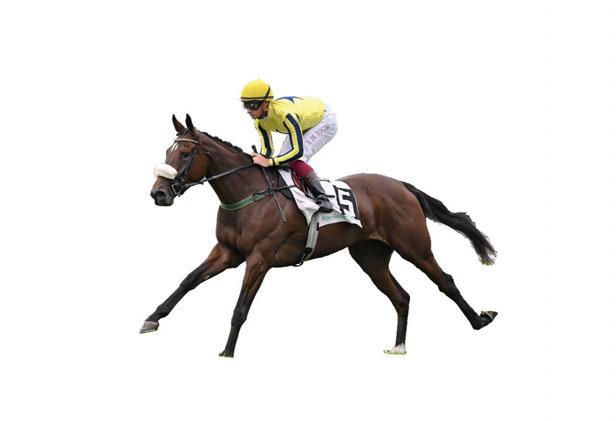



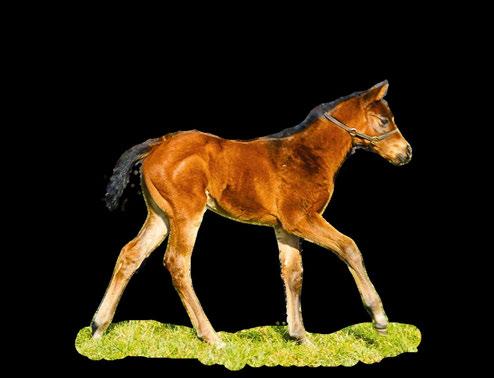
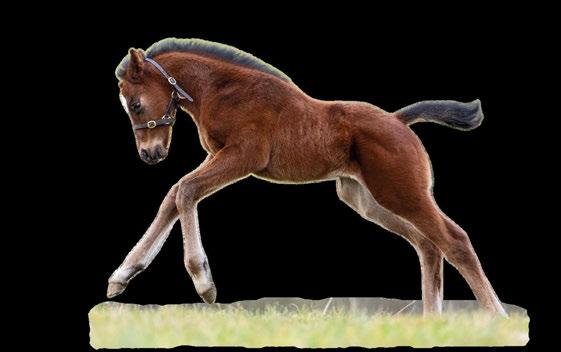

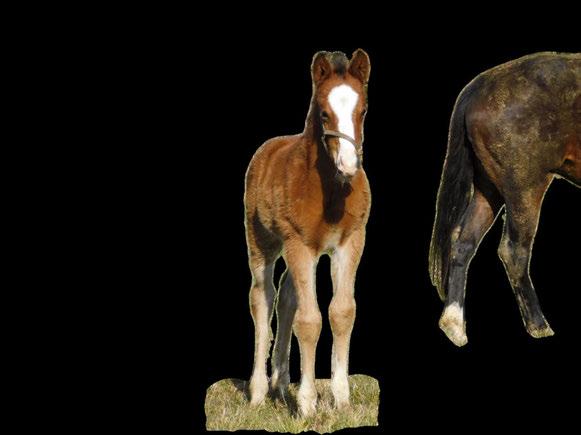

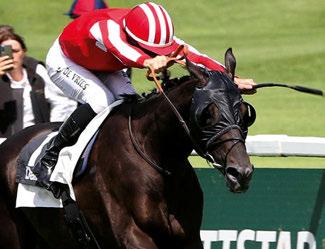
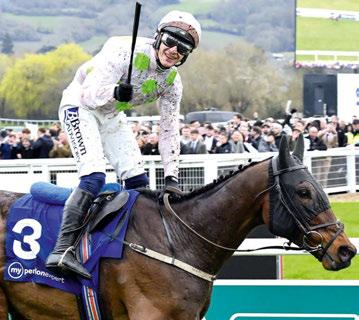
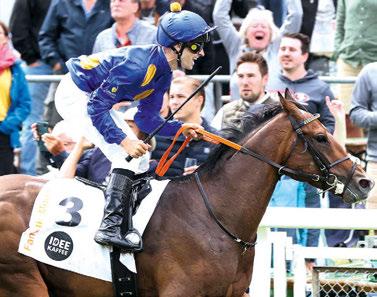
Grosser Preis von Baden, Gr.1, Baden-Baden
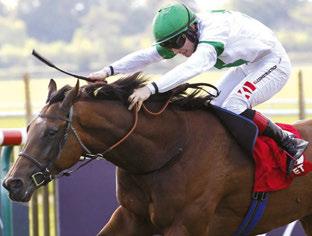
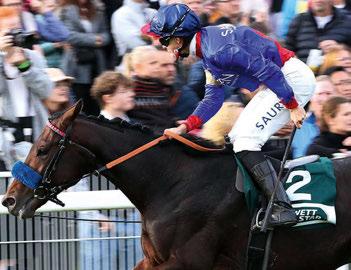
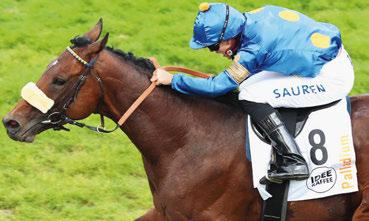
Spring Breeze Up Sale: 30th May 2025
HIT August Online-Sale: 15th August 2025
Premier Yearling Sale: 5th September 2025
October Mixed Sales: 17th and 18th October 2025


Sift through the generations of a Littleton Stud horse and chances are that Kelly Stevens could tell you all about it.
Stevens’ dedication to her role at Jeff Smith’s operation was recognised in February at the Thoroughbred Industry Employee Awards, one of the most uplifting events of the year at which Stevens came home as winner of the stud staff category.
Stevens was nominated by stud manager David Bowe and was crowned the winner on the night just ahead of Fiona McGlone from Hascombe & Valiant Stud and Kim Skolfield from Newsells Park Stud.
Numerous good horses have been foaled and raised on Smith’s pocket of land near Winchester. Decades of success ranging from the flying halfsisters Lochsong and Lochangel to last year’s Group 1 performer See The Fire is testament to the management of the families, many of which have been nurtured at Littleton over the course of several generations. The team is tight-knit and predominantly also long-serving.
“When I saw Jeff after I won the award, he was over the moon,” says Stevens. “It’s lovely for me but also lovely for everyone who works here. I’ve worked with the same team for a long time. I’ve had great support from Jeff and David as well as everyone else.
“The team have been integral to my success from Katie in the office to Shannon, Julie, Sharon, Abbie, Emma and Anna on the stud and then the farriers and veterinary team. I am what I am from hard work and determination but equally from what other people have put into me as well. To get the acknowledgement is great and I’m hoping that it will also inspire some of the newcomers to the stud to shine.”
Having gained her equine grounding in the sports horse world, it was a chance sighting of an advert and encouragement from a friend that initially led Stevens to Littleton Stud.
“I always had a love for horses,” she says. “I’d ridden when I was young, nagged my parents into having riding lessons, and it developed from there. I did a bit of sports horse side of things – I did an equine sports massage course so was involved in the conformation and biomechanics of horses. Then I moved back to Hampshire and saw

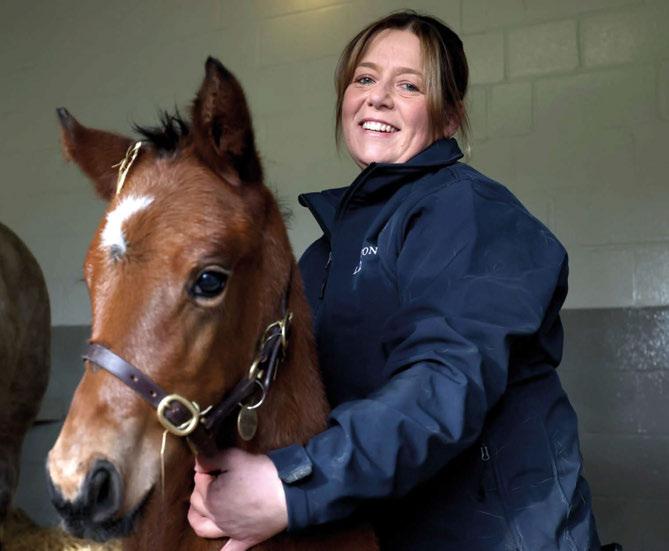
this advert for sitting up staff. A friend said ‘well, why don’t you give it a go?’ And I did.
“Working with horses is like a drug. It broadened my knowledge of the racing industry and as I went along, I thought all I want to do now is know more.”
At the time of Stevens’ arrival, Smith’s brilliant sprinter Lochsong and her Group 1-winning sibling Lochangel were still resident alongside the demoted Nunthorpe Stakes winner Blue Siren and Oaks fourth Spot Prize. Lancashire Oaks heroine Barshiba was still in training with David Elsworth. Each have gone on to forge their own legacies at stud, notably Barshiba, whose daughter Arabian Crown defeated Golden Horn in the Juddmonte International. It is that Barshiba line as well as that belonging to Strictly Dancing, a daughter of Lochangel who has provided Littleton with a pair of Sceptre Stakes winners in Dancing Star and Foxtrot Lady, which is held in most affection.
“I’ve dipped in and out,” says Stevens. “I did the sitting up, then I worked for a year in the equine hospital but still did weekends here. Then I came back full-time.
“We’re very lucky here that we know all the families so well and that helps us
to pick up subtleties in the horses. If one is behaving oddly in the paddock or not eating as usual, then you can say ‘well let’s pull a blood and keep an eye on her’. We get to watch them grow and develop, and if one needs a bit more time, then we can act on it. We are lucky like that.”
Stevens deflects the significance of her achievement to the people around her, in particular David Bowe.
“Follow your dreams,” she says. “I never thought this would be a career for me but the opportunities fell in the right way. I put a lot of that down to the people around me. I’ve got a really good support network at home. It can be a hard job but also very rewarding. But we have a really good work life balance here – that’s something we try and encourage.
“Working at Littleton has never felt like a job. It’s a way of life. To work for Jeff Smith and with David has been so rewarding. David has inspired me to be better and always been there to support me, offering his ideas, knowledge and experience – he even listens when my ideas might sound completely out there! It has allowed me to grow in confidence and expand my knowledge.”
Circuit • By Carl Evans
A breakthrough for commerciallyminded trainers of British point-topointers was made at this sale by virtue of the mare Edith Pelham.
The five-year-old daughter of Blue Bresil was knocked down for £180,000, becoming the first horse from a British yard to top a specialist sale largely dedicated to point-topointers. Over the previous 20 years, during which such sales on either side of the Irish Sea have grown in number to around a dozen, the number one slot had been occupied by Irish pointers.
This is the first sale of the year at which four-year-old pointers go under the hammer, but the catalogue was markedly smaller than the version held 12 months earlier. Of the 22 offered lots, 19 sold and the expected drop in turnover reached a figure of £1,586,000 (-36 per cent). On the plus side, there was a 15 per cent rise in the average price to £83,474, while the median rose 33 per cent to £80,000.
Kanzler, a four-year-old son of German stallion Tai Chi, headed trade among his age group when selling for £165,000. Bought for just €4,000 as a two-year-old store at Arqana, he later joined Wexford trainer Mick Goff, who
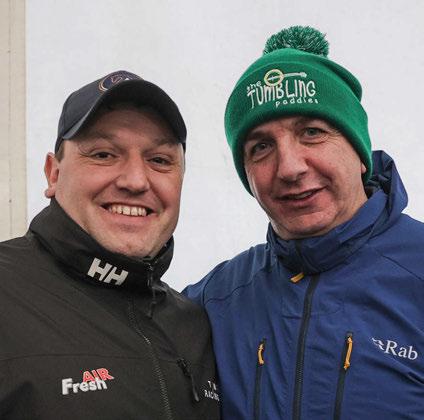
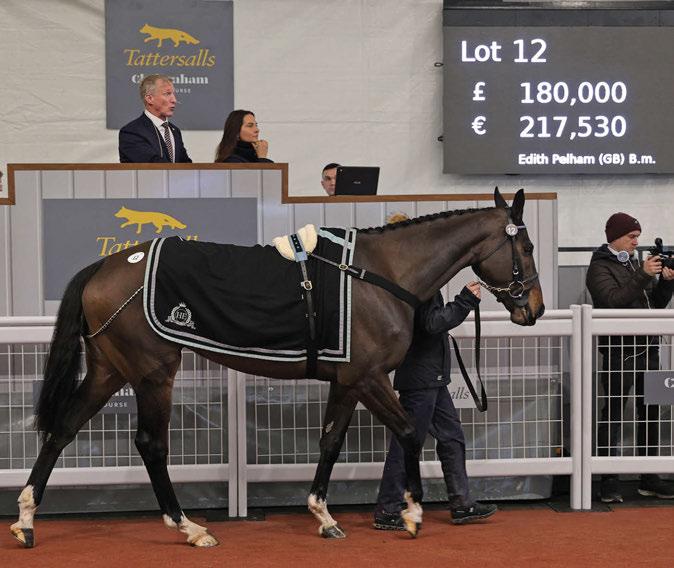
saddled him to win a maiden point on debut, and who at this sale looked on as Harold Kirk lowered the hammer on behalf of Willie Mullins.
Another four-year-old gelding, Taurus Bay, left Denis Murphy’s yard bound for a place with Ben Pauling after selling for £155,000, while a bid at the same price enabled AJ O’Neill to sign for five-year-old gelding Vanderflier. He will race on from the yard O’Neill shares with his father, Jonjo.
The history-making Edith Pelham arrived at the ring from the Warwickshire stable run by Gina Andrews, who trained the mare to win on debut a maiden point-to-point under the trainer’s brother Jack just ahead of the sale. Andrews and her husband Tom Ellis – aka G&T Racing – had bought their prized asset for £40,000 as a three-year-old store at Doncaster.
They patiently kept her as a four-year-old when the yard’s horses were not quite 100 per cent, then after she showed her mettle on the
track they sent her to Cheltenham where local trainer Fergal O’Brien made the winning bid on behalf of new clients at his yard, Jane and Fred May.
Such a result can only have boosted confidence among point-topoint trainers based in Britain who are buying stores and then running them in the ‘amateur’ grass roots sport as a way of advertising their ability. Many have felt their horses are overlooked or undervalued in the ring, but good results on the racecourse and the value to be found in buying British pointers – when compared to their Irish counterparts, many of whom are French-bred – is steadily helping their trade.
Edith Pelham could turn out to be the Emma Raducanu of the ring, the horse who topped the bill because of the absence of others, yet her price was still a superb result for her vendors and it also meant she became the highest-valued filly or mare to sell at auction straight from Britain’s point-to-point circuit.
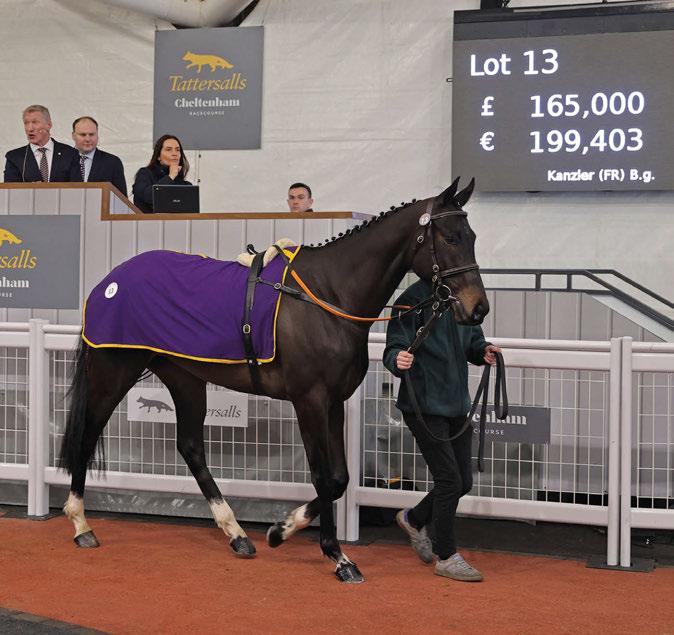
The background to some of those absences – which resulted in 22 offered lots, the smallest number since Tattersalls took on the event in 2016 – lay in the jolting and extremely sad death of jockey Michael O’Sullivan, who had succumbed to injuries sustained in a fall at Thurles the previous Saturday. Few nations of people unite as closely or as admirably as the Irish, and with racing and/or breeding reaching into almost every home in Ireland, the shared shock and grief at O’Sullivan’s death was palpable.
Without hesitation racing across Ireland set to be held the following day was abandoned or postponed, with the result that three Irish pointto-points did not take place. They would have contained up to a dozen
Edith Pelham 5 m Blue Bresil -
4 g Roman Candle - Nana De Boitron
horses that would have been offered at Cheltenham – including some likely sale-toppers – although in the circumstances no one expressed a hint of feeling sorry for themselves and to their credit not one vendor or member of the Tattersalls team made associations between the tragedy and the impact on the sale.
Sadly, Tattersalls staff had another reason for concern regarding their colleague, auctioneer Richard Botterill, an ever-present at Cheltenham sales from the time that Russell, Baldwin & Bright first staged them at the venue. As familiar to members of Ireland’s sales and bloodstock community as he was to those in Britain, Botterill received devastating medical news on the day of the sale and within a week had passed away, yet another victim of cancer.
Statistics
Sold: 19 (86% clearance)
Aggregate: £1,586,000 (-36%) Average: £83,474 (+15%) Median: £80,000 (+33%)
• Happy staff, happy horses, smart facilities kept in clean working order – are they not ingredients to which every trainer’s yard should aspire?
A cheerful ambience and sense of teamwork comes from the top, the person whose name is on the licence – and often their spouses and senior staff – and while not everyone can have a hot-line to charisma, it is a handy tool in the racing game. Results matter most, but you have to get the owners to get the horses in the first place – and there is always staff retention to consider.
So it was that racehorse owners and former breeders Fred and Jane May travelled from their Newmarket home in mid-February and made a prearranged first visit to the Cotswolds yard run by Fergal O’Brien and his partner Sally Randell. The Mays, who said they have been involved with horses for 60 years but felt they were getting too old for breeding, liked what they saw, with Jane saying: “We think the yard is run beautifully, everyone seemed to know what they were doing and the horses look exceptionally happy.”
Her comments came a few hours later and following her purchase at Tattersalls Cheltenham’s February Sale of the £180,000 top lot Edith Pelham. O’Brien had been chosen to train the mare. It is amazing what one yard visit can lead to.
Skehanagh Stables (Sam Curling)
Crossgales Stables (Benny Walsh)
Ed Bailey/Mat Nicholls/Kim Bailey
With clients of trainers Gordon Elliott and Harry Derham feeling good about buying young jumpers – in particular Irish point-to-pointers – this sale achieved a personal best in a trio of key figures.
Turnover of £3,650,000, which was marginally up on the sum achieved at the Festival auction 12 months earlier, had been beaten just three times before, twice at Tattersalls Cheltenham’s December Sale and once in November. But on each occasion larger catalogues were unfurled and the average and median prices were far lower.
The modus operandi of the Festival Sale is one of six figures, for it deals in average and median prices containing that number of digits. On this occasion the average gained 20 per cent at a new high of £158,696 while the median grew 25 per cent to another record of £150,000. Why the Festival Sale reaps the biggest prices among Tattersalls’ auctions of jumpers is down to several factors, coming at a time when point-to-point trainers have been able to give an airing to some lovely early four-year-olds and before spring weather starts drying out the ground.
Then there is the Festival factor, the dream of owning a winner at jump racing’s greatest occasion, and which after three days of racing at the meeting – and the day before the Blue Riband, the Gold Cup, takes place – has excited the palate of every owner of jumpers. This was summed up by racehorse owner Jimmy Fyffe, who spent £230,000 on the four-year-old gelding Jet Of Stars, a first-time-out point-to-point winner for Wexford’s Denis Murphy.
Fyffe, who could have bought Jet Of Stars last year as a store for €60,000 had Murphy not done so, said: “I’ve not had a winner here at Cheltenham and so I’m chasing that. I’ve had a second, but let’s see if this can be the first.” Scottish borders trainer Lucinda Russell, who joined Fyffe at the ring, has been given responsibility for sating Fyffe’s thirst for a first.
Derham, one of jump racing’s vibrant
Top lots
Name/age/sex/breeding
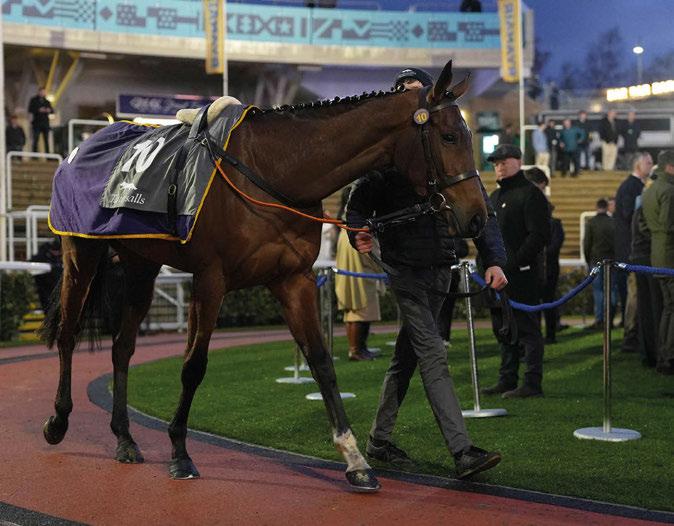
Cristal d’Estruval: one of two high-profile purchases made by Ed Bailey and Harry Derham
band of ambitious young trainers and with a yard and facilities to achieve his goals, has bought a top lot at a Cheltenham sale before, but on this occasion he purchased the top two lots, namely the gelding Cristal d’Estruval at £400,000 and the filly Clondaw Park, who was knocked down for £320,000. The first-named, a son of Crystal Ocean out of the Grade 1-placed
hurdler Aurore d’Estruval, had been bought by Irish point-to-point handler Colin Bowe for €67,000 as an unbroken store and then trained to win on debut, while Mick Goff had taken a similar route with the filly, buying Clondaw Park for €30,000 before giving her a successful first run.
Derham said Cristal d’Estruval was for “a client in the yard”, and added that
• Harry Derham, who gained a heap of knowledge while working as assistant trainer to his uncle Paul Nicholls, is now forging his own path as a trainer. Among those he is relying upon to assist in the journey is Ed Bailey, a former point-to-point rider who is gaining a growing base of clients as a bloodstock agent. In Bailey, Derham gains a two-for-one, who not only advises on the purchase of young horses, but also takes them back to an expanding breaking, pre-training and recuperation yard which he runs at his family farm in Herefordshire.
After buying the top two lots for a combined sum of £720,000 at Tattersalls Cheltenham’s Festival Sale, Derham said the four-year-olds Cristal d’Estruval and Clondaw Park would be going “to Ed Bailey’s for a load of time off”.
Having two strings to a bow is rarely a bad thing.
Cristal d’Estruval 4 g Crystal Ocean - Aurore D’Estruval Milestone Stables (Colin Bowe)
Clondaw Park 4 f Walk In The Park – Zamani Moate Stables (Mick Goff)
Generous Risk 5 g No Risk At All – Venceremos Monbeg Stables (Donnchadh Doyle)
Jet Of Stars 4 g Jet Away - Gilt Ridden
Ballyboy Stables (Denis Murphy)
Keep Him Company 5 g Walzertakt - Anais Collonges Fenloe House (John Costello)
Bloodstock/Harry Derham
Bloodstock/Harry Derham
Gordon Elliott Racing
Fyffe/Russell/McIvor
Gordon Elliott Racing
Clondaw Park was for Nick and Kerry Fell, relatively new owners to racing but with a background in show ponies. The Fells are welcome aboard and hopefully lucky.
While Derham contented himself with two purchases – each made in partnership with bloodstock agent Ed Bailey – clients of Gordon Elliott adding five new horses to his stable.
The quartet, which added just over £1m to the sale’s turnover, were headed on price by five-year-old Generous Risk, a son of outstanding sire No Risk At All, which, when it comes to buying a hoped-for
As is so often the case with the breeze-up market in this part of world, it was feast or famine at the Ocala Breeders’ Sales’ (OBS) March 2yo in Training Sale in Florida, writes Nancy Sexton
The traditional curtain raiser to the North American breeze-up circuit, the three-day auction is fighting against increasing competition from its larger, less select sister sale, which covers around 1,200 lots in April. However, it’s place in the calendar makes it a valuable early season sighter of the road ahead for the year –and while records were set as high-end buyers fought over the best lots, those pinhookers with lesser horses would be forgiven for approaching the rest of the season with some trepidation.
The top price of $3 million paid by Amr Zedan through agent Donato Lanni for a colt by Gun Runner smashed the previous OBS record set in 2017 by a $2.45m Tiznow colt. There were seven milliondollar horses in all, another OBS record and up from four a year ago.
A total of 432 lots sold for an average of $152,351, up six per cent from 2024. However, the median declined by three per cent to $70,000.
Some encouragement could be taken from a clearance rate of 82 per cent, which was healthier when compared to last year’s figure of 75 per cent. Yet that doesn’t take into the account the horses that never made it to the ring. With a number withdrawn following the breeze, only 524 of the original 814 entries ended up being
future winner, is about as good a way there is of reducing risk.
Donnchadh Doyle had paid €100,000 for Generous Risk as an unproven store, but it proved a sensible offer considering Elliott and his ally Mouse O’Ryan found £250,000 to buy the horse just four days after he had made a winning debut at Belclare in County Galway.
Other new acquisitions for Elliott included five-year-old Keep Him Company, who was knocked down for €220,000 to Eddie O’Leary, presumably on behalf of his brother Michael’s Gigginstown House Stud,
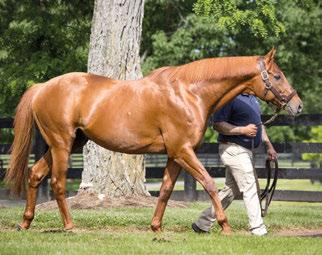
offered, of which 432 – 53 per cent of the catalogue – were sold.
There were some remarkable pinhooks, however, led by the sale-topping colt, who had been picked up by St. Clair Stables for $200,000 as a Keeneland September yearling. Renowned consignor Eddie Woods sent him out to breeze a furlong in 9.3 seconds and with the additional attributes of looks, sire power and pedigree – he is out of a winning half-sister to one of Gun Runner’s early good horses, Grade 2 winner Pappacap – it took a bid of $3m for him to head Zedan’s way and the barn of Bob Baffert.
Zedan, Lanni and Baffert teamed up to purchase last year’s $1.8m sale-topper Nooni, who subsequently won the Grade 3 Sorrento Stakes at Del Mar.
It was a very fitting result for Woods, who announced during the sale that this season would be his last as a consignor. The Irishman has been a leader among his
and Port Authority, a £200,000 purchase by KTDA Racing. Those two horses, both winners on debut, had been picked up for €27,000 and €48,000 respectively by clever pinhookers/trainers John Costello and Matty Flynn O’Connor.
Statistics
Sold: 23 (82% clearance)
Aggregate: £3,650,000 (+2%)
Average: £158,696 (+20%)
Median: £150,000 (+25%)
peers for the past 31 years, having had champions such as Big Brown and Lady Eli through his hands. He ended March with sales of close to $6.5m, the total also boosted by a $1m first-crop son of Independence Hall knocked down to JPM Bloodstock. Grade 2 winner Independence Hall stands for just $7,500 at WinStar Farm in Kentucky and his million-dollar son had been a $165,000 pinhook by Quarter Pole Enterprises out of Fasig-Tipton in July.
In what was a bullish market for unproven sires, Darley’s Maxfield supplied two seven-figure lots, namely a half-sister to Grade 1 winner Hard Aces who sold to Ramiro Restrepo of Marquee Bloodstock for $1.25m and a colt out of minor stakes winner Eyeinthesky, who made $1m to trainer Mitsu Nakauchida, part of a strong buying contingent from Japan. The latter, sold by Ciaran Dunne’s Wavertree Stables, had been pinhooked by Polo Bloodstock for just $75,000 as a yearling.
Wavertree was also responsible for a daughter of Quality Road who will carry the colours of Kia Joorabchian’s Amo Racing following her sale for $1.05m. She was one of two purchases for Amo during the week alongside a $600,000 daughter of Bolt d’Oro.
Statistics Sold: 432 (82%)
$65,815,500 (+0.9%)
$152,351 (+6%)
$70,000 (-3%)
As the European Flat season gathers momentum, it is well worth reflecting on the soaring reputation of Too Darn Hot in the southern hemisphere ahead of his own keenly anticipated third year with runners in Europe this season.
Just a few weeks ago, Too Darn Hot sired yet another high-class runner in Australia, the first from his second crop of two-year-olds there.
When his son Rivellino landed the Group 2 Skyline Stakes over 1,200 metres at Randwick – a prep race for the Group 1 Golden Slipper Stakes in which he went on to run fourth – he became the seventh Group winner in his sire’s first two seasons with runners there. Now seven Group winners is a notable achievement in any jurisdiction, but even more so in Australia as two-year-old Group- and Listed-winning opportunities are not as commonplace as they are in Europe.
On more than one occasion, Australian racing and breeding has been denied direct access to a stallion travelling down from the northern hemisphere right after proving to be a huge successes in his early years in Australia. The modern-day example is Too Darn Hot, who shuttled for four consecutive seasons from 2020 to 2023 and was slated to stand his fifth season at a fee of A$110,000 (£55,000), only to become a very late withdrawal. It is not the first time this has happened to stallions from this sire line. Too Darn Hot’s sire Dubawi spent three seasons in the
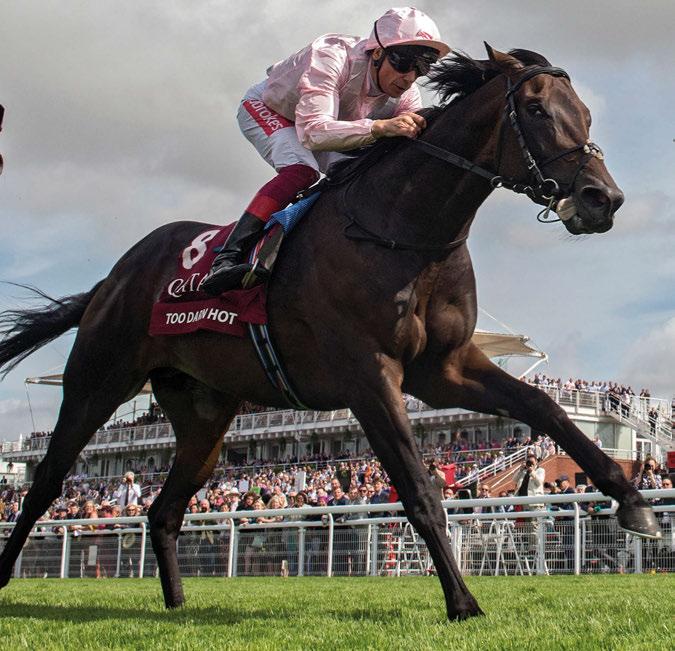
Hunter Valley, from where he delivered 22 stakes winners at an excellent rate of 11.6 per cent. But such was his success in Europe that he was deemed too valuable
to shuttle thereafter.
Meanwhile, Dubawi’s current most expensive stallion son at stud in the northern hemisphere, Night Of Thunder, spent a single season in Australia, producing seven stakes winners (13.5 per cent) from only 52 runners, again an excellent return.
Too Darn Hot’s early Australian success is on a different scale though to that of Dubawi and Night Of Thunder. To put it in context, Too Darn Hot’s ten stakes winners so far have come along at a top-class rate of 11.8 per cent from runners.
Even more impressive is his tally of Group winners. It is nothing short of outstanding to have seven Group winners on the board at this early stage in his career as it hasn’t happened with any other Australian or New Zealand-based sire this century. That’s how good it is. The great Redoute’s Choice had six at the same point, as did Stravinsky, while Exceed And Excel, Rock Of Gibraltar, Zoustar and Zoustar’s sire Northern Meteor had five apiece. And while it
might be true in a general sense that modern-day sires tend to have more runners and hence more opportunity to lead such rankings, this is not the case with Too Darn Hot, as he also boasts one of the highest strike-rates of any sire this century with a score of 8.2 per cent Group winners to runners, second only to Extreme Choice’s 12.1 per cent (whose poor fertility delivers small select crops).
Leaving the metrics aside, Too Darn Hot’s list of top horses is also an impressive read. Topped by the exciting Broadsiding, who has already got four Group 1 victories on his CV including the Champagne and Golden Rose Stakes, there is also Rivellino, Too Darn Hot’s fourth Group 2 winner who made it three straight wins with his nice score in the Skyline. He is one of three Group horses from only 16 runners from Too Darn Hot’s promising second crop.
Things have gone very well for Too Darn Hot at home, too, which is why he’s staying put at the moment. His first two-year-olds featured four Group winners (5.7 per cent) from 70 runners, including Moyglare Stud Stakes winner Fallen Angel. Importantly, the son of Dubawi backed it up with a talented second crop of youngsters, featuring Futurity Trophy winner Hotazhell and Group 2 scorer Simmering.
Meanwhile, first-season star Fallen
Angel trained on to bag the Irish 1,000 Guineas while Darnation and Etes Vous Prets were Group 2 winners in Germany and Japan respectively.
“Leaving the metrics aside, his list of top horses is also impressive”
As encouraging as his stud career has begun, there is still more for Too Darn Hot to do given the level of support he has attracted in his early years. Of the sires retired to stud since 2013 who covered 350-plus stakes-horses and/or producers in their first five books, only Frankel and Kingman have had a better percentage of stakes performers and producers.
Currently tracking at 7.1 per cent stakes winners, Too Darn Hot’s score is still well shy of the 13.4 per cent stakes winners produced by all other sires from the same mares. No doubt as his early
crops reach full maturity he should close this gap. In any case, these metrics matter less to breeders when the stallion in question can produce a top-class horse or two along the way, and with a consistent flow of well-bred runners coming on stream, there is every likelihood that will happen. To this end, Too Darn Hot can rely on the fact that the quality of his mares barely dipped from year two to three (this year’s two-yearolds), and while his fourth crop may be his weakest, his fifth is right back up to the class levels of his first.
Comparatively speaking, Too Darn Hot did not rank quite as high in the imagination of Australian breeders in his first year there. In the same timespan of 2023 to 2024, there were 30 other stallions with superior first books, compared to just five in Britain and Ireland. He did, however, rank second behind Pierata among his retiring-year cohort with 55 stakes horses and producers, marginally ahead of Blue Point (54) and Yes Yes Yes (53).
It is no surprise that his third Australian crop are averaging A$233,000 (£115,000) at this year’s yearling auctions, with the Inglis Easter Premier Sale still to come. His 11 colts and seven fillies selling in Sydney are sure to attract plenty of attention given that this is Too Darn Hot’s penultimate Australian-sired crop.
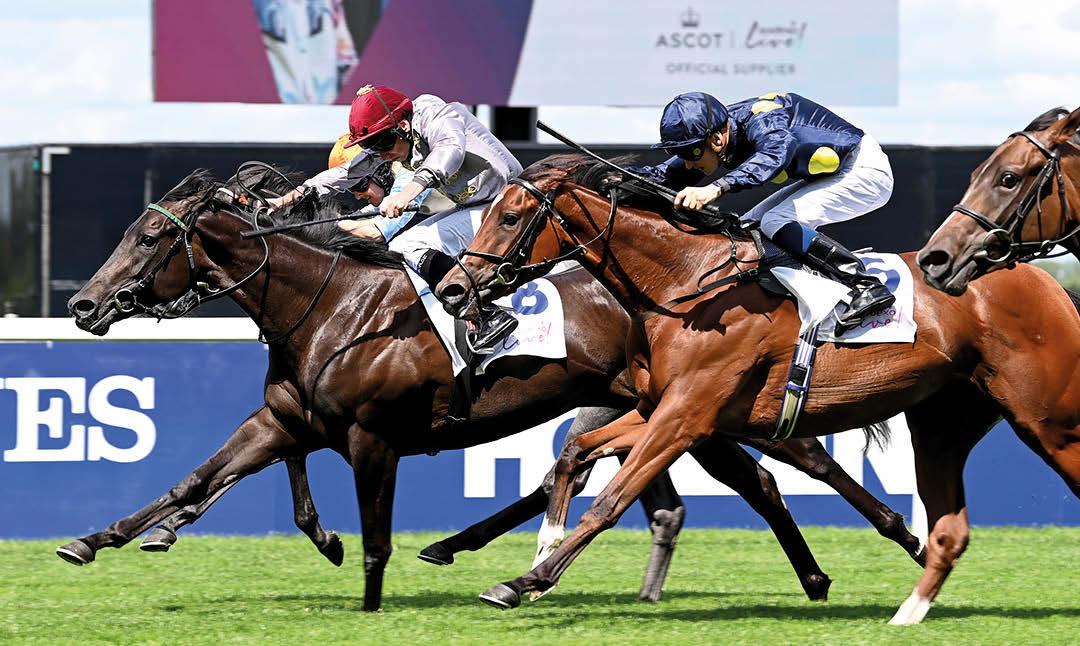
For all the success of the Sadler’s Wells line over jumps, its dominance means that it has become increasingly hard for National Hunt breeders to escape it.
That is especially true when it comes to Galileo and Montjeu, two sons who are extremely well represented within the sector. Montjeu has long been regarded as a positive influence; while there could be a hot-headedness to his stock, plenty have thrived when asked to jump and now sons such as Walk In The Park and Jukebox Jury are pushing that legacy forward.
There are also no shortage of Galileo sons available, many of them multiple Group 1 winners. One of Galileo’s major strengths was his ability to throw tough, sound horses. That was as much mentally as well as physically, making him seemingly the ideal candidate to become a powerful influence over jumps.
For now, however, Montjeu retains the upper hand. Galileo’s leading jumps
sire son remains Coolmore’s Mahler, who is reliable as ever but no spring chicken at 21-years-old. The recently retired Soldier Of Fortune is also one of the season’s top ten jumps sires but next best is Telescope, who barely scrapes into the top 50. Granted, there
“Golden Horn has a reputation as a source of quality dualpurpose horses”
are plenty of young names coming through, among them one of Europe’s busiest stallions in Order Of St George. However, it’s easy to see why breeders are also considering different options. However, quite whether it was ever
considered that Cape Cross, a Group 1 miler by Green Desert, would ever join such a list is surely open to doubt. Yet that is currently the case thanks to both his Derby winners, Golden Horn and Sea The Stars.
Golden Horn began his stud career at Darley with a weight of expectation behind him as befits a champion who also won the Eclipse Stakes, Irish Champion Stakes and Arc. He stood his first three seasons for £60,000, when the Champion Hurdle heroine Golden Ace was bred, and thereafter on a sliding scale towards his current level of £10,000 at Overbury Stud.
That reduction tells its own story but in return he has forged a reputation as a source of quality dual-purpose horses, ranging from the high-class stayers Trawlerman and Gregory on the Flat to last month’s Cheltenham Festival scorers Golden Ace and Poniros over jumps. The latter recorded a 100-1 shock on his hurdling debut in the Triumph Hurdle, leading trainer Willie
One of the mysteries of the stallion business is how one horse might work in one hemisphere but not necessarily thrive in another.
Danehill remains the poster boy when it comes to dual hemisphere success but even he took time to get going in Europe when compared to his immediate success in Australia, where under the initial management of John Messara at Arrowfield Stud he became a champion sire when his first crop were still just three. Then there’s Galileo, whose Australian record is a shadow of what he achieved in the northern hemisphere.
All of which makes the early achievements of Too Darn Hot all the more notable. The Darley stallion has been quick to hit the ground running at stud in Europe, with Irish 1,000 Guineas heroine Fallen Angel among a highpowered first crop of nine stakes winners and Futurity Stakes winner Hotazhell the highlight of his second.
Nor has Too Darn Hot missed a beat in Australia. His first southern hemisphere
crop closely mirrors that in Europe given it contains a Group 1 winner, Broadsiding, amid nine stakes winners. His current juveniles, meanwhile, include Group 2 winner Rivellino.
Indeed, Too Darn Hot has been on quite the run in Australia in recent weeks. Already a multiple Group 1 winner, Godolphin homebred Broadsiding resumed on February 22 with an easy success in the Group 2 Hobartville Stakes at Rosehill. His win that day formed part of a major Group-race treble for his sire, arriving alongside Tropicus’ win in the Group 3 Zeditave Stakes and Shanwah’s success in the Group 2 Autumn Classic. A week later, it was the turn of Rivellino to confirm his place among the season’s top juveniles when taking the Group 2 Skyline Stakes at Randwick.
That purple patch continued into March as Broadsiding bagged another Group 1 in the Rosehill Guineas on the same afternoon that Shanwah took another Group 2, this time in the Alister Clark Stakes at Moonee Valley.
Earlier stakes winners such as Too Darn Lizzie and Too Darn Discreet, between them successful in the Group 2 Thousand Guineas Prelude and Edward Manifold Stakes in October, have also contributed to a highly productive season that currently consists of ten stakes winners and approximately A$8 million in earnings. Therefore, Too Darn Hot is a top 12 Australian sire at the tender age of nine. He is also the country’s dominant second-crop sire by winners (close to 40), stakes winners and earnings.
Too Darn Hot’s rise to dual-hemisphere phenomenon has coincided with part of a wider Australian revival of the shuttle stallion. Triggered by the likes of Danehill and Last Tycoon, it wasn’t that long ago that shuttling was in vogue. It was a worldwide movement consisting of the infiltration of new blood into Australia from not just Europe but also North America and Japan that peaked in 2003 when a record 62 shuttlers were on the books. Fast forward to 2023 and the number was just 14.

During the intervening period, Street Cry was a leading sire in Australia for Darley, his legacy underpinned by the remarkable mare Winx to go with the likes of Zenyatta and Street Sense in the US. However, plenty of nondescript names have made the trip since then too. Breeders are probably quite rightly suspicious of an outside stallion that they most likely won’t have seen race. At the same time, Australian-breds such as I Am Invincible, Extreme Choice and Written Tycoon have risen through the ranks to become some of the nation’s best stallions, thereby turning the focus back on the domestic product.
Today, the American shuttler is a rare sight in Australia, with Kentucky farms seemingly more tuned into the opportunities offered by South America. Meanwhile, John Messara, ever one to think outside the box, continues to source a handful of various Japanese horses to stand at Arrowfield Stud.
The bulk of the numbers, though, are made up of European horses, for which heavyweights Darley and Coolmore unsurprisingly lead the charge.
Once the force behind Danehill, Coolmore shuttled just four stallions to its Hunter Valley base in 2024, although the quartet did include Wootton Bassett, whose first Australian juveniles include the Golden Slipper Stakes runner-up Wodeton. Justify no longer shuttles, presumably due to his high valuation, but is open for southern hemisphere business at Ashford Stud in Kentucky.
Darley is currently bolder in its southern hemisphere approach. It sent nine stallions to its bases in the Hunter Valley and Victoria last season, some of them unproven names such as Palace Pier, Pinatubo, Native Trail and Triple Time.
However, it also houses one of today’s most effective shuttlers in Harry Angel, whose seventh place on the Australian sires’ list is fuelled by the current Group 1 winners Tom Kitten and Private Harry. It is also now the permanent home for Street Boss, a top American sprinter who formerly shuttled from Kentucky.
Street Boss has fared well in both hemispheres despite not operating at an elite level until recently; the emergence of his champion son Anamoe helped propel
Mullins to remark: “I think Golden Horn is going to make a very good sire over jumps.”
Golden Horn ended the Festival having supplied two of the week’s three British-bred Grade 1 winners. As such, his relocation to Overbury Stud in the face of interest from various Irish operations could well turn out to be a pivotal moment for the British jumps industry.
Meanwhile, jumps breeders have wasted little time in investigating the possibilities of Sea The Stars, which makes sense given his propensity to throw sound, good-sized stock that thrive over middle-distances. The end result is that Galileo’s half-brother is not short of jumps sire sons, whether they be emerging names such as Affinisea, Crystal Ocean, Harzand and Storm The Stars or younger horses like Fifty Stars, Mojo Star and Eagles By Day.
Early indications suggest that the support isn’t being misplaced – which is just as well given that between them his sons were recorded as covering close to 900 mares last year. The list doesn’t include Stradivarius, whose second six-figure book at the National Stud comprised both Flat and jumps mares belonging to a number of astute breeders. Stradivarius possessed numerous attributes and if his stock
him up the ranks and he now stands for A$66,000, which looks justified given that his first post-Anamoe crop include two of Godolphin’s leading juvenile lights in the Group 2 winners Tentyris and Tempted.
Street Cry was the last shuttle sire to be crowned Australian champion back in 2016. With shuttling numbers the way they are now, it seems unlikely that we will see a similar feat soon. Having said that, Too Darn Hot could be the one to come closest. One weapon in his armoury is his ability to click with mares carrying Danehill, such a ubiquitous presence in Australia; four of his southern hemisphere stakes winners are out of Danehill-line mares while another two, including Broadsiding, carry Danehill further back.
Too Darn Hot’s success down under, however, is bittersweet for Australian breeders. He hasn’t stood in Australia since 2023, with connections taking the late decision last July to remove him from shuttling duty for 2024. Australian breeders therefore had to be resourceful and indeed the horse was reportedly fully booked to southern hemisphere time last autumn in Newmarket.
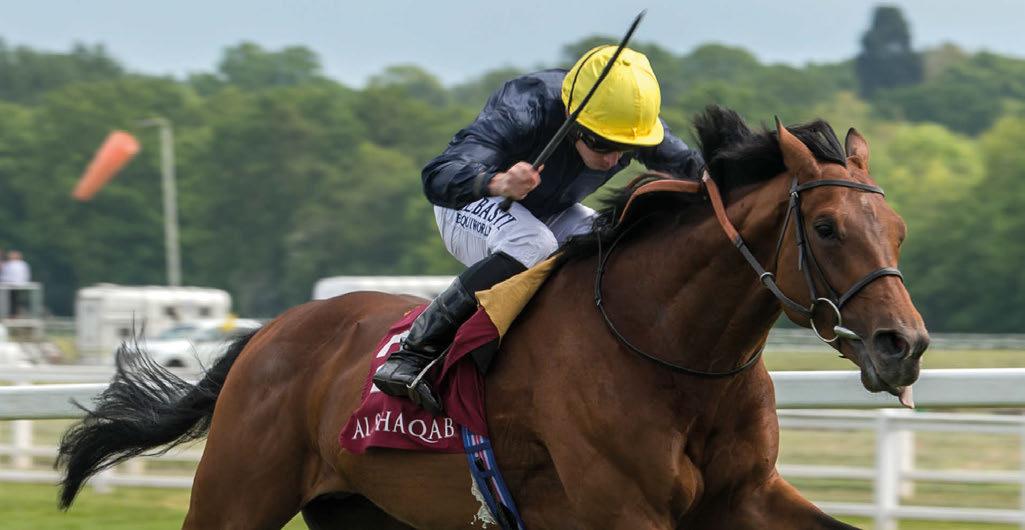
have inherited any of his toughness or finishing pace, then surely he has a chance to fly in the face of fashion.
The busiest of Sea The Stars’ sons in 2024 was Affinisea with 236 mares. This isn’t the first time that Affinisea has been so busy – he covered 382 in 2023 – which might seem curious for a horse whose sole win came in a Roscommon maiden. But he’s a good-looking, well-related horse who had the backing of Whytemount Stud’s Ronnie O’Neill, the mastermind behind Stowaway, and good results are now materialising. They include the Arkle Novices’ Chase runner-up Only By Night, previously a Grade 2 winner over fences for Gavin Cromwell, and Sixmilebridge, who was first past the post in the Ais Novices’ Hurdle at Cheltenham in January.
O’Neill ultimately really got behind the idea of Sea The Stars as a positive influence. He imported French Listed winner Behesht following his sale for $3,500 at Keeneland in January 2022, since when he has covered over 120 mares, while the farm latterly added Derby runner-up Mojo Star in conjunction with Amo Racing. His debut book of 69 mares included Amo’s Group 2-winning juvenile Persian Dreamer.
Eagles By Day, a Group 3-winning stayer at Glenview Stud, and Australian Group 1 winner Fifty Stars, who stands at Sunnyhill Stud, are also in the pipeline while Mekhtaal’s early French crops include the unbeaten jumper
Allied Powers, which bodes well for those who have supported the Prix d’Ispahan winner since his arrival to Knockmullen House Stud. Classicplaced Storm The Stars, another French import, has also hit the ground running with his early jumpers, notably as sire of the Grade 1-placed Storm Heart. He covered over 80 mares in his second season at Coolagown Stud last year.
However, the emphasis right now is very much on Crystal Ocean and
“Harzand’s rise to popularity has come via a slightly different path”
Harzand, two outstanding middledistance racehorses who are now two of Ireland’s busiest jumps stallions.
Prince Of Wales’s Stakes winner Crystal Ocean was marketed directly to the jumps sphere when he retired under the Coolmore banner at The Beeches Stud. While understandable, it was a shame considering his ability and indeed some of those who utilised him early on with an eye on the Flat were well rewarded; a pair of first-crop colts made six figures at Book 1 of the 2022
Tattersalls October Sale, with one of them, Wild Waves, now rated 100 for Andrew Balding.
Anticipation among the jumps community has run high throughout, however, fuelled in part by the sheer volume of numbers that have gone his way – he covered 265 mares in his first season and another 338 in his second. In turn, he has made a bright start, which came into sharper focus last month when he was represented by Saint Crystal, the easy winner of the Listed Prix General de Rougemont at Auteuil, and the promising point-topoint scorers Green Hint and Crystal d’Estruval. The latter went on to top the Tattersalls Cheltenham Festival Sale when sold for £400,000 to Ed Bailey and Harry Derham.
Harzand’s rise in popularity has come via a slightly different path. The Epsom and Irish Derby hero had his chance on the Flat for the Aga Khan Studs but has subsequently found greater momentum over jumps. That prompted a switch to Kilbarry Lodge Stud, where he has been warmly welcomed by the jumps community –last year’s book of 155 mares being a case in point. Since then, his Flat-bred crops have come to include this season’s Grade 1 Spring Juvenile Hurdle winner Hello Neighbour alongside the Grade 1-placed jumpers Dionis and Six Figures, all of which should drive the popularity of Harzand as well as that of other Sea The Stars’ sons even further.

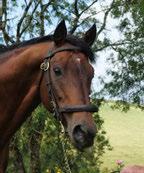


By Mastercraftsman ex. Audacieuse
l Unbeaten Group 1 winning 2yo.
l Classic Winner & Champion Stayer in Europe at 3.
£3,000
l 7th leading ‘young’ sire in Europe 2024-25 by winners.
l Winners include recent Listed bumper winner Kingston Queen, King Ulanda, Irish Hill and King Arise
l 3yo stores made up to £50k
By Lemon Drop Kid ex. Lynwood Chase
l Group Winner over 10/12f, incl. Canadian International.
l 50% runners to winners over hurdles.
l Already the sire of Gr.1 placed Cannock Park, the promising To Chase A Dream (or 129) and recent winner Foster’s Fortune
l GB point winners recently also with The Yellow Mini and Wottinger
Fee: £2,000
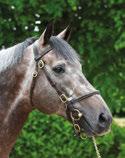

By Sadler’s Wells ex. Alakananda
l Consistent Group-Level Performer over 12f, incl. beaten a short head in the 2006 Derby.
l Sire of Winners under Both Codes.
l Top class pedigree, looks, confirmation and temperament.
l 60% winner to runners over fences.
l Winners include the Cheltenham Festival hope Haiti Couleurs, bumper winner Romeo Foxtrot and hurdles winner Double Dragon
By Farhh ex. Mowazana
l Unbeaten at 2yrs incl. Gr.3 Acomb Stakes.
l Also won the Gr.3 Bahrain Trophy at 3yrs and the Listed Fred Archer Stakes at 4yrs.
l Oldest crop are now yearlings.
l His trainer Tim Easterby says ‘We have 14 yearlings by Wells Farrh Go that are showing tremendous promise. They are strong, forward types with brilliant temperaments. We couldn’t be more pleased with them and look forward to seeing them on the racecourse’
For further details contact; Chris Dawson: Gypsy Lane, Ferryhill, Co. Durham, DL17 0LG www.nunstaintonstud.com • Facebook: Nunstainton
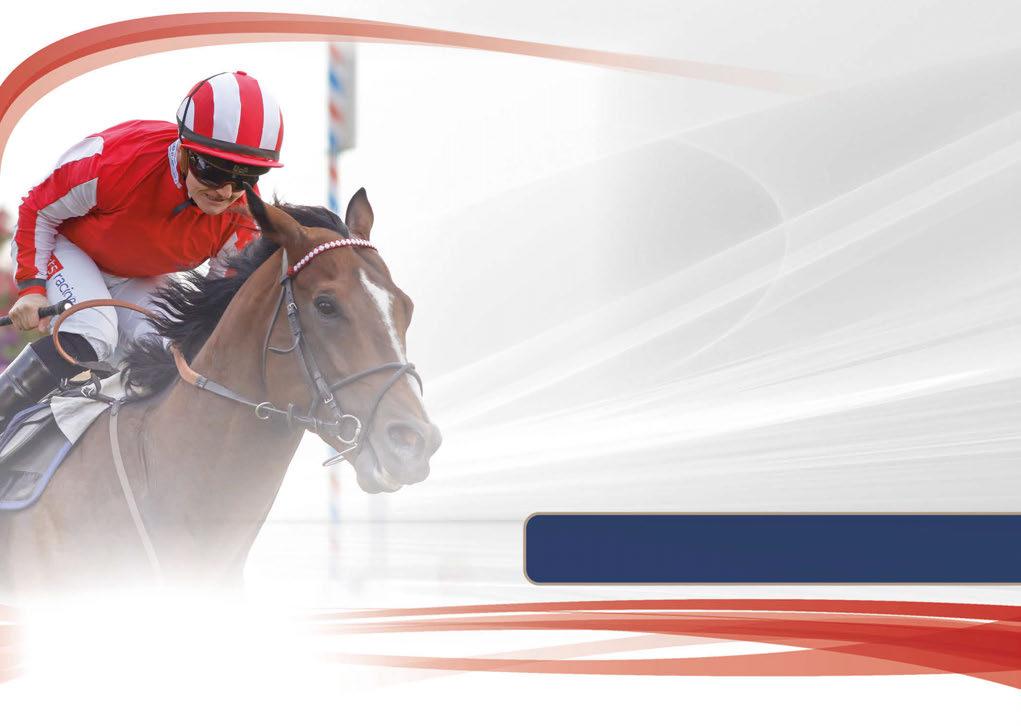

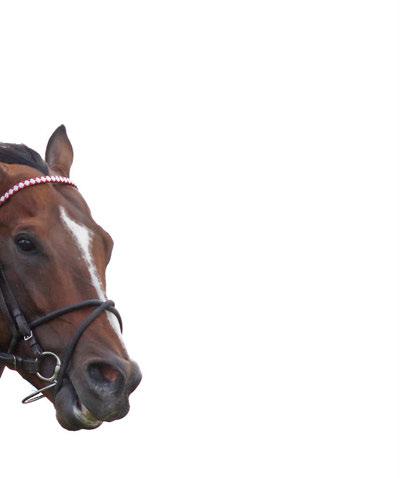
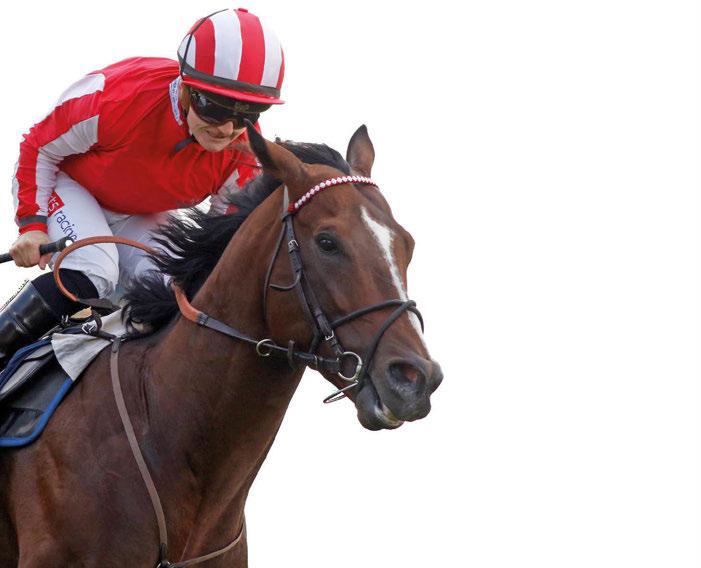
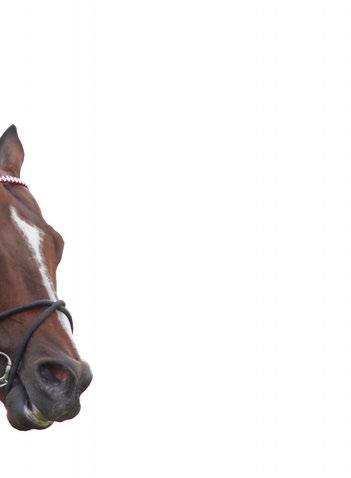
Words: Laura Steley
The topics of hoof and dental care are integral to a thoroughbred’s health and performance. Before domestication, horses’ hooves, and teeth, for the most part, will have looked after themselves. Adaptations in diet, evolutionary changes and an increased lifespan mean that dentistry work is now vital. As basic as it sounds, dental care can easily be forgotten about as we cannot see inside horses’ mouths very easily. Out of sight, out of mind can come into play.
Through evolution, the equine hoof has altered to best cope with different environments. In the latter years, selective breeding has brought about breed-specific traits, good and bad. The thoroughbred breeding industry is, as a rule, results-driven. This leads us to the natural assumption that breeding stock will have possessed adequate soundness to meet the demands of training and the racecourse. This is almost certainly true when assessing prospective sires; mares, however, do not always come under such rigorous testing as they can be unraced and selected on pedigree alone.
On purely an individual basis, mares play slightly less of a part to overall breed longevity, sheerly due to the number of foals entering the industry over their lifetime compared to a stallion’s progeny contribution. There are many reasons why a filly might not race, and poor foot conformation can be but one small part, yet it is something to consider when assessing the conformational traits of mares as breeding prospects. The effects of poor hoof conformation, whether via genetics, poor management/nutrition or both, can be catastrophic for the horse.
When in utero, a foal will develop a hoof capsule; once born and weightbearing, new stronger horn will begin to form. At around four months of age the remnants of the hoof capsule, often called ‘foal foot’, will become apparent. Trimming will be required at the correct
time for that individual foal, something your farrier will be able to assess by considering limb conformation, environment etc. From birth, the hoof will grow rapidly, thus changing its shape via lengthening and expansion. A foal’s hoof length will increase by about 15mm per month, a yearling 12mm, and a mature horse 9mm. Ensuring that the foal develops healthy feet in balance with its limbs is an essential part of the production of a sound racehorse (Simon Curtis FWCF, 2011 Farriery –Foal to Racehorse).
Farrier Sion Davies advises: “It is very important to visit and assess foals from a young age, even as young as two weeks old. If they have a leg turned in or out by a disproportionate amount, a small rub with the rasp can make a big difference as the growth plates are very soft at this point. For example, if
“Reduced horn growth can have a big impact on soundness and longevity”
the foot is very straight or turns in, then the medial side of the foot will require rasping. If this doesn’t work as much as you wish, then an extension will need to be applied. All this will help with achieving better conformation, which in the long run gives you a sounder horse.
“The better the conformation, the more even the weight distribution through the skeleton. The straighter the horse moves, the less chance of injury and the increased chance of optimum performance”.
As a starting point when assessing a horse’s feet, standard points to consider, but not limited to, are: have any remedial trimming or shoeing techniques been used? Is the coronet
band smooth, dry and cool? Do the angles of the hooves match the pastern angles, and in turn the slope of the shoulder? As a rule, the correct angle for the hoof will be in the region of 45 to 60 degrees.
Reduced hoof growth, cracking or brittle hooves can have a big impact on the individual’s soundness and longevity. Feet that are flat or too upright will require considered farriery. If left to deteriorate, other areas of the body will begin to compensate, ultimately leading to asymmetry, discomfort and lameness. Thin soles are also something to note – this characteristic can be inherited, or it could be caused following a particularly bad foot abscess, which may have lingered too long and damaged the sole.
Healthy hoof growth is dependent upon many factors such as breed, genetics, age, season, loading, environmental moisture and farriery. Each factor will play a fundamental role throughout each thoroughbred’s life. As incorrect feeding has been linked to the occurrence of developmental orthopaedic diseases (DODs) in youngstock, this topic cannot be overlooked, even at the very start of a foal’s life when they will be receiving all the required nutrients via nursing.
Liz Bulbrook, Director of Nutrition at Baileys Horse Feeds, says: “The need for an all-round balanced diet is paramount to ensuring good hoof health from a growth and strength perspective. Protein and energy are the first limiting nutrients in hoof nutrition and, if they are not present in sufficient amounts, hoof quality will be poor, regardless of what other nutrients are present.
“Protein is an essential nutrient and is vital for correct and healthy hoof formation. The hoof wall is comprised predominantly of the protein keratin, so not providing sufficient dietary protein can negatively affect hoof health and condition. Protein is made up of amino acids which can be divided into two groups; those that the
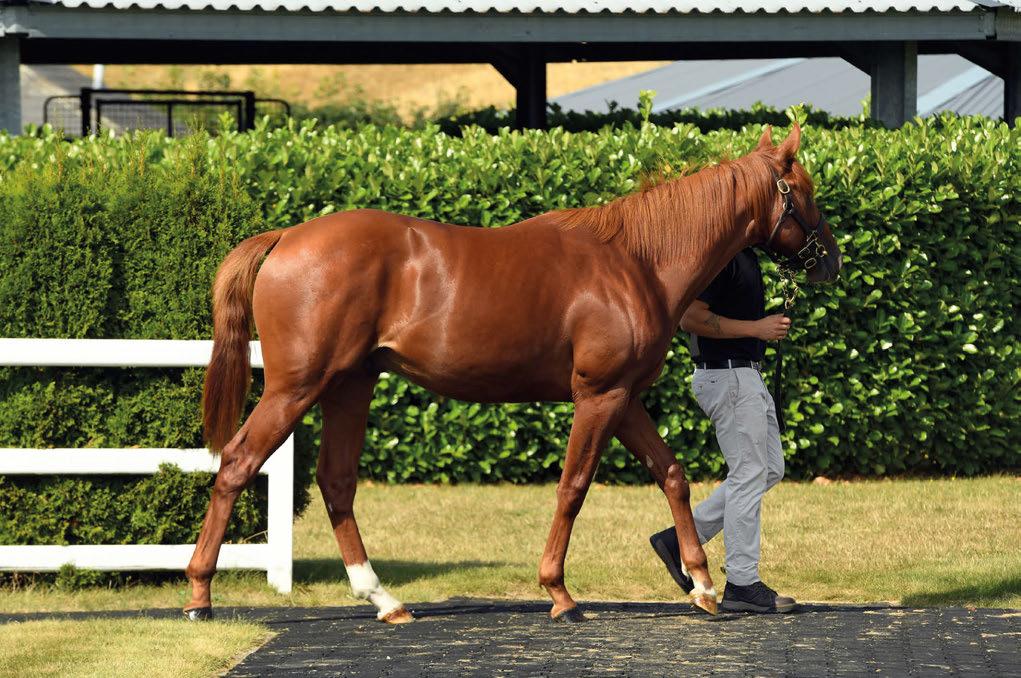
horse can produce sufficient amounts of itself (non-essential), and those that have to be supplied in the diet (essential).” Protein makes up over 94% of the nutrients found in the hoof wall and the three amino acids associated with horn growth are cystine, cysteine and methionine.
Keratin is a structural protein forming the main constituent of hair, feathers, hooves, claws and horns in vertebrates. For keratinisation to occur (the formation of horn cells), the body requires sufficient energy, protein, minerals and vitamins. The most important mineral required for keratinisation is calcium, along with the two trace minerals zinc and copper. Zinc deficiencies have been linked to hoof deformity in foals; copper deficiencies can cause hoof depigmentation, and a calcium deficiency can result in decreased hoof strength and growth.
The relationship between these minerals is complex, as a deficiency in one can cause an excess in another. For example, an excess in calcium (often via a high cereal diet) can impede the absorption of zinc, whereas an excess of zinc can lead to
a deficiency in copper, both of which can be contributing factors to DODs in youngstock. Manganese is also important in skeletal make-up as well as being a major component of cartilage. Quality fats and oils are similarly key contributors to the health of the hoof wall.
The most well-known vitamin associated with hoof growth is biotin, a B vitamin which plays a part in carbohydrate, protein and fat metabolism. Supplementation can improve new horn growth rates but will not influence the existing hoof. Bulbrook explains: “Whilst much of the emphasis on foot nutrition centres around the vitamin biotin, this alone is not enough to correct poor horn quality in most cases and is one of many essential nutrients required by the horse for hoof integrity. There are nine other nutrients that are just as important to have in the diet in sufficient amounts to maintain good hoof health.
Nutrients found in the hoof wall structure:
• Protein/amino acids (94%)
• Fat/oils (3%)
• Sulfur
• Calcium
• Zinc
• Copper
• Selenium
• Carotene (vitamin A)
• Alpha-Tocopherol (vitamin E)
• Biotin (recommend 15 mg/1,000lb/ day for cracked hooves)
Although no definitive requirement for biotin has been determined, it is thought that the average horse requires 2-3mg per day, which should be met by the diet alone, without additional supplementation. Horses with poor feet do not necessarily have a biotin deficiency any more than their stablemate with good feet, therefore the question arises as to whether additional biotin supplementation is beneficial (Jackson, 1996 Bluegrass Laminitis Symposium). However, studies where 15-20mg of biotin per day was given have shown positive effects on hoof wall growth and horses under stress, in intense work, travelling, stabled for long periods or with insufficient dietary biotin may benefit from such supplementation.
Bulbrook says: “Simply maintaining ››
›› a fully-balanced diet all year round should ensure healthy hoof growth without the need for supplementation. Balancers are particularly useful in helping to achieve this and provide the full spectrum of essential hoof nutrients much more cost effectively than a supplement. If, despite feeding a good quality balanced diet for at least nine months, strong feet are not achieved, it could be indicative of an issue with the absorption and utilisation of nutrients which may be remedied with additional supplementation.
“Any supplement should contain the full range of hoof nutrients though, not just biotin, and never forget the influence of the environment on hoof integrity as constant wet conditions and/or wet then dry conditions can take their toll on even the bestnourished hooves.”
Selenium, one of the micro-nutrients, is also worth mentioning due to the well-documented research regarding toxicity causing lesions of the hoof wall – however, a selenium deficiency can affect vitamin E’s important role with cellular respiration, so again, the correct balance is critical.
A change in nutritional input and/ or general health can be seen in a horse’s hooves via horizontal ridges or growth rings, as they are often called. For example, the significant increase in nutritional content of grass in spring will often be visible via growth rings. All bodily processes require energy, and it has been proven that if a horse is in negative energy balance, then horn growth will be impeded. On the flip side, when the horse is in positive energy balance, horn growth can increase by up to 50% – this can often be seen purely from the calorific changes within grazing between seasons.
Davies concludes: “Regular farriery and good nutrition helps to maintain good hoof quality, and the old saying ‘No foot, no horse’ could not be truer!”
Equine teeth, like those of other herbivores, are specially modified for their unique diet of grasses and forages. Horses have a special adaptation in their teeth called hypsodonty, which refers to the gradual wearing and eruption of pre-molar and molar teeth over their lifetime. This allows horses to efficiently cope with the constant wear caused by grazing on rough vegetation. As the upper surfaces (crowns) of the teeth wear down, new tooth material
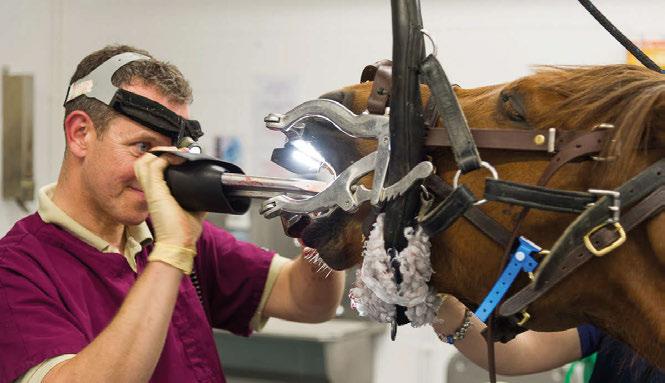
erupts from the deep roots to replace it. This continuous eruption helps maintain the grinding surface necessary for effective digestion of fibrous plant material.
Horses have two sets of teeth during their lifetime – deciduous (milk or baby teeth) and permanent. Generally, horses will develop 24 deciduous teeth, which emerge in pairs soon after birth. Permanent teeth will begin replacing deciduous teeth from the age of approximately 21⁄2 years, with a full set of permanent teeth usually in place by around five years of age.
Adult horses typically have between 36 (female) and 44 (male) teeth. The exact number can vary depending on factors such as age, sex, and breed. All horses will possess incisors, pre-molars and molars. Males and approximately 25% of females will have canine teeth and up to a third of horses will develop wolf teeth.
Equine teeth are sensitive with a very good nerve supply meaning they can cause high levels of pain if issues are not identified and resolved.
Mark J Grant, Clinical Director at Rossdales, said: “Dental care is crucial for horses to maintain their overall health and well-being. Horses rely on their teeth for proper digestion, as they need to grind down fibrous food such as hay and grass. Poor dental health can lead to issues like: Difficulty eating and weight loss: if a horse has dental problems, such as sharp points, uneven wear, lose or missing teeth, they may struggle to chew properly. This can lead to insufficient nutrient intake, weight loss, and poor coat condition. Pain and discomfort: dental issues like sharp edges or infected teeth
can cause pain while eating and behavioural issues like resistance to the bit and head tossing or result in poor performance.
Digestive problems: inefficient chewing can lead to larger food particles being swallowed, which may result in colic or choke.
Jaw and facial problems: over time, unrecognised and untreated dental issues can lead to uneven wear on the teeth, potentially causing misalignment of the jaw or the development of painful abscesses.
“Regular dental check-ups, typically every 6-12 months, help prevent these problems by allowing for the detection and treatment of dental issues before they become severe. Floating, or filing down sharp points and overgrowths on the teeth, is a common part of routine dental care. This ensures that horses can chew efficiently, avoid discomfort, and maintain good overall health. This should be undertaken by a vet or qualified equine dental technician.
“These recommendations apply equally to horses at any age and of any discipline. In the thoroughbred world, racehorses are uniquely sensitive to dental issues. They start their racing careers before their adult teeth have erupted and they continue to lose caps (baby teeth) up until they are four to five years of age. These loose teeth can cause transient discomfort and regular dental attention is therefore essential to maintain performance.
“At the other end of the spectrum, broodmares are often overlooked but regular dental attention enables them to maintain good condition and ultimately benefits the foals they carry and suckle. Routine dentistry should be an essential, not a luxury.”
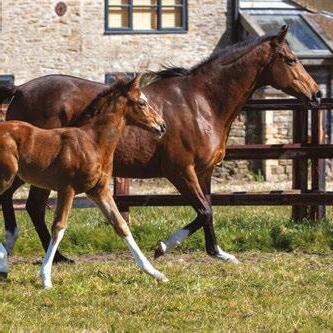
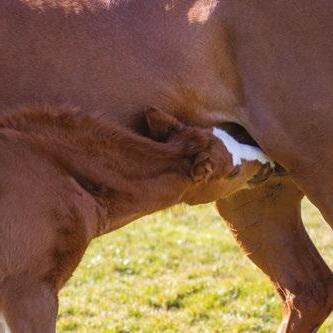
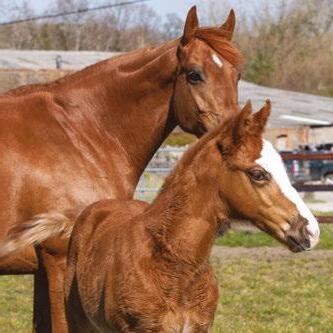
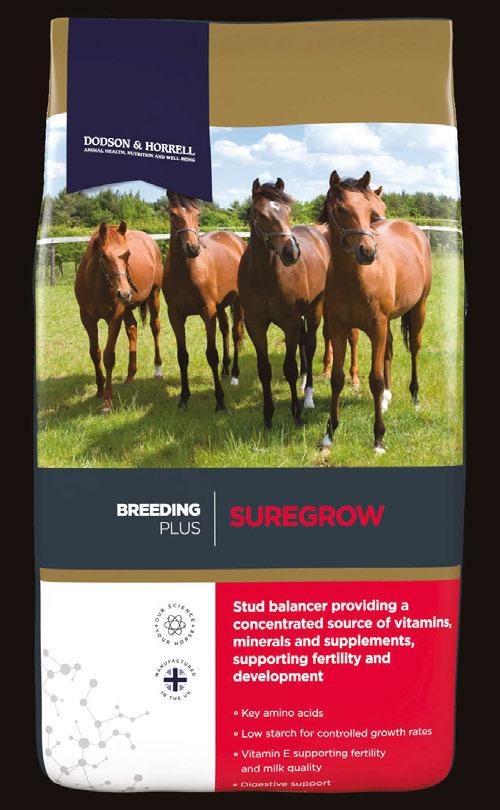
D&H Suregrow is a central part of our feeding regime for pregnant mares, foals and yearlings. We have fed the product for a number of years and are delighted at how the youngstock look. It delivers optimal growth and development in the youngstock without them getting too heavy. We even use it during sales prep. I would happily recommend it to other breeders."
For feed advice, please call our helpline team on 01270 782 223 or email helplineenquiries@dodsonandhorrell.com www.dodsonandhorrell.com
Gastrointestinal worms are common infections in grazing horses, especially in foals and youngsters. Previously, experts recommended regular worming treatments for all horses; however, this has led to resistance to the currently available medications (Nielsen 2022). With no new wormers expected soon, it is vital to use evidence-based parasite control. This means assessing each horse’s or herd’s risk of infection and testing for parasites to determine if worming is necessary.
Recent reports indicate treatment failures against the common equine tapeworm, Anoplocephala perfoliata (Nielsen 2023), emphasising the need to address the growing issue of resistance in this parasite, particularly on breeding
enterprises where many susceptible horses will be grazing. Infection with this tapeworm is especially concerning due to its association with colic (Proudman and Trees 1999).
Horses are infected by ingesting oribatid mites that contain tapeworm larvae (Fig 1). These mites can survive for long periods on paddocks, acting as a reservoir of infection. Tapeworm infection rates in horse populations vary; some premises have low or no infections, while others see over 80% of horses infected (Matthews et al. 2023). Without testing, the level of infection remains unknown. Foals often become infected during their first grazing season. Some studies
indicate that young horses are more at risk of infection and are more often reported with clinical disease due to the presence of larger burdens. Pasture access is the main risk factor for infection and although higher infection levels have been suggested in autumn, there is no evidence of seasonality with horses harbouring infections year-round.
Tapeworms clustering at the junction between the small intestine and the large intestine (Fig 2) cause ulceration and inflammation, with the presence of these parasites at this site linked to both spasmodic and ileal impaction colic (Proudman and Trees 1999). A burden
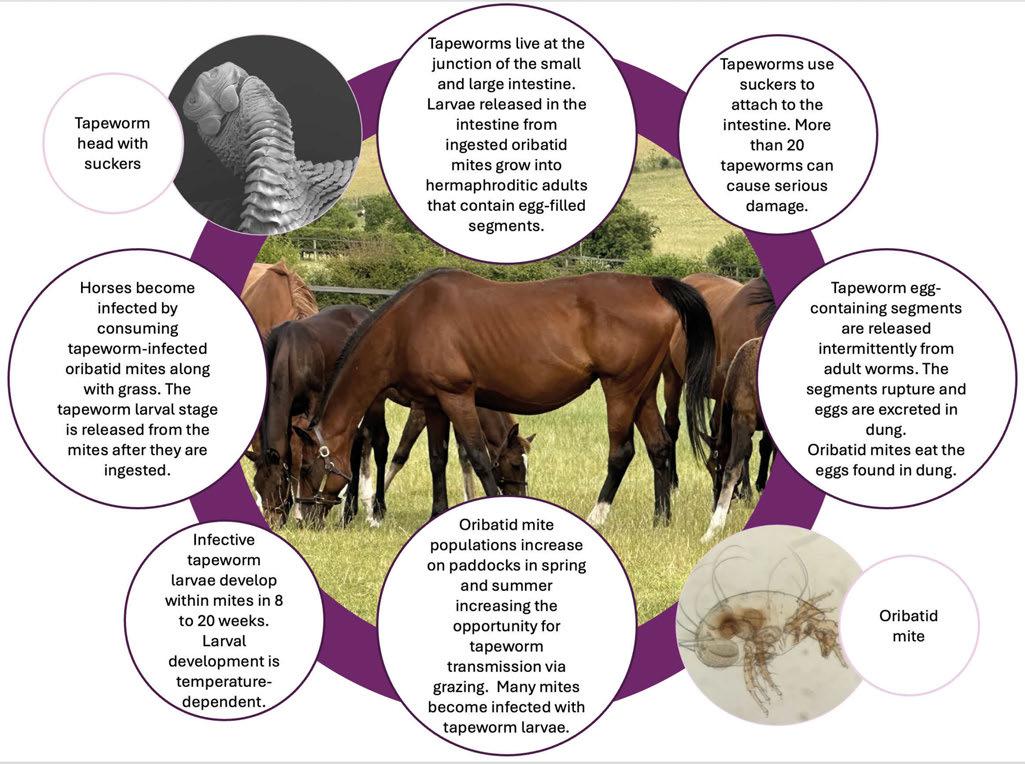
of >20 tapeworms is considered to put a horse at risk of colic due to the level of damage observed in horses that harbour burdens exceeding this level of infection (Matthews et al. 2023).
In 2023, treatment failures with the two approved medications for tapeworm treatment, pyrantel and praziquantel, were documented in the United States (Nielsen 2023). Anecdotal observations of tapeworm resistance on stud farms have also been reported in the UK and EU, with recently-wormed horses showing evidence of infection and signs of clinical disease.
With drug resistance now identified as a concern for tapeworm management, it is important to use these medications only in horses showing tapeworm burdens. This targeted approach aims to reduce the release of worm eggs into the environment and lower the potential for disease in horses with larger infections whilst avoiding unnecessary treatments. Testing methods should be combined with improved grazing management to decrease parasite transmission and minimise tapeworm infections, thereby reducing the need for frequent treatments.
To effectively reduce pasture contamination, regular dung removal is essential. It is advisable to clear dung completely at least twice a week. This lowers the chances of intermediate host mites consuming tapeworm eggs in dung. Reduced contamination with infected mites leads to lower levels of infection in horses. If horses grazing clean paddocks are tested, fewer will test positive. This will reduce the number of horses requiring treatment and lower the risk of resistance. Optimal pasture hygiene is particularly important on foal and yearling paddocks. Avoid harrowing and spreading fresh manure onto paddocks as these actions can inadvertently disseminate worm stages that survive from one season to the next in UK weather conditions.
Maintaining a low paddock stocking density is important, especially for foals and youngsters. It is generally recommended to allocate at least one acre of pasture per horse. Additionally, allowing paddocks to rest for 6-12 months can reduce worm contamination. If opting for a six-month rest, it is most effective to do this from early to midyear. This timing helps to reduce small redworm eggs and larvae on paddocks
By Prof Jacqueline B Matthews FRCVS
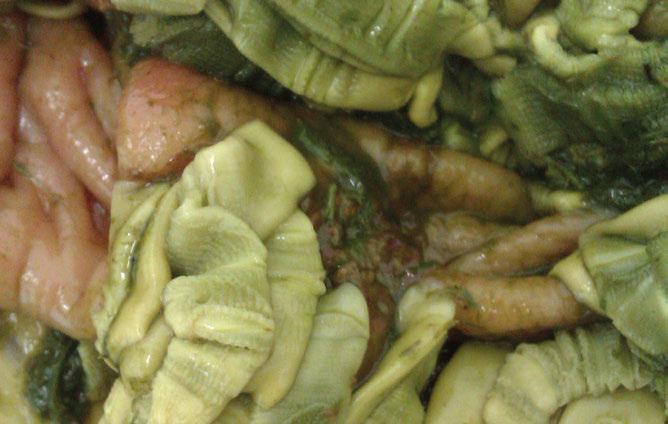
from one year by mid-summer the following year.
Although ascarid eggs and tapeworm larvae (carried by infected mites) may persist longer on contaminated fields, a prolonged resting period without horses will lower overall contamination levels. During rest phases, sheep and cattle can be used for paddock management as they do not become infected with common equine worms. However, it is important to consider the risk of liver fluke transmission, which can occur on fields grazed by ruminants. Consult a veterinary surgeon when incorporating mixed-species grazing into a control strategy; they can perform a detailed risk assessment and, if needed, conduct tests to evaluate the potential for liver fluke infection.
Faecal egg count (FEC) testing has low sensitivity when it comes to detecting tapeworm infections (Matthews et al. 2023). Even methods that utilise larger amounts of dung and include centrifugation steps only achieve a sensitivity of 61% so that nearly 40% of tapeworm-infected horses will be misdiagnosed. This limited sensitivity is attributed to the fact that adult tapeworms do not consistently release eggs, and infections involve immature or sterile worms that do not produce eggs. To address these challenges, tests that measure antibodies (Fig 3) have been developed, offering a more sensitive approach to detecting tapeworm infections.
Equine tapeworm infections can be effectively identified using blood or saliva tests. These measure worm-specific
antibodies which closely correlate with the level of tapeworms present (Lightbody et al. 2016). These tests are particularly effective at detecting horses with >20 tapeworms, a threshold considered clinically significant.
Test results are categorised as ‘serum scores’ (blood test) or ‘saliva scores’ (saliva test), classifying horses into three groups: ‘low,’ ‘borderline,’ or ‘moderate/ high.’ Those horses with results falling into the ‘borderline’ or ‘moderate/ high’ categories are recommended to receive anti-tapeworm treatment. It is important to test all horses grazing the same paddock to identify potential contaminators. Foals can be tested from six months; however, saliva tests should only be conducted after they are weaned, as antibodies in their dam’s milk can affect the results.
The frequency of testing should be based on a risk assessment. Where testing has previously shown multiple horses with tapeworm burdens, or where tapeworm-related disease has been identified, testing every six months is advisable; ideally in spring and autumn. Spring testing helps identify horses that may excrete eggs onto paddocks during the grazing season when there is increased activity of the intermediate host mites. Autumn testing is vital for identifying horses that have accumulated higher parasite loads while grazing, thereby increasing their risk of colic.
In low-risk groups, characterised by low saliva or serum scores and/or a lack of prior tapeworm-related disease, annual testing may suffice. As tapeworm infections can occur year-round, testing can be carried out at any time.
In higher infection-rate herds, a
single treatment may not be adequate to reduce tapeworm transmission. Persistence of infection may be due to wormer resistance, residual worm burdens following treatment, rapid reinfection from contaminated pastures, or a combination of these factors. In these cases, it is crucial to minimise reinfection opportunities and, if possible, move susceptible horses to lower-risk grazing. If this is not an option, considerably improving pasture management, such as daily dung removal, is vital.
Retesting horses using saliva tests can be conducted three months after worming to monitor ongoing exposure to tapeworm-infected mites. Blood tests, which take longer for antibody levels to decrease, may be conducted four months after treatment. If antibody levels remain elevated despite effective worming and improved pasture management, the possibility of resistance should be explored.
Implementing antibody testing significantly reduces wormer use. Between 2015 and 2022, over 164,000 horses in the UK underwent testing using the EquiSal Tapeworm Saliva Test, with only around one-third needing treatment, saving 111,927 wormer doses (Matthews et al. 2024).
On stud farms, it is essential to develop control plans with a veterinary surgeon to assess infection risk and create tailored strategies for different age groups. Testing frequency should be based on a risk assessment that considers age, access to contaminated grass, and previous test results. Younger horses tend to carry higher parasite burdens, especially if grazed on highly contaminated paddocks. Regular assessments can identify risky management practices.
If high infection levels or tapewormrelated diseases are found, more frequent testing is recommended to facilitate early treatment and reduce colic risk. However, to reduce the risk of wormer resistance, avoid frequent testing and treatment cycles on contaminated paddocks and focus on management practices that curb re-infection opportunities. After implementing management improvements, further testing can evaluate their effectiveness. If high infection rates continue, resistance may be an issue so consider alternative treatment options.
Introducing new horses poses a

risk of bringing in new infections or drug-resistant tapeworms. Therefore, a thorough assessment of newcomers should be conducted to check for infections with roundworms (such as small redworms or ascarids) as well as tapeworms. The traditional method of treating all new arrivals with a broad-spectrum wormer is no longer recommended due to rising drug resistance. Instead, evaluate new horses using the following:
1. FEC tests to determine if they are shedding small redworm or ascarid eggs
2. Blood tests to identify small redworm stages that may go undetected in FEC tests
3. Blood or saliva tests to assess if they are infected with tapeworm
Where tests return positive results, it is important to choose the appropriate wormer designed to target the identified infection(s). Should a horse test positive in the initial FEC test, it is recommended to perform a follow-up FEC test. This will help determine the effectiveness of the treatment and highlight if there is a risk of introducing drug-resistant small redworms or ascarids.
Tapeworms are common disease-causing
infections of horses, necessitating effective management. Traditional worming practices, which involve blanket treatments across all horses, are becoming less viable due to the increasing incidence of wormer resistance. This trend highlights the need for a more tailored approach, especially considering that no new anti-tapeworm medications are on the horizon.
Implementing tapeworm testing is essential to determine whether individual horses require treatment. Many horses, particularly in low-risk environments, may have minimal or no tapeworm infections, making routine worming unnecessary. Excellent paddock management and testing will promote the long-term effectiveness of existing wormers whilst helping mitigate the risk of disease.
Lightbody KL, Davis PJ, Austin CJ. 2016. Vet Clin Pathol. 45:335-46.
Matthews JB, Lightbody KL, Peczak N, Austin CJ. 2024. Eq Vet Ed. 36, S13:14-5. Matthews JB, Peczak N, Lightbody KL. 2023. Pathogens 12:1233.
Nielsen MK. 2022. Int J Parasitol Drugs Drug Resist. 20;76-88.
Nielsen MK. 2023. Int J Parasitol Drugs Drug Resist. 22:96-101.
Proudman CJ, Trees AJ. 1999. Parasitol Today 15:156-9.

Due to the threat of wormer resistance, best practice guidelines advise that DIAGNOSTIC-LED programmes should be used for worm control in horses1
Horses in specific age categories have different worm risk profiles. A risk assessment should be performed, and an age-appropriate worming programme applied

Strongyle worm egg shedding (FEC) patterns in adult horses mean that >70% of those tested do not need worming2


Only 1/3 of UK horses tested using the EquiSal saliva test have tapeworm infections that require treatment3


In low-risk horses tested with the small redworm blood test, >60% fell below the lowest worm burden threshold3

1 BEVA Anthelmintic Toolkit (beva.org.uk), 2 Relf et al. 2013. Parasitology 140:641-652, 3 Matthews et al. 2024. In Practice 46:34-41.
Exemplar diagnostic-led worm control programme
Foals & yearlings
Horses 2-4 years-old
Strategic treatments
✓ (Worm foals of <4 months every 2 months for ascarids. If >6 months-old, treat for small redworm larvae in late autumn/ winter)
✓ (Treat for small redworm larvae in late autumn/winter)
Horses >4 years-old (mares, stallions)

✓ (If assessed as high risk, treat for small redworm larvae in late autumn/winter)


Faecal egg count (FEC) test
✓ (Test from 4 months-old to identify type of worm eggs shed to inform appropriate wormer selection)
✓ (Test spring to late summer to assess egg shedding level)
✓ (Test spring to late summer to assess egg shedding level)

Tapeworm test (saliva or blood test)
✓ (Test in spring and autumn from 6 months-old if weaned)
✓ (Test in spring and autumn)
✓ (Test in spring and autumn)
Small Redworm Blood test (low risk only)
✘ NOT SUITABLE for informing worming treatments
✘ NOT SUITABLE for informing worming treatments
✓ (If assessed as low risk, test for small redworm in late autumn/winter)
Excellent paddock management (daily dung removal, low stocking density) should be implemented on all fields throughout the year, particularly where high-risk younger horses graze



We are delighted to again bring members an exclusive opportunity to book Richmond Enclosure badges for all five days of the Qatar Glorious Goodwood Festival, July 29 - August 2. The stylish Richmond Enclosure provides a fantastic view of the action as well as access to the best bars and dining options on course –usually this enclosure is only available to annual members. The prices are:
• £92.54 per person until May 31 (£105 per person thereafter)
• £45 per person for those aged 18-24 until May 31
• Car-park labels for car park 8 can be prebooked at £15 each
Please call 01243 755055 with the discount code to book. This discount code cannot be used online. The discount code can be found in the members area – for ROA members the code is located on the Discounts page and on your Racecourse Badge Scheme for Owners Page, while for Racegoers Club members the code is located on your Racegoers Club page.
Goodwood is also offering members discounted access to hospitality packages for those wanting to enjoy the meeting in style, with 10% off their most popular packages in the Secret Garden and Long View restaurants. The Secret Garden is located just
beyond the winning post and offers the most tranquil dining experience the racecourse has to offer. The package includes Richmond Enclosure admission, a cocktail reception, chef’s table menu, afternoon tea, an inclusive bar serving house wine, beer, spirits and soft drinks, parking and racecard.
A similar offering is available in the Long View restaurant, which boasts impressive and uninterrupted views of the home straight and Horse Walk via the elevated balcony.
Prices start at £533.50 per person. Please direct all hospitality enquiries to 01243 755054 or via email at hospitality@goodwood.com.
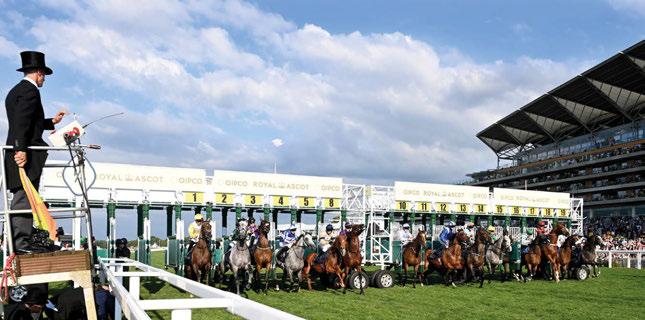
The Royal Meeting is a highlight of the racing and social calendar
We are delighted to link with Ascot racecourse to offer members discounts for both entry and hospitality over Royal Ascot week.
The highlight of the summer racing calendar runs from Tuesday, June 17 through to Saturday, June 21, and top-class racing is guaranteed throughout.
This special offer is available for the Queen Anne Enclosure, which grants
Once again members enjoyed a great time in the ROA Cheltenham marquee over all four days of the Festival. Returned to its previous location next to the shopping village, members and their guests were able to watch all the thrill and spills of the racing within the comfort of our enlarged facility, with plenty of TV screens to watch the action unfolding out on the track.
We also hosted our ever-popular champion tipster competition each day. Congratulations to the following guests who each win £100 Tote credit:
• Tuesday: Katherine Conshaw from Bradford
• Wednesday: Peter Trotter from Cheltenham
• Thursday: A Groves from Sutton Coldfield
• Friday: Peter Cuthbertson from Chipping Campden
During the course of the week,
access to the parade ring, bandstand and grandstand and provides unparalleled views of the racecourse.
Tickets are £95 per person.
Members can book with a 50% discount by using the discount code available in the members area of the website. Please note there is a maximum of two tickets per booking.
The discount code for ROA members can be found in the Discounts area and on the RBSO page, while for Racegoers Club members, the discount code can be found in the Racegoers Club area.
15% discount on hospitality at The
With a capacity of 80 guests and private tables, The Deck package includes Moët & Chandon Impérial Champagne on arrival, three-course set menu, complimentary bar serving beer, wine, spirits and soft drinks throughout the day, afternoon tea, car-park label, racecard and racing paper.
The Panoramic Restaurant sees Raymond Blanc return as Chef-inresidence. With a similar package to The Deck, including Moët & Chandon Grand Vintage Champagne on arrival, there is no better place to watch the action unfold on the track.
All restaurants in the Royal Enclosure and Queen Anne Enclosure are offering members a 10% discount on the Tuesday, Wednesday and Saturday of Royal Ascot. Please refer to Ascot’s website for information on availability and pricing.
To book, members need to contact hospitality@ascot.com and state that they are an ROA member and quote your membership number. This will be verified with the ROA.

Racing Welfare invited guests to join a raffle for tickets to their hospitality facility for the first day at Aintree’s Grand National meeting, and telling guests more about the charity’s work. Over the course of the week they raised £1,300 and the lucky winners of the hospitality are Michael Lagan, Vivienne Palmer, Fiona Thurnell and John Davies.
If the Cheltenham Festival has put you in the mood for an end-ofyear celebration, the date has been confirmed for the ROA Horseracing Awards. Make sure you put Thursday, December 4 at the Royal Lancaster Hotel in London in your diary, and help us toast the finest Flat and jumps horses in the country.
The Owner Relations team started work in January with the key objective of improving the retention of owners within British racing.
The team recognises that in order to have any kind of impact in this area, we firstly need to better understand the reasons owners leave – or stay – in the sport. We also need much greater clarity on what can be done to make proactive changes in the areas of opportunity that owners highlight to us.
The team have begun the task of actively approaching owners to find out more about what is valued and not valued within each ownership experience. We have had a positive response since starting, with many owners reaching out and contacting us to provide their own feedback and to ask more about the team.
These conversations have obviously given us more qualitative than quantitative answers at this stage, so the next objective is to supply all registered owners with the ROA ownership survey in the coming weeks in order to facilitate further structured feedback.
How can I get Involved?
We are keen to speak with owners directly about their complete ownership experience, so please do get

in touch with the Owner Relations team on info@roa.co.uk if you would like to do so.
The forthcoming ROA ownership survey will also be an opportunity to provide the industry with your thoughts on ownership. It is in the process of being sent to all registered owners via
email, so if you are not a registered owner yourself – either because you are no longer an active owner or are a syndicate/club member – and would like to complete the survey, we can arrange for a copy to be sent to you. Please email the ROA for further details.
The benefits of being VAT registered as an owner are many. Recovery of VAT is paid on:
• Horse purchase – if the entity owns the horse 100%, they can go back four years from the effective date of registration given by the BHA in the D1 or D2 declaration. This is reduced to six months for ownership shares between 50%-99%.
• Registration fees - all VAT incurred on BHA registration fees, including registration of partnerships, syndicates, and racing clubs.
• Training fees – any costs passed on by the trainer subject to VAT can be included in the VAT submission.
• Vet’s fees.
• Expenses incurred whilst watching your runner – this includes refreshments and the VAT on
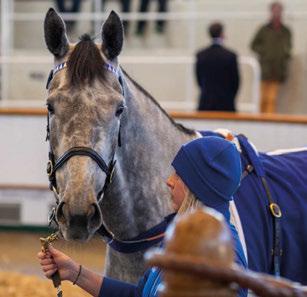
accommodation for the day before or day of the race.
• Keep fees (with the intention of returning your horse to training).
• As a VAT-registered owner, you will
also receive 20% VAT in addition to prize-money which will be declared to HMRC.
Sole owners, partnerships, syndicates and racing clubs that have a minimum share of 50% of a racehorse registered under the care and control of a UK-based trainer and has a sponsorship in place may be eligible to reclaim the VAT on their racing activities.
As an ROA member, you may be able to take advantage of our Tote sponsorship scheme – please contact sponsorship@roa.co.uk to for further information.
To discuss any aspects of becoming VAT-registered or to appoint ROA VAT Solution as your VAT Agent, please contact our team on vat@roa.co.uk or call 0118 338 5685.
The Racing Foundation has launched a three-year strategy to support the delivery of its purpose to work in partnership with the racing industry to help achieve a sustainable future for the sport.
The Racing Foundation was established in 2012 to oversee the distribution of funds to charitable causes within the racing and thoroughbred industry following the sale of the Tote, and it has awarded over £39 million in grants to various worthy causes.
The latest strategy has three key areas of focus:
Racing’s people – welfare, education and training, recruitment and retention, equality, diversity and inclusion.
Equine welfare – safety, traceability, aftercare and equine science research.
ESG (environmental, social and governance) – environment, social impact, youth and community engagement, social licence and accountability.
The ambition of the Racing Foundation across this strategy cycle is to develop understanding and action around the key charitable issues facing racing and to assist the industry with developing a collaborative and strategic response.
To read the Racing Foundation’s 2025 - 2027 strategy visit www.racingfoundation.co.uk.
Friday, April 18
Peter O’Sullevan Lambourn Open Day
Friday, April 18
Racing Welfare Middleham Open Day
Tuesday, April 29
Free entry to day one of the Punchestown Festival
Tuesday, May 6
Racing Welfare Woburn Golf Day
As World Pool enters its seventh year of operation, its influence on UK and Irish racing continues to expand.
From getting up and running in 2019 with its first event at Royal Ascot, the international commingling betting brand, pioneered and powered by the Hong Kong Jockey Club (HKJC), has now been rolled out across five continents and was active for fixtures in every month of the year in 2024.
While betting into the huge multimillion-pound pools via the Tote can deliver exceptional value for British and Irish punters, the industry as a whole is seeing significant benefits from World Pool, notably the increased media rights that boost revenue for racecourses, enabling them to increase prize-money.
Last year, World Pool announced that contributions to racecourses in the UK and Ireland had surpassed a remarkable £50 million since that first fixture back in 2019.
In 2025, World Pool will see new developments, including an exciting expansion at Newbury. For the first time, every race on Lockinge day will be internationally commingled, while Irish 2,000 Guineas day will be a World Pool raceday for the first time.
As a result, both races will welcome the popular ‘World Pool Moment of the Day’ initiative, which awards £4,000 to the groom of the winner of the day’s most memorable race, chosen based on exciting or extraordinary performances. Since its inception, World Pool has given over £250,000 to Moment of the Day-winning grooms.
World Pool is also continuing its commitment to the UK and Ireland
Friday, May 16
Discover Newmarket Tour with racing
June 21-27
Racing Staff Week
Thursday, July 3
Chapel Down wine and dine tour
Tuesday, July 29 –
Saturday, August 2
Exclusive access to Richmond
Enclosure tickets at Glorious Goodwood and 10% of selected hospitality packages (see opening page for details)

jockeys’ championship in 2025.
After a successful debut in 2024, which saw winner Billy Loughnane donate his £50,000 prize to the Christy Lambe Foundation, the championship will once again highlight the achievements of jockeys across the season and reinforce HKJC’s investment in charitable initiatives.
Also new for World Pool in 2025 is its partnership with Ryan Moore. Moore will be a World Pool ambassador for the 2025 season, providing a regular blog on worldpool.hkjc.com and featuring in exclusive video content.
Upon the announcement, Moore said: “It’s important that the racing world starts to work together and to have everyone pulling in the same direction.
“If we’re speaking with one voice and trying to achieve the same goals, it will really help the whole sport to prosper. World Pool plays a big part in that, and I look forward to being part of that journey.”
Monday, August 4
Racing Welfare Carlisle Raceday
Friday, September 5
Racing Welfare Haydock Raceday
Sunday, September 7
Racing Welfare Malton Open Day
Friday, September 12
Hospitality package at Doncaster
Friday, October 24
Morgan Motor Tour followed by racing at Cheltenham
Guy Lavender, the new Chief Executive at Cheltenham racecourse, announced ahead of this year’s Festival that they would prioritise the customer experience. They wanted people to feel like they belonged when they were attending the four-day meeting.
So how did they do? The welcome was improved. It’s nice to be greeted by a smiling face and I’m sure any new attendees would have appreciated the help being offered. I can’t recall having to wait very long to be served food or drink and the queues for the toilets were manageable or non-existent. Some will say that was due to the drop in attendances, but I can’t say it felt any less busy in the Club Enclosure than previous years on the Tuesday. The Wednesday was noticeably quieter, but I’m not complaining, as it made it far more comfortable and easier to move around. So, all in all, Guy and his team have made a good start.
However, one area they could look at is the after-sales service. One of our party found out they wouldn’t be able to attend a week before the Festival started. As the lead booker, I contacted the Cheltenham ticket office and explained the situation. I was informed that I could apply for a 50% refund if I completed an online form. I pointed out that as I buy a lot of tickets for my group, I would prefer a credit for the unused Festival tickets instead. I asked if I could use the credit towards tickets for the Tingle Creek meeting at Sandown. The lady I was talking to said yes that would work and she started to process the purchase. I was pleased that my friend would be able to enjoy another day’s racing in place of his day at the Festival. However, my joy was short-lived. She was unable to complete the order and went away to check with her supervisor. When she returned, she apologised and explained that the order wouldn’t work because it was for a different racecourse. If I wanted to use the credit, it had to be used at Cheltenham and it had to be used this year. I thanked her for her time, as it wasn’t her fault that the Jockey Club’s refund policy is so complex.
Surely it makes more sense for the
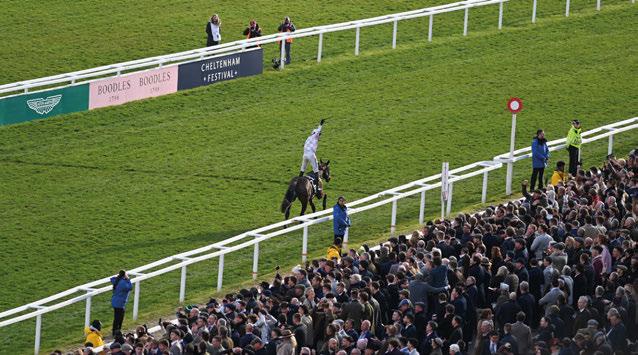
Jockey Club to allow credits to be used at their other courses. A customer may try a different course and find that it’s another great day out. Another benefit of providing a credit is it could go a long way to solving the ticket tout problem.
The 2025 Festival will be remembered for its unpredictability and its poignancy. The meeting opened with the Michael O’Sullivan Supreme Novices’ Hurdle, in memory of the young Irish jockey who tragically lost his life after a fall at Thurles in February.
Two years earlier, Marine Nationale and Jazzy Matty provided Michael with victories on the opening day of the 2023 Festival, which saw him finish the afternoon as the leading rider. Both horses returned this year, but on the Wednesday. Surely the unthinkable couldn’t happen, could it? But this is Cheltenham – and at Cheltenham the remarkable is possible.
Marine Nationale stormed up the hill to a comfortable success in the Champion Chase. The scenes in and around the winner’s enclosure afterwards were very emotional, with Barry Connell appreciating the reception he and Marine Nationale received from the crowd and ensuring Michael’s girlfriend, Charlotte, was an integral part of the celebrations.
Around 30 minutes later, Jazzy Matty captured the Grand Annual. If someone had scripted this prior to the Festival, they would have been told to
stop being so fanciful. But, as Jonjo O’Neill once said, Cheltenham is a magical place!
The other ‘I was there’ moment of this year’s Festival was the Champion Hurdle. I cannot recall seeing a more eventful or unpredictable race. The gasp from 50,000 spectators when the favourite, Constitution Hill, took a tumble four out must have been heard for miles around. And just as it looked like State Man was going to saunter to victory, we all gasped again, as he fell at the last, allowing Golden Ace to become a surprise Champion Hurdler. Congratulations to her owner, Ian Gosden, for having the courage to roll the dice. He chose to run his mare in the Champion Hurdle because he feared Lossiemouth in the Mares’ Hurdle.
Had she taken part, Lossiemouth would’ve almost certainly finished in front of Golden Ace and connections must be ruing the decision to divert their grey mare. I’m glad she wasn’t in the race though, as we would’ve been robbed of that feeling of sheer disbelief at what had unfolded in front of us.
As a Festival-goer of over 40 years, I’m encouraged by what Guy Lavender and his team are trying to do to provide customers with an excellent experience and I wish them well in their quest to improve attendances. One last thought – I wouldn’t have experienced my two ‘I was there’ moments watching from a bar in Benidorm!

This month’s Bid to Give auction item available exclusively to ROA members in partnership with Racing Welfare is a Jane Braithwaite Fine Art commission of your horse or pet, to be painted in oils on either stretched canvas or board (to be advised by client).
The painting itself can be up to 24” x 30” including frame and will be painted from images you supply (permission to use photos as reference for a painting must be acquired from the photographer due to copyright regulations).
Additionally, the package includes fantastic hospitality for two at Racing Welfare’s annual Aintree lunch, supported by the ROA, on April 9, 2026, where the painting will be presented by Jane.
Last year, this auction lot was won by Lisa, who chose a commission of George Boughey’s string. She said: “This was a ‘win win win’ – a wonderful painting by Jane who made the whole process so easy, plus an amazing hospitality day for Aintree
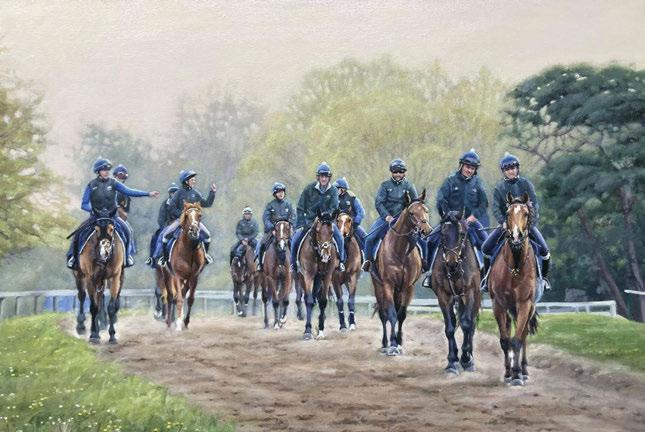
and giving something back to Racing Welfare at the same time.”
To place your bid and be in with a chance of winning, go to www.bidtogive.co.uk before the
Racing Welfare is the only charity that supports all of racing’s people –including stud, stable and racecourse staff, alongside those working in associated professions. Racing Welfare’s mission is to enhance and support the wellbeing of racing’s people, and careers advice and guidance is a key part of this.
Andrea Kelly, 49, from south Wales, has worked at Tim Vaughan Racing at Pant Wilkin Stables in Cowbridge for the past 20 years, most recently in the role of Travelling Head Lass. Andrea turned to Racing Welfare for help to pursue her dream job while remaining working in an industry she knows and loves.
She said: “Racing is all I’ve ever known, but I just knew I couldn’t do the long days and nights travelling up and down the country anymore. I still wanted to continue using my skills and
knowledge of the industry, so I turned to Racing Welfare for guidance. I was offered help with my CV as well as being given the contacts I needed to gain work experience with the British Horseracing Authority (BHA) as an Equine Welfare and Integrity Officer (EWIO).
“Through shadowing and learning the role of an EWIO, which includes checking and recording the accreditation of all horses and accompanying staff at racecourses, as well as ensuring equine welfare standards, I now work as an EWIO on a sessional work contract of 50 days per year, while still working part time for Tim Vaughan as a horsebox driver. Tim has been absolutely amazing to me in supporting my career change – I simply couldn’t wish for a better boss.
“The joy of my new role is that I have a better work-life balance and have time
auction closes on Friday, April 25. All funds raised go towards Racing Welfare’s crucial work in supporting those working in and retired from the racing industry.

to see my family and friends while still working in an industry I love. I hope as time goes on that I can gain more hours working as an EWIO and would like to thank Racing Welfare for all of their invaluable help.”
To find out more about how Racing Welfare supports all of racing’s people, or how you can support this vital work, go to racingwelfare.co.uk.

Since its establishment 25 years ago, Retraining of Racehorses (RoR) has transformed aftercare for retired racehorses, writes David Catlow, RoR’s Managing Director Founded to address concerns about their lack of demand post-racing, RoR has successfully increased their desirability across the equestrian world. Today, jurisdictions globally are adopting RoR’s model, reinforcing the importance of clear pathways for former racehorses beyond their racing careers.
By developing strategic aftercare initiatives including structured opportunities to compete, RoR has ensured that retired racehorses have purpose. However, while competitions remain a crucial driver of demand, our focus extends far beyond. We are committed to safeguarding the welfare of racehorses throughout their lives by addressing key aftercare challenges. Public expectations around equine welfare have evolved, and RoR has adapted accordingly. The rising demand for ex-racehorses has led to more inexperienced owners taking on horses requiring expert retraining. Without proper support, this can lead to welfare concerns and negative publicity for the industry.
While many owners and trainers ensure responsible rehoming, others lack networks or expertise, and some horses enter sales channels, reaching unsuitable homes within days of leaving training. RoR seeks to close these gaps by promoting structured rehoming processes and ensuring every horse transitions successfully.
In January 2024, RoR published a three-year strategy (available at www. ror.org.uk/rorstrategy) to enhance aftercare provision across British racing. Historically, the aftercare sector has been fragmented, leaving some horses vulnerable. Our strategy, adopted by the British Horseracing Authority (BHA) as the industry strategy for aftercare, provides a framework to ensure that no horse is left without support.
Backed by major industry stakeholders including the Racehorse Owners Association, RoR’s work is essential in securing the future of every retiring racehorse and demonstrating racing’s commitment to the highest welfare standards.
RoR advocates for owners to take proactive responsibility for each horse’s transition, moving away from a ‘buyer beware’ model towards structured retraining and rehoming pathways that give horses the best chance of long-
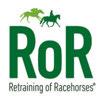
term success. Encouraging owners to allocate resources for retraining, rather than relying on charities, is a key focus, ensuring horses are set up for a sustainable future.
Suitability assessments help owners and trainers determine whether a horse has the potential for a second career or, when necessary, make informed decisions about euthanasia.
To support this, RoR is establishing an approved retrainer network, creating a trusted network for horses requiring professional retraining. Additionally, providing centres where horses with uncertain futures can be evaluated with initial owner funding before additional industry support is considered. Through these initiatives, RoR is shaping a more responsible and structured approach to aftercare, ensuring the best outcomes for former racehorses.
Education is another central pillar of RoR’s mission. Many underestimate the complexities of retraining a racehorse, leading to preventable welfare issues. We are developing a comprehensive framework to educate existing and potential members, providing expert guidance and training opportunities.
Traceability remains a challenge once horses leave the regulated racing environment. RoR collaborates with
National Governing Bodies (NGBs) and equestrian organisations to establish reciprocal registration agreements, incentivising owners to maintain traceability records. Through these partnerships, we aim to ensure former racehorses remain accounted for throughout their lives.
RoR’s mission encompasses the full spectrum of aftercare responsibilities. As the leading strategic body for racehorse aftercare in Britain, we coordinate and guide industry efforts to ensure every retired racehorse has a viable future.
With continued support from owners, trainers and stakeholders, we can uphold the highest welfare standards and secure a positive future for all former racehorses. By fostering responsible ownership, promoting structured retraining pathways, and enhancing traceability, RoR safeguards equine welfare while reinforcing racing’s social licence to operate.
For racing to thrive, every horse must be set up for success beyond the track. Through collaboration, education, and strategic investment, RoR is committed to making this vision a reality.
See www.ror.org.uk for more information on RoR’s work.
A new series of unmounted educational and social events has been launched by RoR. These educational social events across the country are designed to enrich the RoR community and provide valuable support to members and their former racehorses at every stage of their retraining journey. They focus on the most common challenges and questions faced by owners of former racehorses.
Hosted quarterly by RoR’s regional development officers, the events are designed to foster a sense of community, offering members opportunities to connect, learn and share.
Upcoming unmounted educational events:
• Scotland: Bogenraith Camp –April 11
• South West: Pontispool Spring Camp – April 18
• Wales and Borders: Lincomb Camp – May 24
• South West: Pontispool Summer Camp – August 15
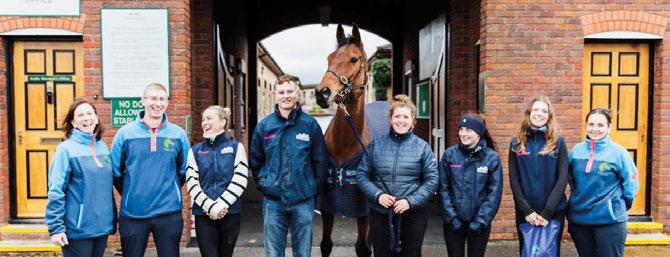
The Jockey Club has announced a new partnership with leading Irish equine education provider Equi-Ed to fund 100 places for racing staff across Britain to receive enhanced racehorse welfare training, the first time such a scheme has supported by a British racecourse group. It comes following a successful pilot earlier this month when five staff from Fergal O’Brien Racing undertook a one-day course to help them boost their scientific and physiological understanding of the thoroughbred as well as specific processes to help them in the ongoing care of the horses they look after.
Topics included stride-length analysis, palpation (physical examination) and skeletal instruction to equip the staff with specialist knowledge to help them monitor their horses’ physical condition and wellbeing on an ongoing basis.
Jockey Fern O’Brien attended the training as part of the Ravenswell team. She said: “In the space of a few hours I learnt more than I have in the last 19 years! The training is really beneficial for us stable staff who love our horses to be able to understand
them more, work them out and look after them.”
Jon Pullin, Head of Racing and Clerk of the Course at Cheltenham, said: “This is a new and really exciting space for us to be moving into. The pilot at Cheltenham was a huge success and the team from Fergal’s found it massively beneficial.
“We know the exceptional level of care that racing staff provide to their horses all too well, but this course will equip them with some really useful additional skills, as well as helping them in their own professional development.
“We remain totally committed to playing our part in driving the very best standards of care for our equine athletes, whether on the racecourse or at home, and we look forward to delivering the next stage in this exciting partnership later in the year.”
The training will be specifically designed to enhance attendees’ understanding and ability to care for the racehorses in their care whilst also providing useful additional skills for their ongoing career development through an independently certified qualification.
The BHA relaunched the welfare awareness campaign HorsePWR ahead of the spring festivals.
Following the success of the first campaign, launched in 2024, this year saw the highly popular imagery return, combined with headlines that delivered welfare messaging to the viewer.
Overall, the campaign ran from February into April, with advertising appearing in Bristol, London, Liverpool and Birmingham, and half-page advertisements taken in The Times, The Mirror and The Sun alongside a social media campaign across Facebook and Instagram.
Following the shock and awe of the Labour government’s proposed revisions to employment law in 2024, could 2025 be a quiet year?
That would come as something of a relief, writes TBA lawyer Rachel Flynn, as last year’s Employment Rights Bill (‘the Bill’), introduced in parliament on October 10, 2024 was a seismic shift in the landscape of employment law in the UK.
Among other changes, the proposed Bill introduced day one unfair dismissal rights. While these will not be in force until Autumn 2026, they promise to transform the way in which employers deal with workforce management in early-stage employment.
There will be no more two-year qualifying period. Instead, the Bill introduces the new concept of an “initial period of employment” (IPE), during which a modified version of the right to unfair dismissal will apply. The IPE seems likely to be a nine-month period.
The standard of ‘reasonableness’ for dismissals during the IPE will be modified to require employers to ‘show’ that the reason for dismissal is ‘related to the employee’s conduct, capability, statutory restriction, or some other substantial reason (SOSR) related to the employee’. Note that redundancy is excluded from this list, meaning that employees made redundant during the IPE have the full right to claim unfair dismissal from day one.
While the Bill provides a broad framework, several areas remain uncertain and will require further clarification through consultations and accompanying regulations.

GEORGE SELWYN

Many other questions remain about the day one unfair dismissal right. What steps will be required to dismiss an employee fairly within the IPE? The government has hinted that this could involve holding a meeting with the employee to explain concerns about their performance, at which the employee could choose to be accompanied by a trade union representative/colleague. Will that be it?
What will ‘showing’ the fair reason mean for the employer? Will it mean following the steps? Or something else? If employees can bring claims about whether the employer has adequately ‘shown’ the reason for their dismissal during the IPE, that is likely to create another layer of pressure on the already congested employment tribunal system.
What does SOSR ‘related to the employee’ mean? Maybe a breakdown in trust and confidence or a customer’s refusal to work with the employee?
So, is there anything employers should do about the intended changes right now? Well, the government has committed not to make the changes until Autumn 2026, with the two-year qualifying period remaining in place until then. Even once the changes come into force, they may only apply to new joiners after that point. We may also find that many of the proposals are watered down by then. So, although the direction of travel is clear, it is too soon to make radical changes, especially because there are so many areas of uncertainty to resolve.
Things to think about for the future will be (i) pre-employment screening processes; (ii) how employees are managed during their probationary
periods; and (iii) keeping managers on top of the need to review an employee’s performance.
The Bill also aims to dissuade employers further from the practice of fire and rehire, where employees who do not agree to proposals to change their contractual terms are dismissed and then re-engaged on new terms in substantially the same roles. There is already a Code of Practice on this topic.
From January 20, 2025, protective awards (of up to 90 days uncapped salary for each affected employee) that can be imposed by an employment tribunal against an employer if the employer has unreasonably complied with the Code, can now be increased by up to 25%.
Last year we trailed a new right to neonatal care leave and pay. From April 6, 2025, parents may take up to 12 weeks’ leave (and if eligible, pay) if their baby is admitted to hospital in the first 28 days after birth for a continuous stay of at least a week. The right begins on day one of employment and runs in addition to existing family-friendly leave.
The government has abandoned a planned right to switch off/right to disconnect from work outside of their contractual hours.
In many respects, 2025 is a “wait and see” year. It is, however, worthwhile to start considering whether to bring forward any potential changes in the workforce before they become more challenging to implement in 2026.
April increases
• The national minimum wage will increase from £11.44 to £12.21 per hour for workers aged 21 and above.
• Employer National Insurance Contributions (NICs) will increase from 13.8% to 15% and the threshold at which they are payable will decrease from £9,100 to £5,000.
• Statutory sick pay will increase from £116.75 to £118.75 per week.
• We also expect to see an increase in the cap on unfair dismissal compensation beyond £115,115 as well as other awards.
The 2025 TBA Stud Employee Award, generously sponsored by Peter Stanley’s New England Stud, is now open for nominations. The award honours the vital contributions of stud employees from both Flat and National Hunt stud farms to the thoroughbred breeding industry, highlighting individuals who have made a positive difference in their roles.
Nominations must be submitted to the TBA office by Monday, May 12. Six individuals will be shortlisted and following telephone interviews, a winner will be selected to receive the prestigious Charlie Langton bronze trophy and a £2,000 cash prize. The remaining five shortlisted individuals will each receive £250 and a certificate of recognition.
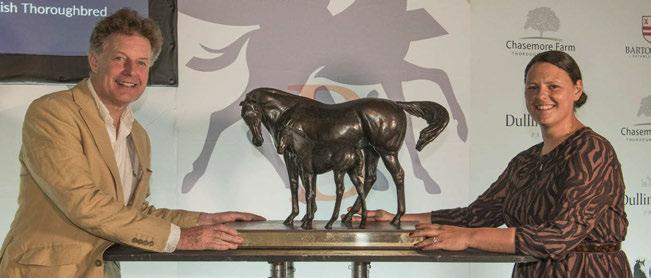
The award winner will be invited to attend the TBA Flat Breeders’ Awards Evening on Wednesday, July 12 at Chippenham Park, near Newmarket, where they will be presented with the trophy as part of the evening celebrations.
In 2024 the award was won by Carla Bowers of Charlock Stud, who was put forward by her employers David and Caroline Brocklehurst for being an integral member of the team who motivates others and shares her
expertise. Nominations are encouraged for those who play an essential role within their team, have shown excellent leadership or mentoring qualities, or have demonstrated exceptional performance in a specific situation.
Nominations can be made by an employer, colleague, or client through the online form, or by downloading a paper copy from the TBA website. Completed paper forms should be sent to the TBA office or emailed to Melissa Rose at melissa.rose@thetba.co.uk.
The TBA asks members to nominate individuals who they think deserve to win the prestigious Andrew Devonshire and Dominion Bronzes, which will be presented at this year’s TBA Flat Breeders’ Awards Evening on Wednesday, July 9 at Chippenham Park.
The Andrew Devonshire Bronze recognises an individual’s outstanding achievements and contribution to the British thoroughbred industry, whilst the Dominion Bronze recognises outstanding contribution and long-term commitment from someone who has worked in the industry.
Nominations are also requested for the Industry Merit Award, which recognises significant achievement from an individual, team or organisation for
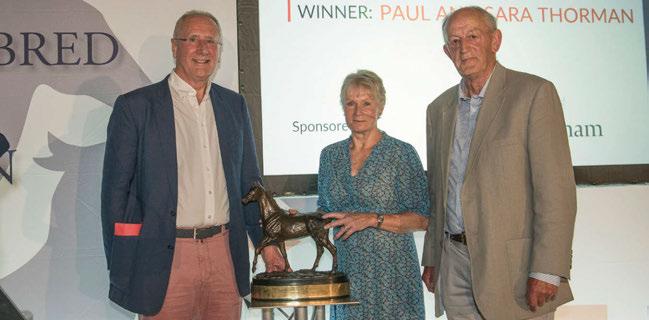
concepts that contribute to the longterm future of the breed and sector.
To nominate an individual for any of
the awards, please email info@thetba. co.uk. Nominations close on Monday, April 7 at 5pm.
This year’s equine health educational event, named ‘Nature or Nurture’, takes place on Thursday, July 17 at the Granary Barns, Woodditton, near Newmarket from 10am to 4pm.
Using findings from TBA-funded veterinary research projects, a selection of speakers will explore themes
around genetic predisposition, the role of epigenetics, environmental influences and management factors in shaping the health, and characteristics and prospects of future thoroughbred racehorses. Booking for the event is via the TBA website where full details can be found.
Winner of the Dawn Run Hurdle at the Cheltenham Festival last season, Golden Ace added another Graded contest to her CV in February’s Kingwell Hurdle at Wincanton. Bred by Meon Valley Stud and a daughter of Golden Horn, she proved strongest at the end of the contest to defeat the frontrunning Burdett Road. The pair went on to run first and second in the Champion Hurdle at the Cheltenham Festival.
Don’t Rightly Know, whose black-type win in January saw her breeder Julian Selby named Breeder of the Month for February, added another Listed prize to her record at Exeter, picking up well in desperate ground to defeat a couple of Irish-trained rivals.
Another mare who has been in superb form this term over fences is the Elizabeth Gordon-Lennox homebred Telepathique, who also faced decent Irish opposition at Huntingdon in the Listed Lady Protectress Mares’ Chase. The seven-year-old was winning for the fourth time from five starts over the larger obstacles and won going away for her maiden black-type victory.
Small breeder Jon Saxby was celebrating his biggest winner to date when Battle Born Lad took the step up to an extended three miles in his stride for an all-the way success in the Grade 2 Prestige Novices’ Hurdle at Haydock Park in the middle of the month.
At the beginning of the month, the Cheveley Park Stud-bred St Pancras, now in the care of Toby Lawes and running in the Grand National-winning colours of the Wates family, won the Listed Scottish Triumph Hurdle at Musselburgh.
Another juvenile to score in black-type
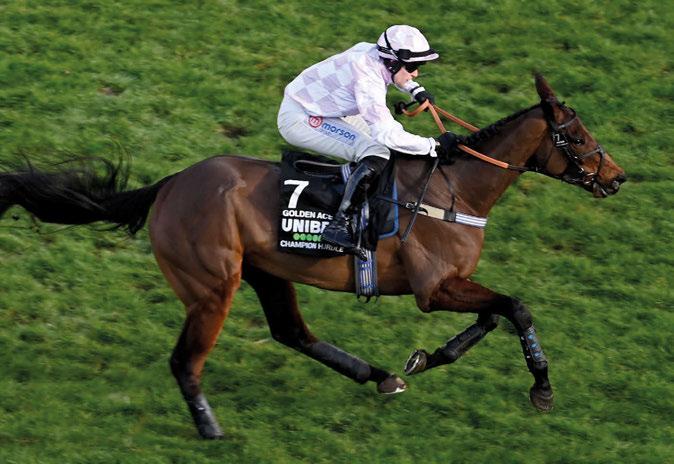
company was the Fairway Thoroughbredbred Bacchanalian, who scored in a Grade 3 juvenile hurdle at Naas.
On the level and at Lingfield Park, Harry Angel’s son Marshman, bred by Highbank Stud LLP, ran out the winner of the Listed Kachy Stakes, whilst another stakes sprint in the month, the Hever Sprint Stakes at Southwell, went to the Richard Tucker-bred Clarendon House
The five-year-old mare Choisya has clearly enjoyed the sun and warmth that Dubai provides as the daughter of Night Of Thunder followed up her Cape Verdi win with a game victory in the Balanchine for Simon and Ed Crisford.
On the same card, the Godolphin-bred
Dubai Future, a son of Dubawi, captured the Group 3 Nad Al Sheba Trophy.
Switching to Bahrain and Goeman, a six-year-old bred by Cheveley Park Stud, won the domestic Group 1 Bahrain Mile in early February before running third in the Turf Sprint on Saudi Cup evening in Riyadh.
Later in the month and the Frankel gelding Zagato won the Listed HH Sheikh Nasser bin Hamad Al Khalifa Cup. The seven-year-old was bred by Meon Valley Stud.
At Doha’s biggest fixture of the season, the domestic Group 2 ITM Cup was won by the Brook Stud-bred General Panic Results up to and including February 28.
One of the TBA’s most popular benefits is the Racecourse Badge Scheme for Breeders (PASS) which gives members FREE access to watch horses they have bred, but may no longer own, run at over 1,000 fixtures at British racecourses.
In addition to racecourse entry, the TBA has introduced automatic text/email notifications to keep you updated when a horse you have bred has been entered to run.
Although the old-style swipe cards are still in use, the RCA has developed a system allowing members to
download the PASS card to your mobile phone. However, we always advise taking additional identification. Step-by-step instructions along with the fixture list can be found on the TBA website in the Advice and Info page.
To apply for this scheme, complete the online application form on the website, and once approved the application will run for the duration of the TBA membership.
The TBA has a strong relationship with the racecourses and are grateful that they appreciate the role breeders
play in the industry by allowing them to apply for complimentary badges to fixtures such as Royal Ascot and Cheltenham.
The process for this benefit is slightly different, so once your horse has been declared contact Alix Jones on 01638 661321.
To keep informed on other racecourse badge offers, keep an eye on the e-bulletin and on social media, as there are several meetings that allow TBA members complimentary access even if they do not have a runner.
As the 2025 foaling season is now in full swing, breeders are reminded that they must notify the General Stud Book (GSB at Weatherbys) of the birth of all British-bred thoroughbreds within 30 days of the foaling (day one being the date of birth), to ensure they are eligible to race. Notification is free of charge and should be completed via the GSB online portal at www. weatherbysgsb.co.uk.
The 30-day foal notification is an important component of the industry’s equine welfare strategy, providing transparency on the whereabouts of youngstock prior to entering licensed training premises and demonstrating the sector’s commitment to fullest possible traceability of thoroughbreds at all life stages.
Please be aware that 30-day foal notification is a different administrative process to foal registration, however, both may be submitted using the GSB online portal and can be carried out consecutively (but the 30-day foal notification must be done before the foal registration can be initiated).
If the 30-day foal notification has not been completed within the permissible timeframe or there are challenges to completing the process, breeders are advised to contact the traceability helpdesk at the BHA at their earliest convenience, either via email at traceability@ britishhorseracing.com or by phoning 020 7152 0180.


With the Cheltenham Festival in the rear-view mirror and the end of the British NH season on the horizon, attention turns to the TBA NH Breeders’ Awards Evening, which this year will take place on Monday, May 19 at the Hilton Garden Inn, the night of the Goffs Doncaster Spring Store Sale.
Sponsored by Goffs, the event acknowledges and celebrates the outstanding achievements of Britishbased breeders and British-bred horses across the 2023-24 National Hunt season. Breeders, owners, trainers and enthusiasts will come together to celebrate British-bred successes during the evening, which includes a
*NEW DATE*
Monday, May 19 –NH Breeders' Awards Evening, Hilton Garden Inn, Doncaster Join us in celebrating the best of British-breds from the 24/25 NH season, which is held on the evening of the Goffs Spring Store Sale. Tickets are on sale now
champagne reception, dinner and is followed by the awards ceremony.
Hearing the stories of how breeders got to where they are and how they formulated the mating of the stars of the show is what makes this evening so special. As well as stallion awards and racing awards, the Queen Mother’s Silver Salver, the highest award bestowed by the TBA’s NH Committee, is presented. Twelve months ago, Nick Luck took the award for his contribution to the event over its previous ten years.
Tickets are available to purchase via the events page of the TBA website and are priced at £75 per person.
and can be bought from the events section of the TBA website.
Wednesday, 9 July –Flat Awards Evening, Chippenham Park, nr Newmarket
Celebrate the success of all Flat breeders from the 2024 season in the stunning surroundings
of Chippenham Park on the evening before Newmarket’s July Festival kicks off.
For more information regarding events, as well as to see when regional events have been fixed, either contact the office or check out the regular e-bulletins.
Telepathique, a mare that David and Elizabeth Gordon Lennox failed to receive any interest in when offering her at the sales, has repaid the family in untold ways already.
There have been six victories, almost £90,000 in prizemoney and perhaps, just as astonishingly, an even greater amount of Great British Bonuses (GBB).
The seven-year-old soared higher still on fairly home soil, earning Bury St Edmonds-based Elizabeth Gordon Lennox the honour of February’s TBA Breeder of the Month with a commanding victory in the Listed Lady Protectress Mares’ Chase at Huntingdon.
“The story began when we bought the mare, Rhetorique, from David Futter,” she explains.
“We sent her to Gentlewave a couple of times and finally to Telescope, then we sent the foal to Doncaster but there wasn’t a single bid.
“So we held on to her and sent her to Jamie Goss, who breaks horses near Banbury. We’d sent him one before that he hadn’t been impressed with but straight away he said, ‘This is a good one’.
The Gordon Lennoxes, who have military and farming connections, have known trainer Lucy Wadham and her husband Justin from the days their point-to-pointers would spend summers on their land.
The connection has continued with Banjo Girl, who was third in a Listed hurdle at Cheltenham’s April meeting back in 2018.
“We’ve shared a horse called Trincomalee with Hot To Trot, who have made it very fun, and Lucy is a lovely person to have horses with, she has done very well with all of them,” Gordon Lennox continues.
“If you look at Telepathique’s page, almost every horse on it has big black type, some of it in France and it’s still producing. I showed it to Justin Wadham and he said he hadn’t seen many pages like it. So it’s all there in her breeding.”
Telepathique won a bumper and a novice hurdle but had been absent for almost a year before making a stunning debut over fences at the end of October in a handicap qualifier for the Queen Boudicca Series.
She had found herself some new fans.
“Fakenham really do look after you and the first time she ran there, it was half-term,” says Gordon Lennox.
“We took the grandchildren, gave them each a five-pound ticket and they each won 20 quid. They couldn’t believe it, couldn’t wait to go shopping. They’re only seven and five but I’m afraid they’re gamblers for life!
“She won by 11 lengths and Tom Cannon was looking round to see where everyone was. She ended up winning the final, winning at Warwick and got the black type.”
Even after the Lady Protectress, where Telepathique defeated the reigning champion and smart Irish mare Brides Hill, Gordon Lennox can see further improvement to come.
“She hadn’t raced right-handed before Huntingdon, so she was wasting time jumping to the left,” she said. “Tom has ridden her most of the time, he’s got lovely hands and gets on beautifully well with her.
“She doesn’t need a lot of schooling and although she jumps quite low, she gains at every fence.”
A particular pleasure for the couple has been having Telepathique back on their farm on her holidays.
Although Rhetorique moved on, they are also breeding from the unrelated Banjo Girl.
“We both used to hunt, David used to go in the cross-
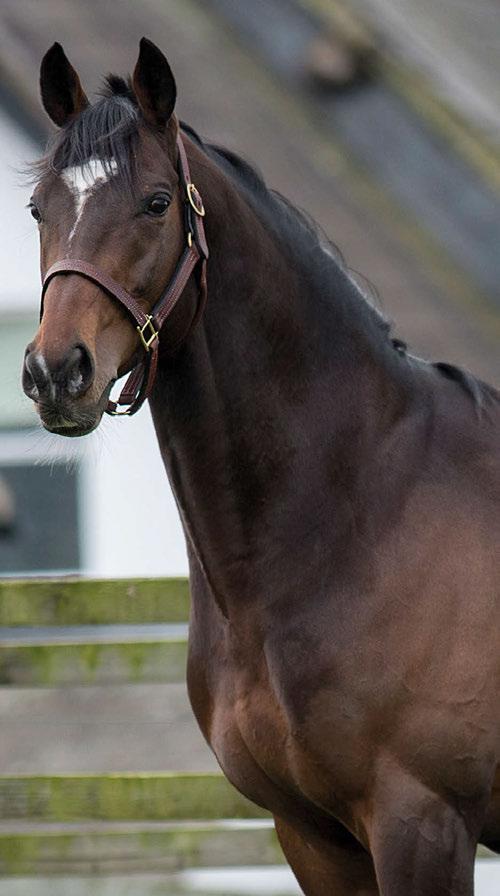
Telescope: recent Listed-winning chaser Telepathique is from the second crop of the Group 2 winner
country races, and horses have always been in our lives,” says Gordon Lennox.
“The colours are my father’s from when he was point-topointing in the Army and thankfully they hadn’t been taken. We’ve still got the original woollen ones, a bit moth-eaten, but they’re still there!”
Gordon Lennox does admit that, when she had asked Wadham in passing at the start of the season whether she might have anything for Cheltenham, the reply was that Telepathique was about the only one she had in mind.
This modest and somewhat overwhelmed owner-breeder was never thinking that far ahead.
“I’ve had messages from friends all over saying well done, it’s given a lot of people a lot of fun. It’s a dream come true really, the whole thing,” she says.
“Another wonderful thing about all this is the GBB [£100,000 in bonuses won]. She has paid for herself not only this year but last year and several more years.
“We’ve had our horse account for about 30 years and this is probably the first time it’s ever been in the black!”
GBB Bonuses: £100,000
Owner: Stephen Bough & Dan Skelton
Breeder: R D & Mrs J S Chugg
Trainer: Dan Skelton
GBB Bonuses: £100,000
Owner-breeder: Mrs Elizabeth Gordon Lennox
Trainer: Lucy Wadham
GBB Bonuses: £100,000 SPACE
Owner: Deva Racing Sv Breeder: Whitson Bloodstock Ltd Trainer: Olly Murphy

The ITBA kicked off its 2025 education programme with the popular Breeding Preparation Seminar, covering all things foaling and helping breeders prepare for the busy season. Over 120 people attended the event, hosted by the Irish National Stud’s Cathal Beale with a panel of Bena Hickey (Anglesey Lodge Equine Hospital), Des Leadon (Swordlestown Little, Irish Equine Centre), Olive O’Connor (Olive O’Connor Bloodstock) and Micheál Orlandi (Compas Equine). A recording of the seminar is available to ITBA members or by request to Hannah at hmarks@itba.ie.
Leadon commenced the seminar, giving an update on the current matter of the new EU Commission proposals for animal welfare in transport, as well as the status of the EVA vaccines and protocols for the upcoming season. Following the batch failure of EVA vaccine Artervac in 2023, extensive lobbying has been done by the ITBA, EFTBA and Leadon to allow the import of the live vaccine Arvac for 2025. A special licence has been approved and the Department of Agriculture will be holding a review meeting later this season to try to smooth the process for the 2026 breeding season. The key takeaway is to comply with the
International Codes of Practice and check with each individual stallion farm for their requirements.
Getting ready for foaling
O’Connor took the audience through a whistle-stop tour of how to get your mare ready for foaling. She advised of getting your mare in early and relaxed in her new environment. This allows you to start observing her and get to know her behaviours. It is important to have your worming and vaccinations up to date, and make sure you have a clean environment and stable.
Other points include having your foaling kit ready, checking your mare every 15 minutes and making sure to record the time the water breaks. This can be especially important should you need veterinary intervention. Following the birth, you want to observe the mare and foal for signs of healthy and unhealthy behaviour. The most important thing is not to panic!
your mare back in foal
Following the foaling, Hickey went through the steps of how to get your mare back in foal. She advised getting the history of the foaling (hard foaling, retained placenta etc) and making sure you have a clean endometrial swab.

If you check at the foal heat and everything is normal and healthy, there should be no problem covering, especially for a younger mare. If you don’t cover at the foal heat, it is important to stitch the mare to maintain a clean uterine environment. Hickey commented that teasing is one of the best ways to promote uterine health post foaling. She emphasised the importance of starting early to try to fix problems and the various veterinary interventions that can assist breeders for the coming season.
Foaling kit essentials
• Important numbers and contact information
• Clean buckets
• Tail wrap or vet wrap
• Soap
• Iodine
• Lubricant
• String or baling twine
• Charged mobile phone
• Halter and lead ropes
• Scissors
• Towels or rags
• Pen and paper
• Flash light
• Refractometer
Now that the mare is ready to be covered, Orlandi took attendees through the basic steps of what to consider when planning your matings. The simplest question to ask is: what is your budget? He advised to try to use a proven stallion if you can, and buy a maiden mare or filly with an active pedigree. You will be married to the mare for the next few years and want to give her the best possible start to become your blue hen.
Orlandi emphasised the fact of not breeding or buying a mare if she’s not worth it. You have to think commercially and want the resulting offspring to have value in the market. He advised of taking a long-term approach and watching what other successful breeders are doing.
Thursday, April 3
Auto-enrolment information
webinar
Wednesday, April 9
The importance of gut microbials for mare and foals


Total print readership exceeds 20,000 per month – Europe’s most widely read monthly horseracing magazine
Saturday 20 th September (Group 2) 6f
NEW £50,000 BONUS: Newbury Racecourse Executive are offering a £50,000 bonus*, for any horse who wins any two-year-old race at Newbury in 2025 (prior to the Mill Reef Stakes) & then goes onto win the Mill Reef Stakes in 2025.
*t&c apply. £40,000 will be paid to the winning owner & £10,000 to the racing staff of the winning trainer.
Entries Close: Tuesday 29th July (International entries close day before)
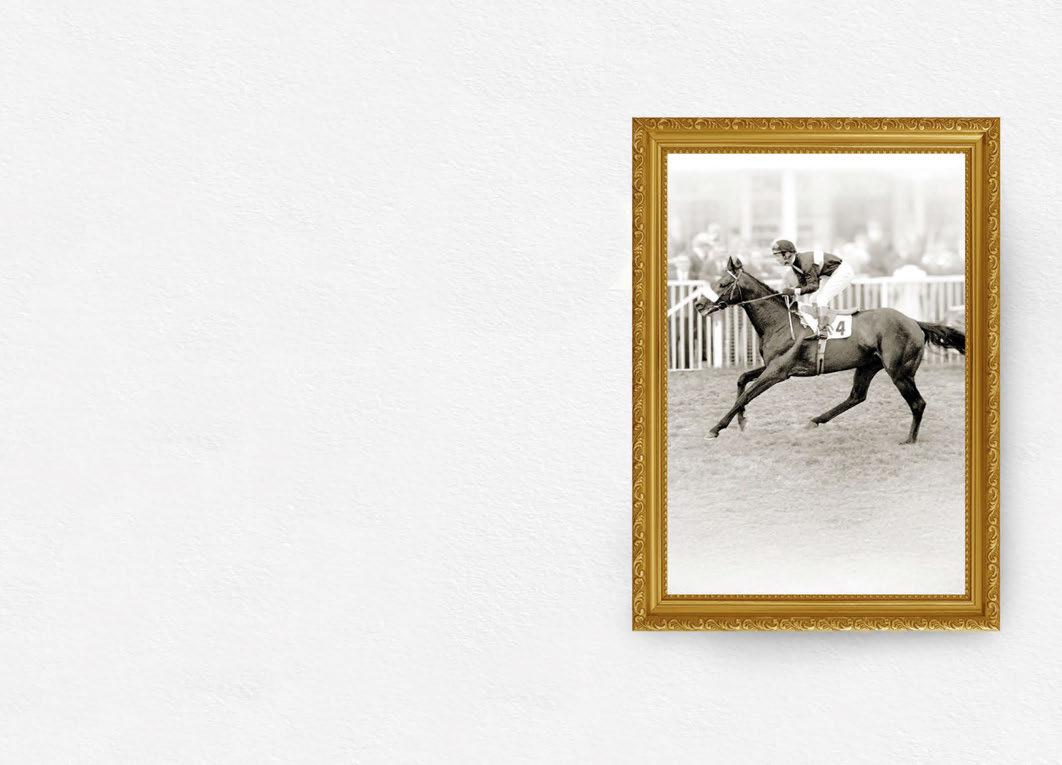

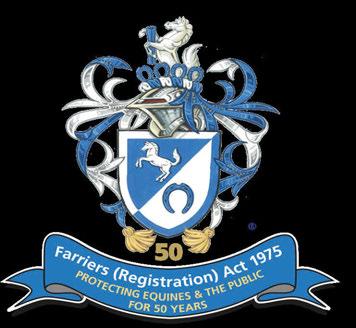
£125,000
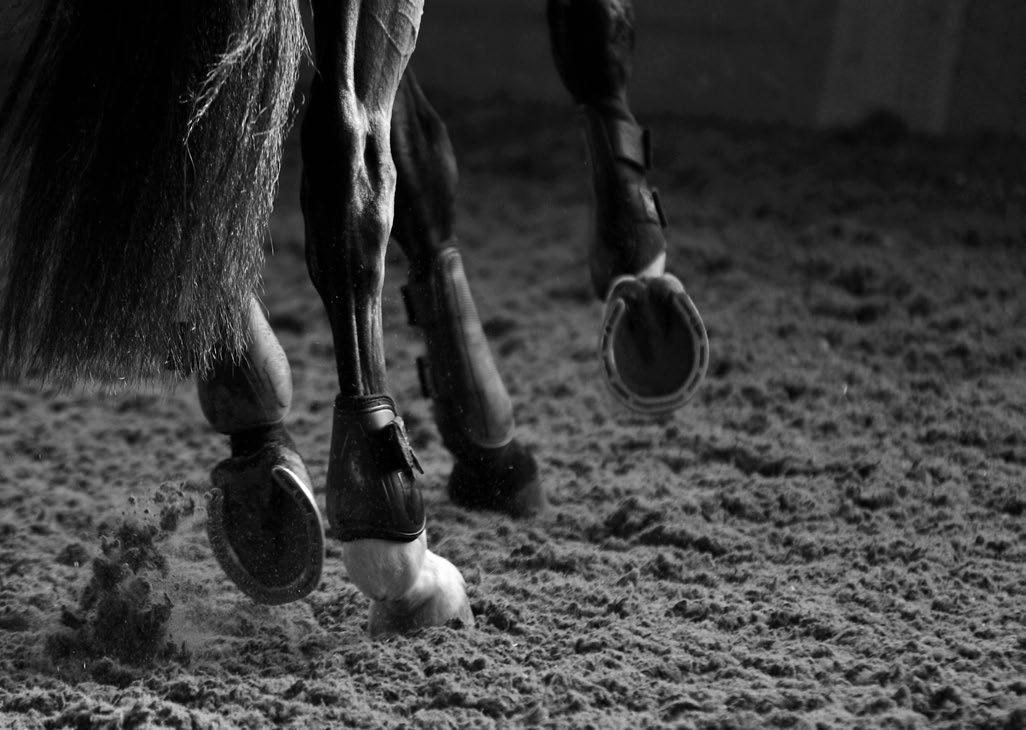
Graham Dench asks our jury the big questions: What can be done to give the return of turf racing on the Flat a stronger and less disjointed start?
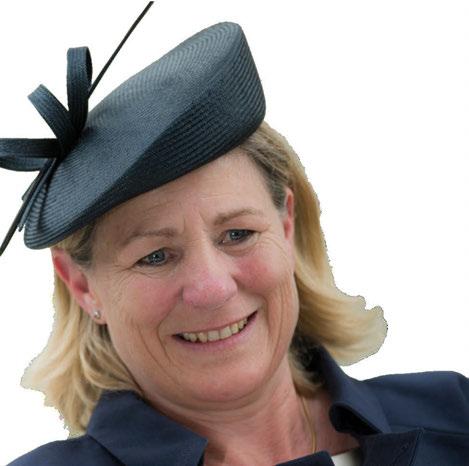
It’s a nightmare these days and it’s something I’ve thought about a lot, but I’m not sure what the answer is. I think part of the problem is that we’ve lost some turf courses so the emphasis after Doncaster is still on the all-weather. For example, we used to race at Folkestone after Doncaster, but that’s gone, and there always used to be turf Flat racing at Warwick on Easter Monday, but that’s gone too. We clearly need more turf meetings in the opening weeks, but where are they going to come from?
Some people have suggested we need to move Newmarket and Newbury closer to Doncaster, but it’s cold and horses won’t be ready. If you do it the other way around and move Doncaster closer to Newmarket and Newbury, you are likely to get firmer ground and then where do the soft-ground horses go?
I agree that something needs to be done, but every action has a consequence, and the timing of the Grand National and of Easter in particular make it really difficult. This year it’s really bad because Easter is particularly late. I can’t remember Newbury ever having come the week before Newmarket.
“
The answer is to delay the start of the turf season until after the Grand National and just before what in a normal year is the week of the Craven and Greenham meetings.
There’s not enough excitement about Lincoln week and the start of the turf because the Grand National is looming large and tends to overshadow it. Then for a fortnight or so afterwards there are just the odd turf meetings here and there. I think it would be a different story if you could stage Doncaster just before Craven/Greenham week, and you would also hopefully attract a better calibre of runner even just a couple of weeks later, particularly among the two-year-olds, who will be a lot more forward by then. It would give a real big bang to the start of the season if you went from the Lincoln straight into the Craven and then on to the Greenham, all in a week.
Imagine if the Brocklesby was run two weeks later. We already tend to think of turf racing starting in Craven week and we didn’t have anything ready for it this year. But two weeks is a long time in a two-year-old’s development and if it had been that bit later you would tend to get a better-quality race and we could have had one of ours running for something like £74,000, including Goffs’ £50,000 bonus.

“ The problem we have is that a lot of the tracks that used to stage turf racing in the first few weeks of the season are gone now, and those that we still have aren’t keen to mess their ground up so early in the year. I know I’m going back a bit now, but the good all-weather meeting they have at Kempton on Lincoln day used to be a decent turf fixture, and then there would be Folkestone, Warwick and so on. They might not have been the most glamorous of fixtures, but they provided a bit of continuity.

I think that the answer is to try and fill some of those gaps in the period between Doncaster and the trials meetings, which is when most of us in the industry tend to think of as the real start of turf racing. However, finding turf courses that would step in and take those fixtures is easier said than done – and is a question for better minds than
Lord Grimthorpe Racing Manager to Imad Alsagar
At the risk of stating the obvious, in the days before the all-weather and before Dubai and so on, the Lincoln meeting heralded the start of the Flat racing season full stop, not just Flat racing on turf, and as such it was much more of a landmark in the calendar. The spring double with the Grand National was quite a thing then, but now I’m afraid the start of the turf season at Doncaster has become rather isolated, as the opportunities available elsewhere mean that the Lincoln and supporting card aren’t necessarily the number one destination.
I’m sure there are better brains than mine thinking about it at ARC, but it’s not something that will be fixed overnight. It needs an incremental, co-ordinated marketing campaign to try and build up some of the races into something that people want to see and want to bet on, then at least that would generate more excitement. Money alone isn’t the solution to adding a bit of glamour though, since the advent of so many lucrative opportunities abroad mean that the pool of horses of a certain level available in Britain is being stretched.
Even if you succeed in building up a bit of momentum, there’s still going to be a lull between the Lincoln meeting and the Craven when nothing much happens for a few weeks, and my own view is that moving the meetings closer together isn’t going to make much of a difference. We have to consolidate, we have to support and we have to innovate. We need a campaign to drive a bit of excitement to make Doncaster a bit of a festival in its own right.

“
It’s the fortnight after Doncaster that is mainly the issue and I can understand why there’s no great appetite from courses to step forward and fill those midweek gaps before the Classic trials meetings at Newmarket and Newbury, after which we are up and running and there’s no longer a problem. From a clerk’s point of view, it’s just not a very attractive proposition. Some dual-purpose courses will still be holding jumps meetings, and the last thing you want to be doing at a Flat turf course in the early weeks is trashing it on soft ground.
I see Bath and Yarmouth now start way earlier than they ever used to, but it’s not straightforward. I suspect it’s not necessarily commercially attractive and that the number of Flat turf courses that would be ready and able to step in is in any case very limited. I know that my tracks couldn’t realistically start much earlier than they do traditionally, which this year meant April 22 at Epsom and April 25 at Sandown. To start any earlier, I would have had to have brought forward fertilisation and irrigation and so on by a good couple of weeks, and Sandown needs that six-week gap after Imperial Cup day.
If you started with a blank sheet of paper, you might say that the week after the Grand National is where the Lincoln meeting would sit best, but Easter will always play a part and this year moving to the Saturday after the National would have meant a clash with the Scottish National and also the Greenham meeting, which this time comes the week before Newmarket. That wouldn’t have made any sense, so it’s a difficult one.


” “ George Baker
I think a much clearer start to the grass season is needed. We currently almost have three separate starts – Doncaster, Craven week, which is what a lot of people regard as the start, and then Guineas weekend, which is when the championships kick off. Also, on the same day as the Lincoln, there’s a very strong all-weather fixture at Kempton, and that’s where a lot of the top jockeys and trainers are, so that’s not ideal. I understand why the championships start when they do, and QIPCO has been an amazing sponsor, but I think grass
racing should start when the championships start, or the other way around if you like. I think it needs a complete revamp. I appreciate that if you start turf racing in Craven week then obviously Doncaster loses one of its signature fixtures, but I think we have to find a way.
If anything, I feel even more strongly about the end of the season. It can’t be right that the climax to a strong apprentice title race plays out at Catterick on Champions Day. There shouldn’t be another grass meeting that day. Even if they aren’t riding at Ascot the award winners should be there receiving their honours in front of their peers. The way the jumps season finishes is messy too. Is there a case for finishing it on Grand National day? I think there is.
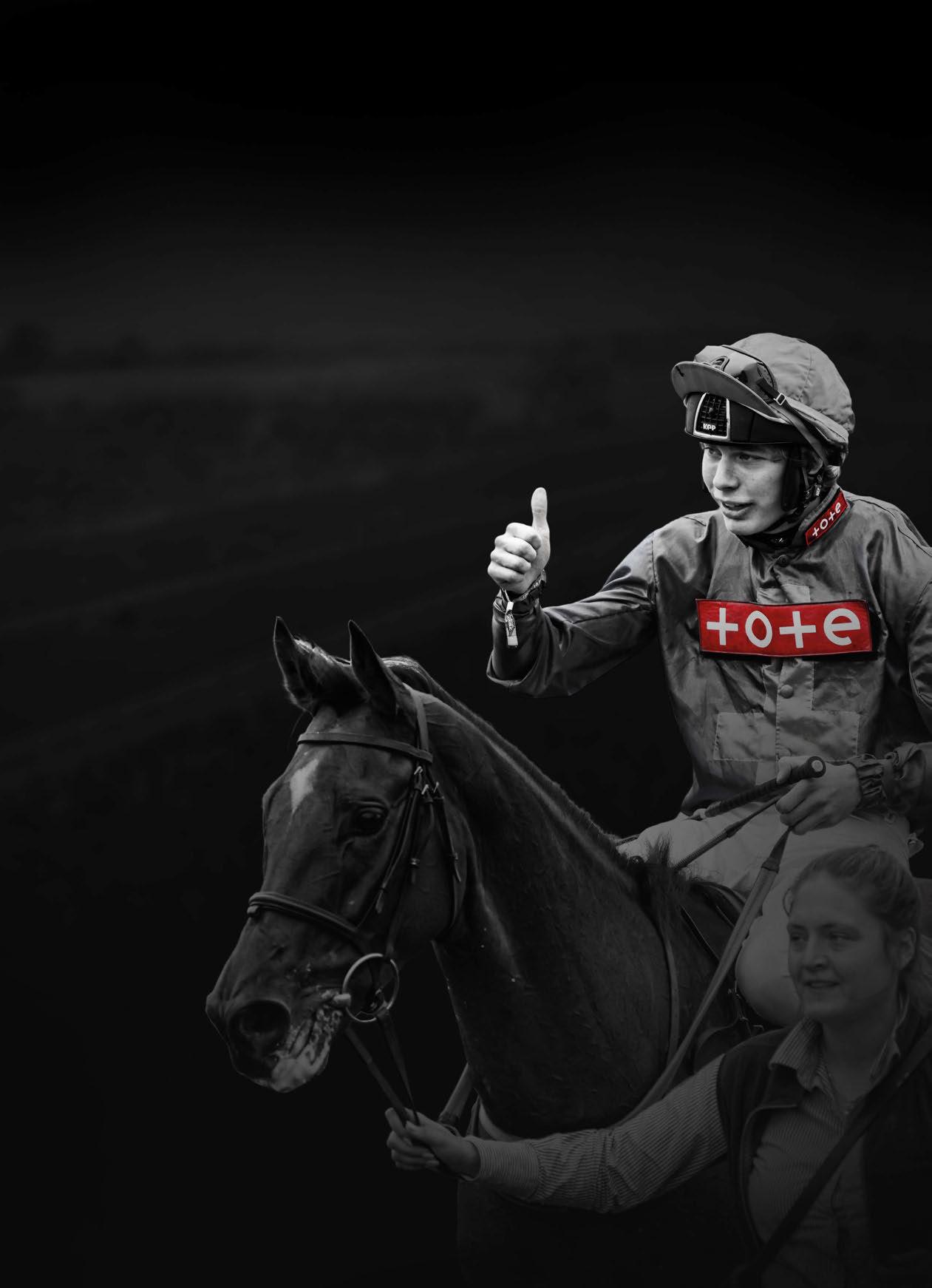
Owners who secure sponsorship for their racing activities may be able to register for VAT, enabling them to reclaim VAT on racing expenses and on the purchase price of their racehorse. The Racehorse Owners Association runs the Tote Owner Sponsorship Scheme which members can access to secure sponsorship. For more information on how the scheme works visit www.roa.co.uk/sponsorship
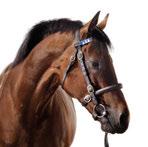
73% More three-year-old winners than any other stallion, and with by far the best winners/runners ratio.
Night Of Thunder
€150,000 Oct 1, SLF
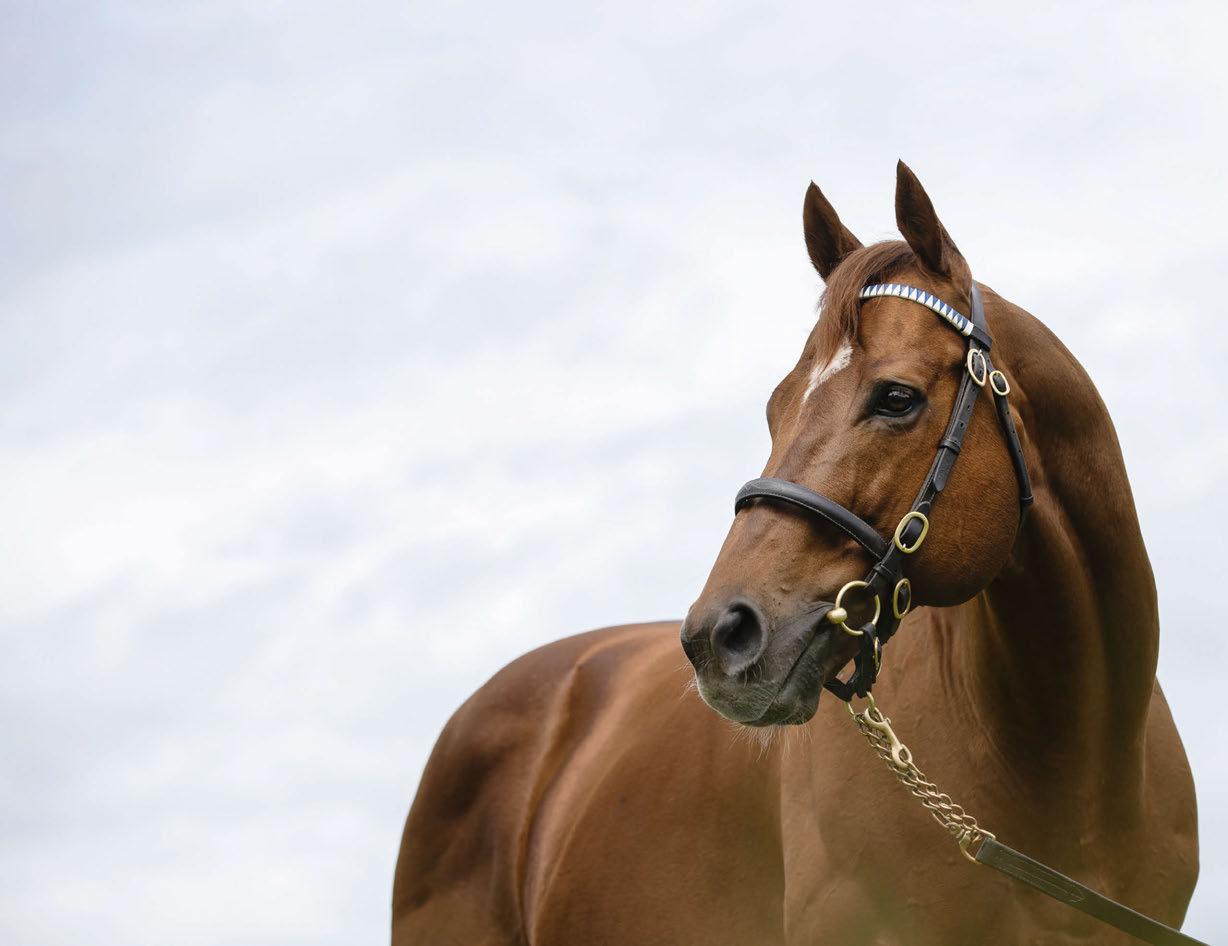

This foal is an absolute star. He has everything you want and a temperament to die for. A beautiful mover and button correct.’
Modern Games
John Foley, Bally volane Stud
£30,000 Oct 1, SLF
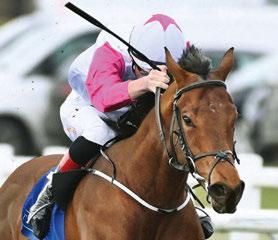
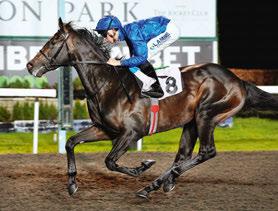
Opera Ballo, second in the Guineas betting: one of several Classic prospects by Dubawi’s highest-rated son. Ghaiyyath
€20,000 Oct 1, SLF
And we haven’t even mentioned Too Darn Hot... Please call +353 (0)45 527600 or +44 (0)1638 730070 to discuss your options... THE DUBAWI DYNASTY
Power Blue wins the first Irish juvenile test, earning a higher rating than all three subsequent G1 winners who won the equivalent race. Space Blues
€16,000 Oct 1, SLF

And next from a sure-fire sire line: the G1 Royal Ascot sprinter now with first-crop yearlings.
Naval Crown
€9,000 Oct 1, SLF